John and Mary Kormendy: Australia 2025
This web site shows pictures from our 11-day birding out of Darwin in NW Australia as part of our 3.5-month summer/fall 2025 trip. This was a Victor Emanuel Nature Tours private tour led and expertly guided by Scott Baker.
Until November 1, 2025, we will be on a Seabourn Pursuit cruise from Australia to Chile. That cruise is densely scheduled, and most of my time will be used to keep my web site for the Seabourn trip up to date. There will be a little time to start to post the most important pictures from our previous Singapore and the present-web-site Australia birding tours. I will catch up as soon as possible, but it will take time, because further travel to Antarctica, Australia again, and Borneo is planned for early 2026. This paragraph will state when the present web site is finished.
The purpose of this web site is to catalog our memories, not to showcase the trip for public readers. So I include pictures that are not very good when they document sightings that are important to us.
Trip Birds
It was extraordinarily hard to settle on trip birds -- we saw so many that were so special. Honorable mentions go to many birds, including Gouldian finch (both the red-faced and black-faced morphs), Barking owl, Mangrove golden whistler (photo of life bird with lunch), Little kingfisher, Yellow chat, Spinifex pigeon, and Brown quail (small covey that came for an evening drink at a convenient water hole).
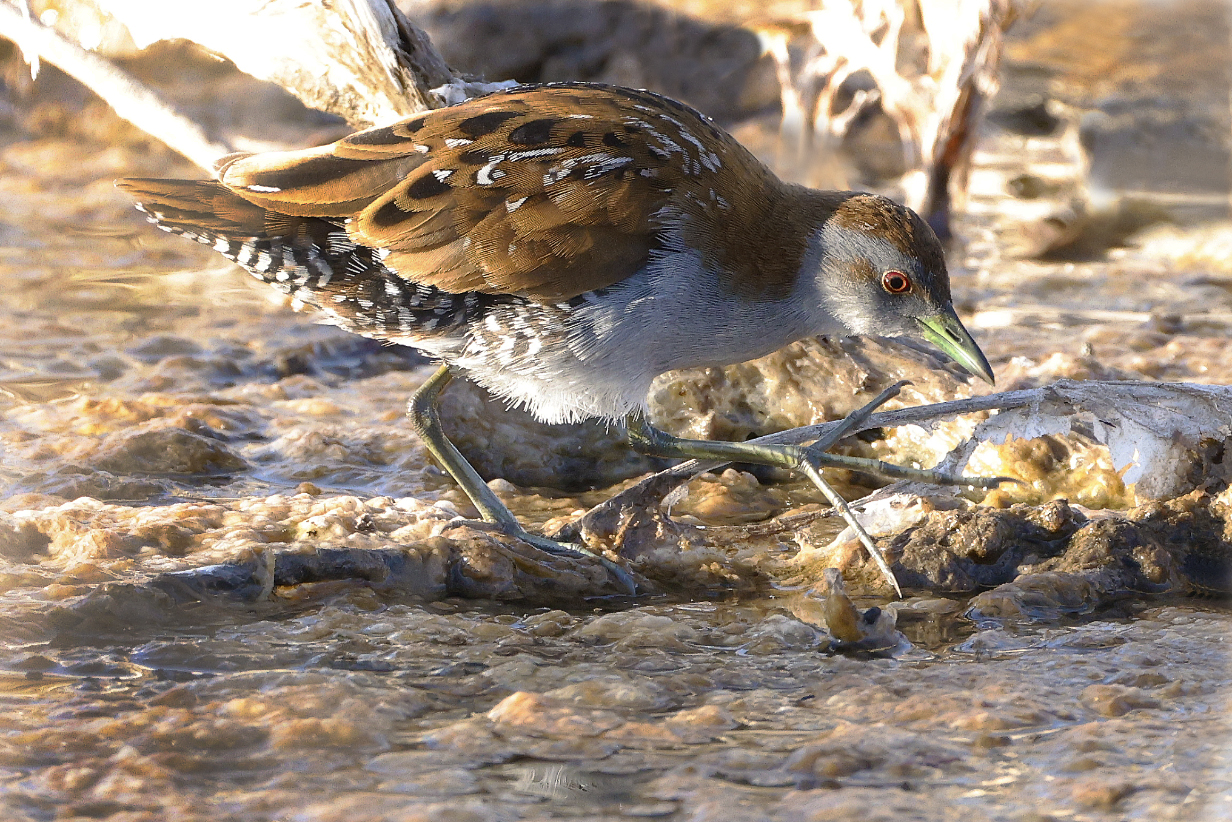
Baillon's crake -- a surprise on August 10: first sighting of the season -- has to be my number 1 trip bird. I have been looking for it for years.
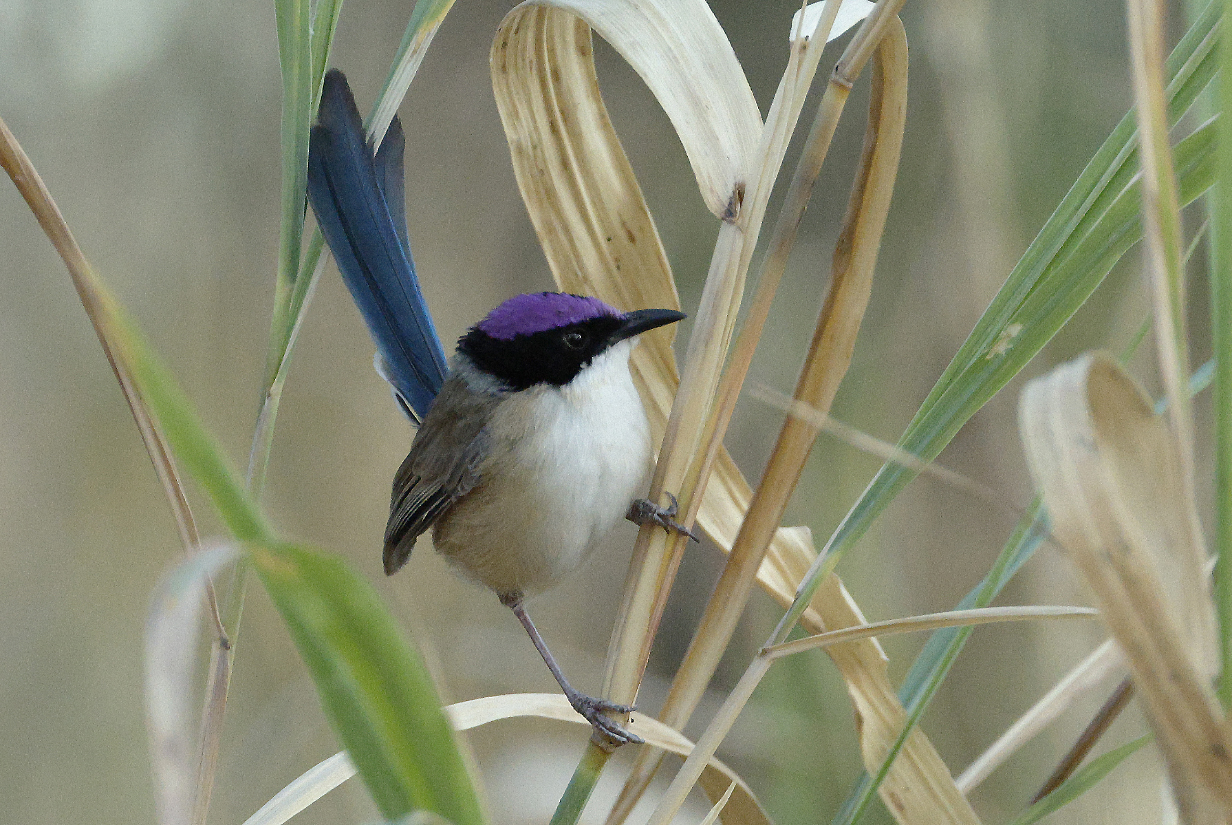
Purple-crowned fairy wren is my second trip bird. A new fairy wren is always a special occasion, and this dominant male and his harem were in-your-face beauties.
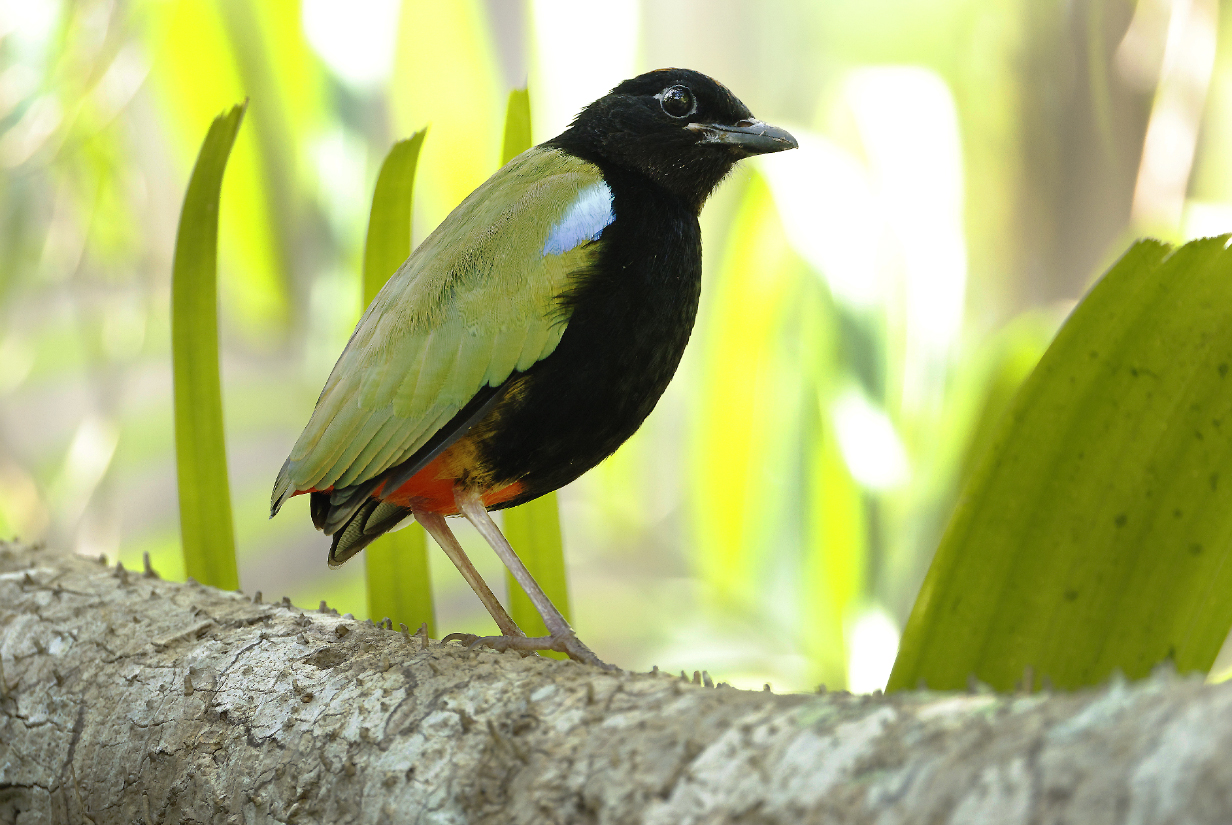
I finally settled on Rainbow pitta as my third trip bird: Always gorgeous but usually too secretive to get a good picture.
The Birds
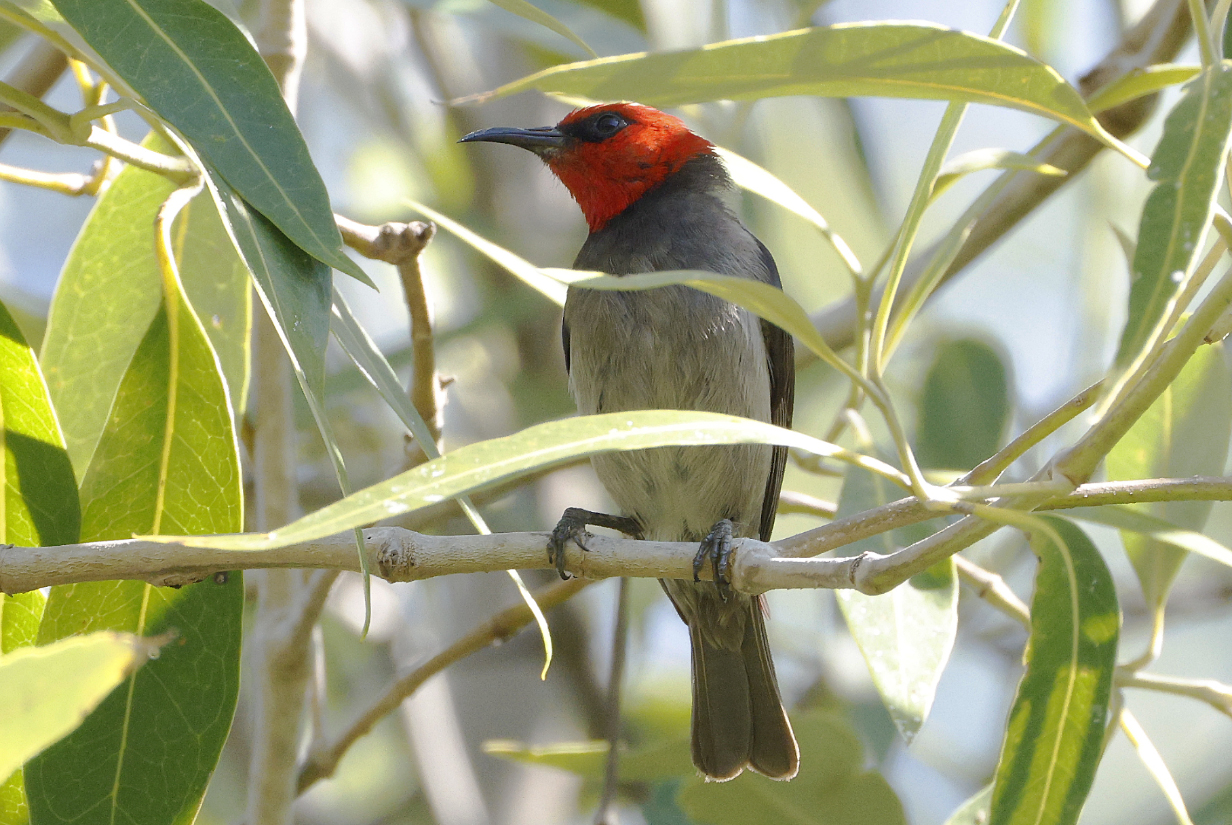
Red-headed myzomela -- a honeyeater -- near Darwin
On both our first and second days of the tour, i. e., August 3 and 4, 2025, we had long and
liesurely boat tours on Buffalo Creek -- for both of us: birding at its best. Seats with
backs are comfortable and allow us to look high above us (othewise difficult for our not-so-young,
stiff necks. The pace is relaxed; the environment is calm; the boat is an excellent "hide", and
we feel very close to nature. Plus we had superb views of birds, many of which are difficult
in other conditions. For example:
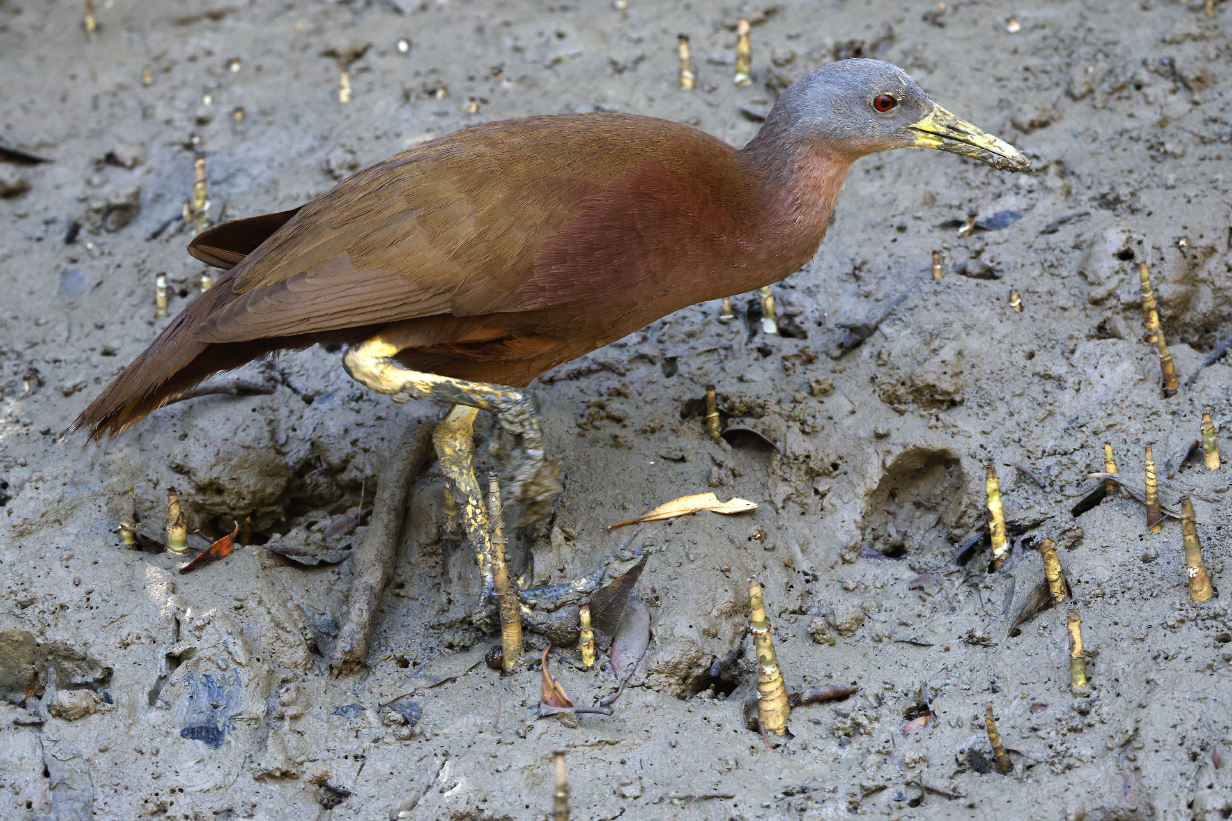
Chestnut rail was new for Mary today. It was also my first chance to photograph this species. In fact, although rails are famously elusive, we saw 9 of them during a very enjoyable and productive first of two boat rides out of Darwin on Buffalo Creek.
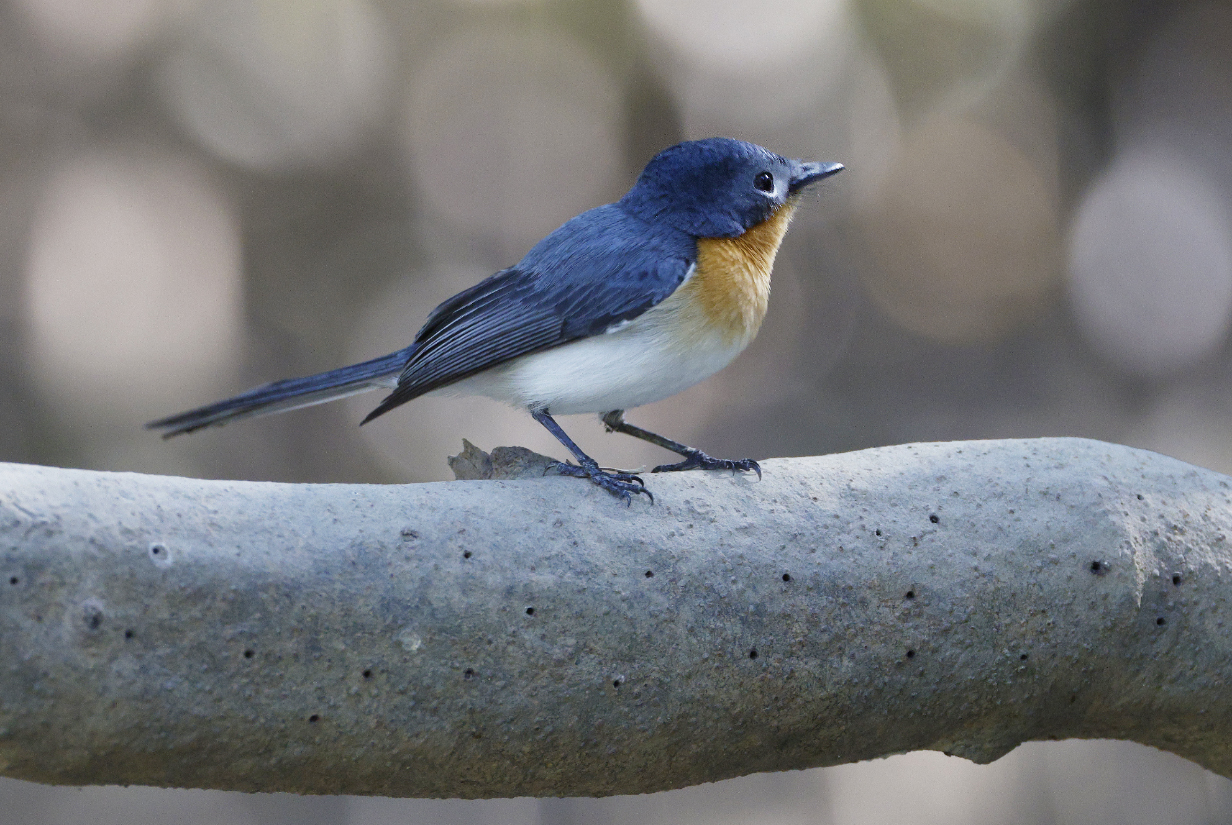
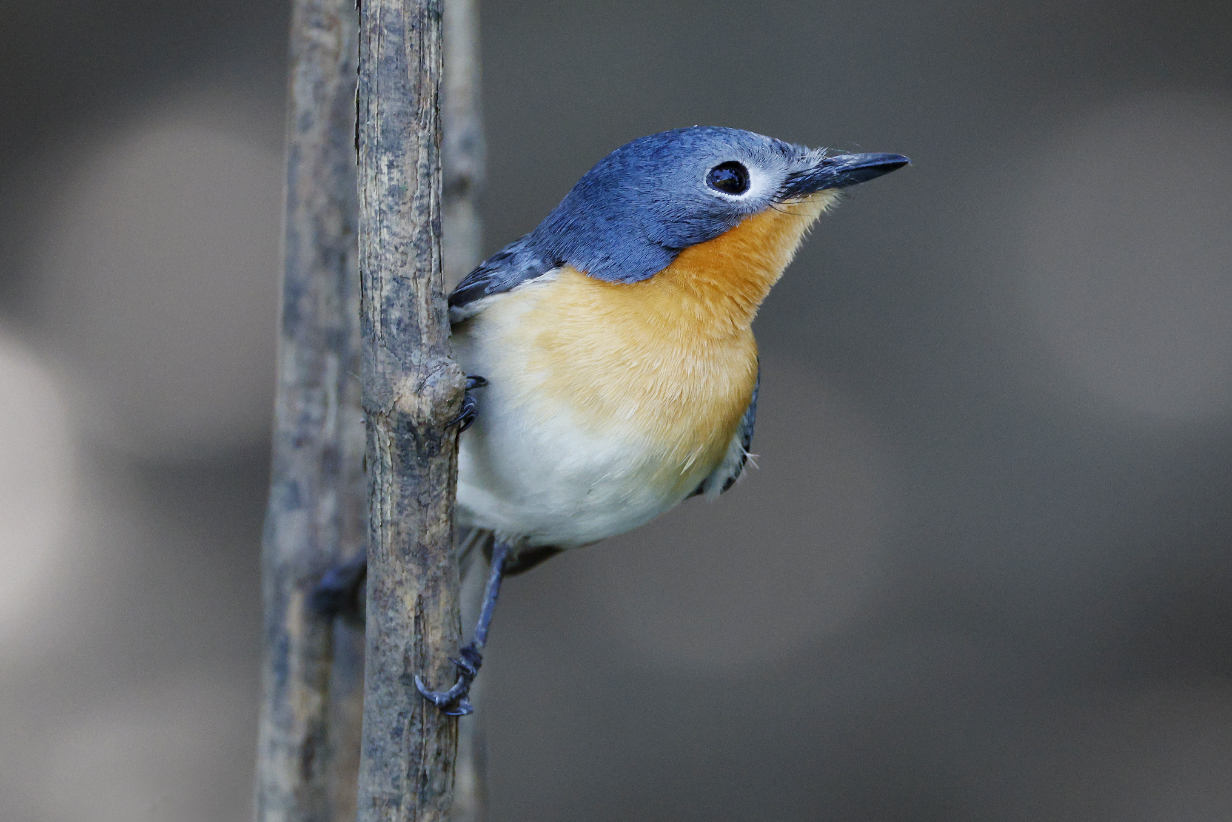
Broad-billed flycatcher (new today for Mary)
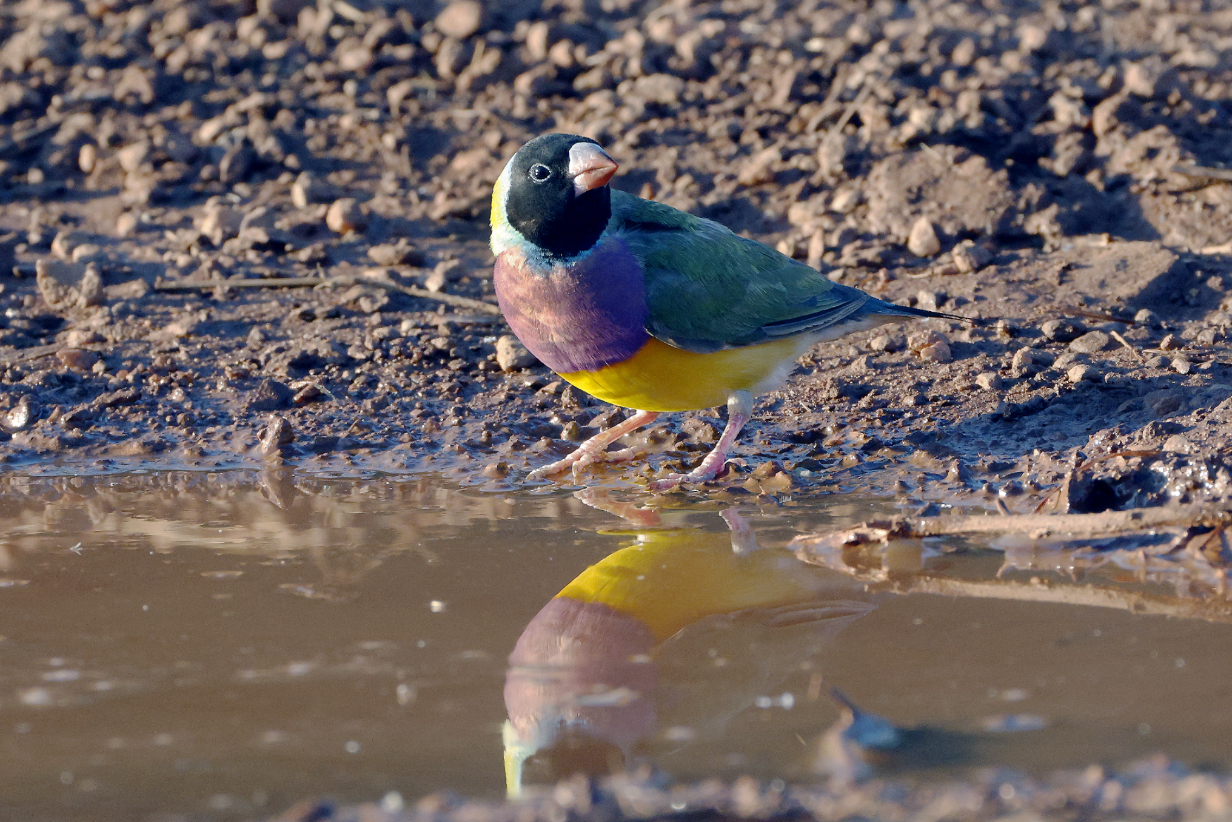
Gouldian finch in early morning sunlight (I had wanted for a long time to photograph Gouldian finch, and on Day 2 of this tour, I finally had my chance. Birders in the Darwin area had set up a small water hole that they refilled on many mornings and that was, by now, well known to the local finches. They and many other birds came as soon as the sun rose and provided a reliable, peaceful, and heart-warming -- not to mention: rich! -- spectacle with which to start the day.
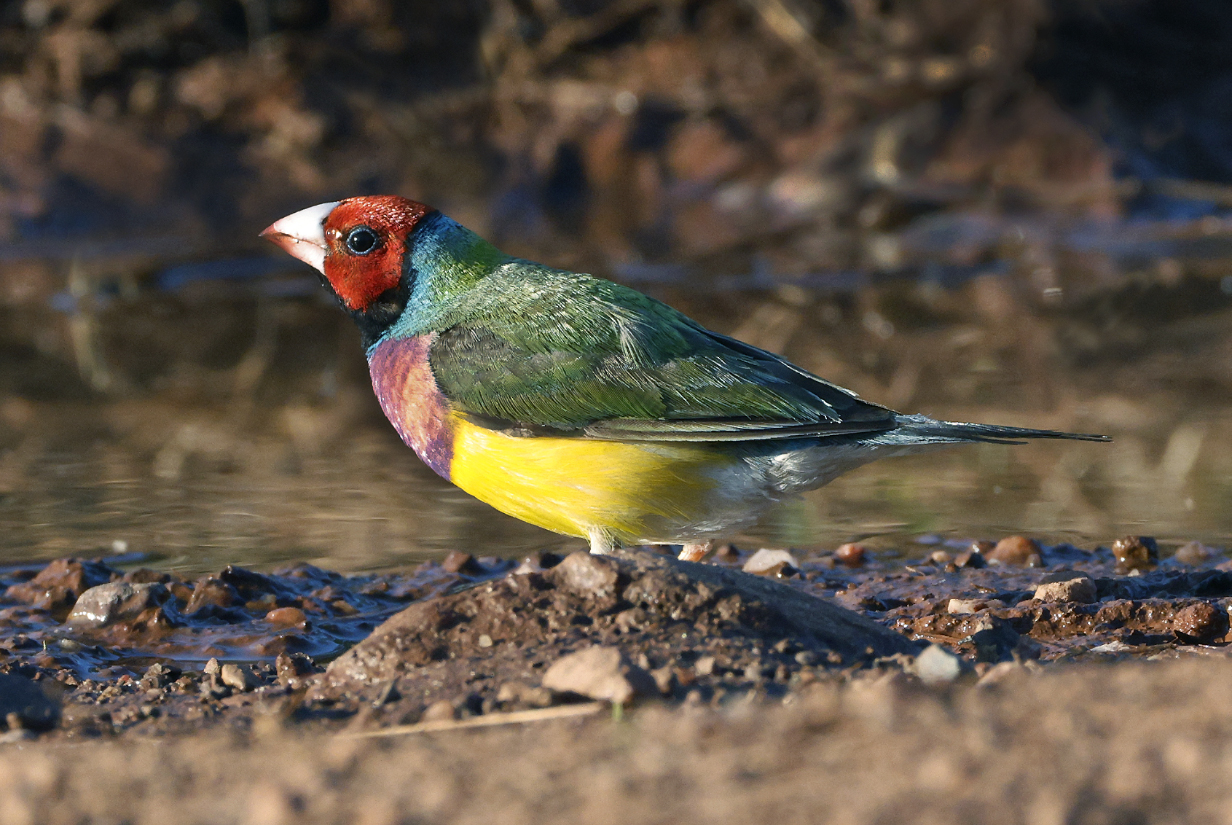
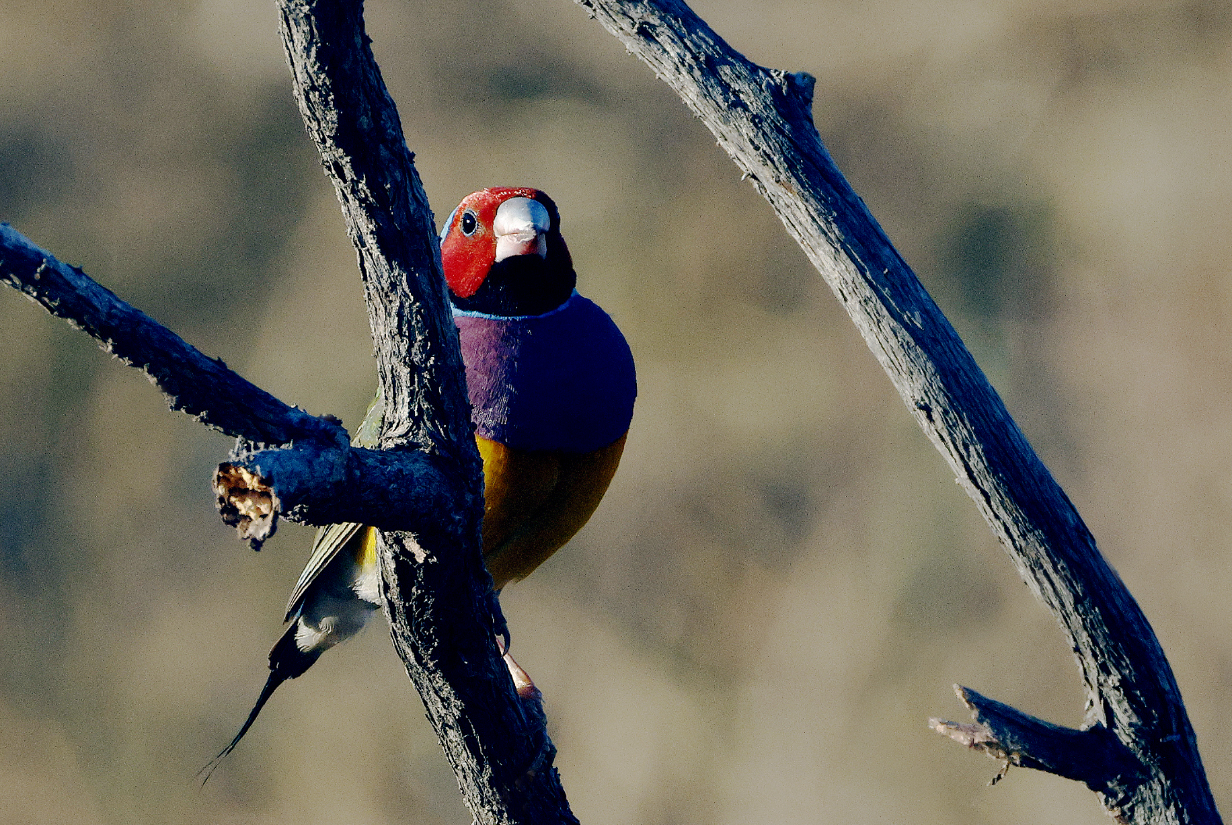
Gouldian finch -- red-headed morph (Purple chest does not look quite correct in red AM sunlight.)
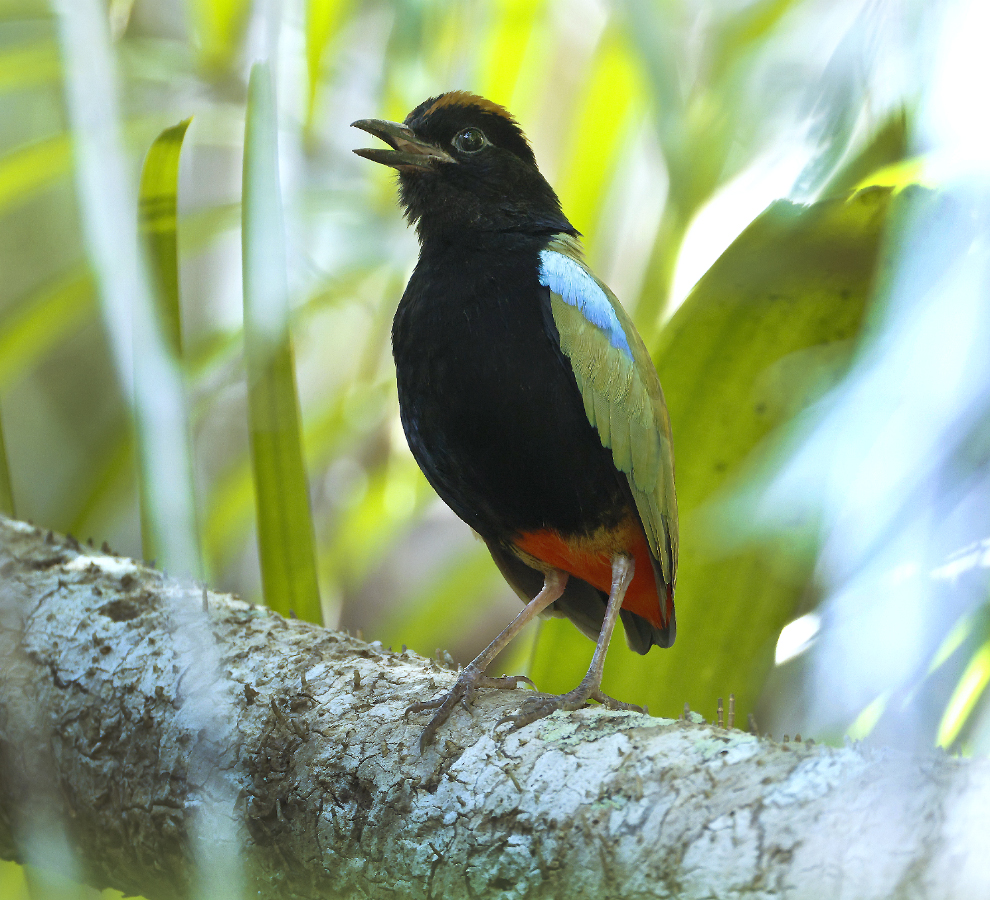

Rainbow pitta (A jewel that usually lurks in dark shadows; this one came out in good light to complain about our tresspass in his domain.)
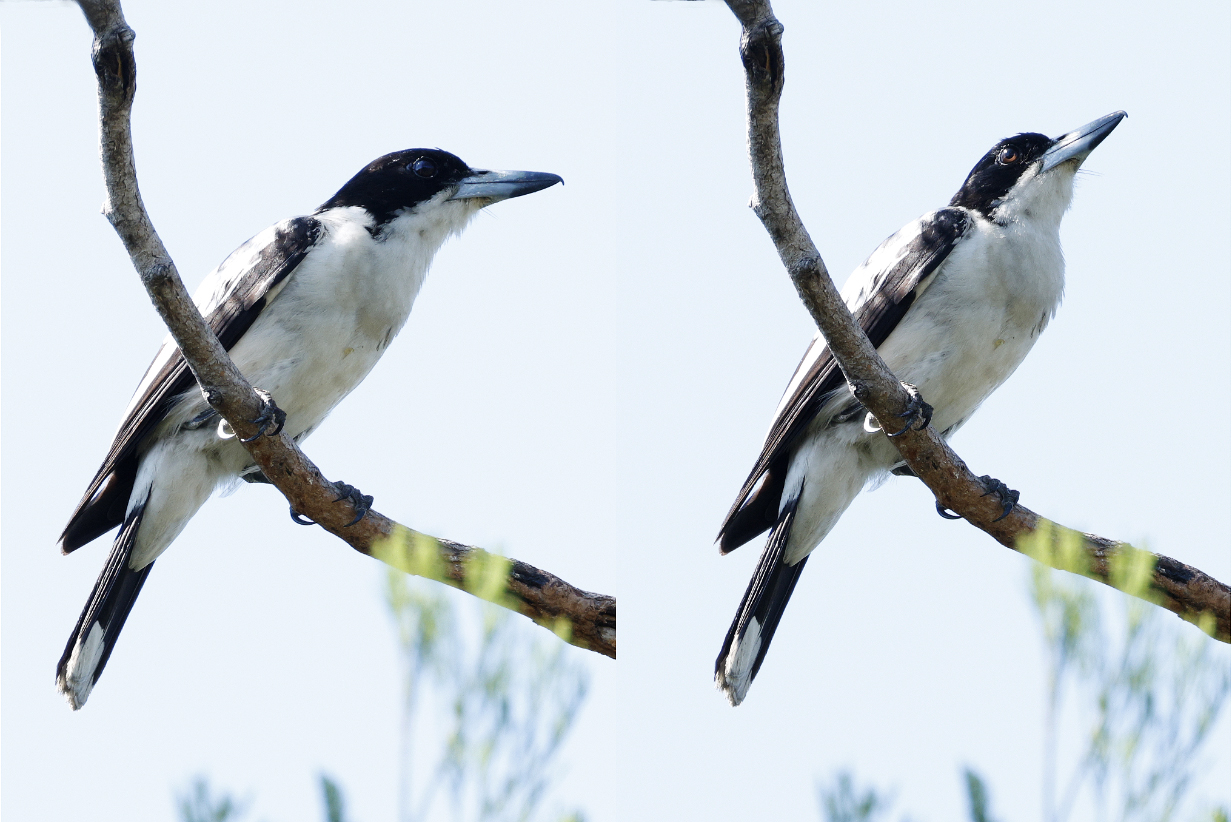
Split from Gray butcherbird, this Silver-backed butcherbird was John's first life bird of the North End tour.
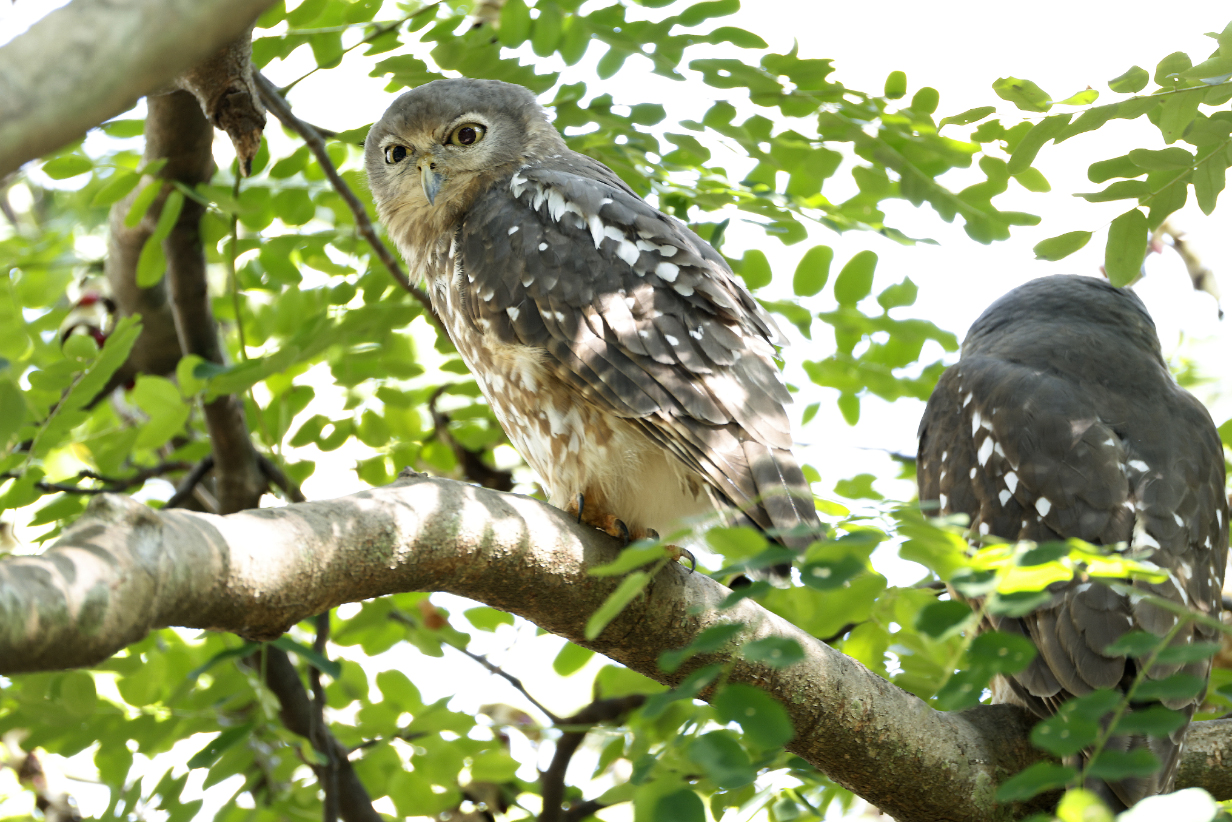
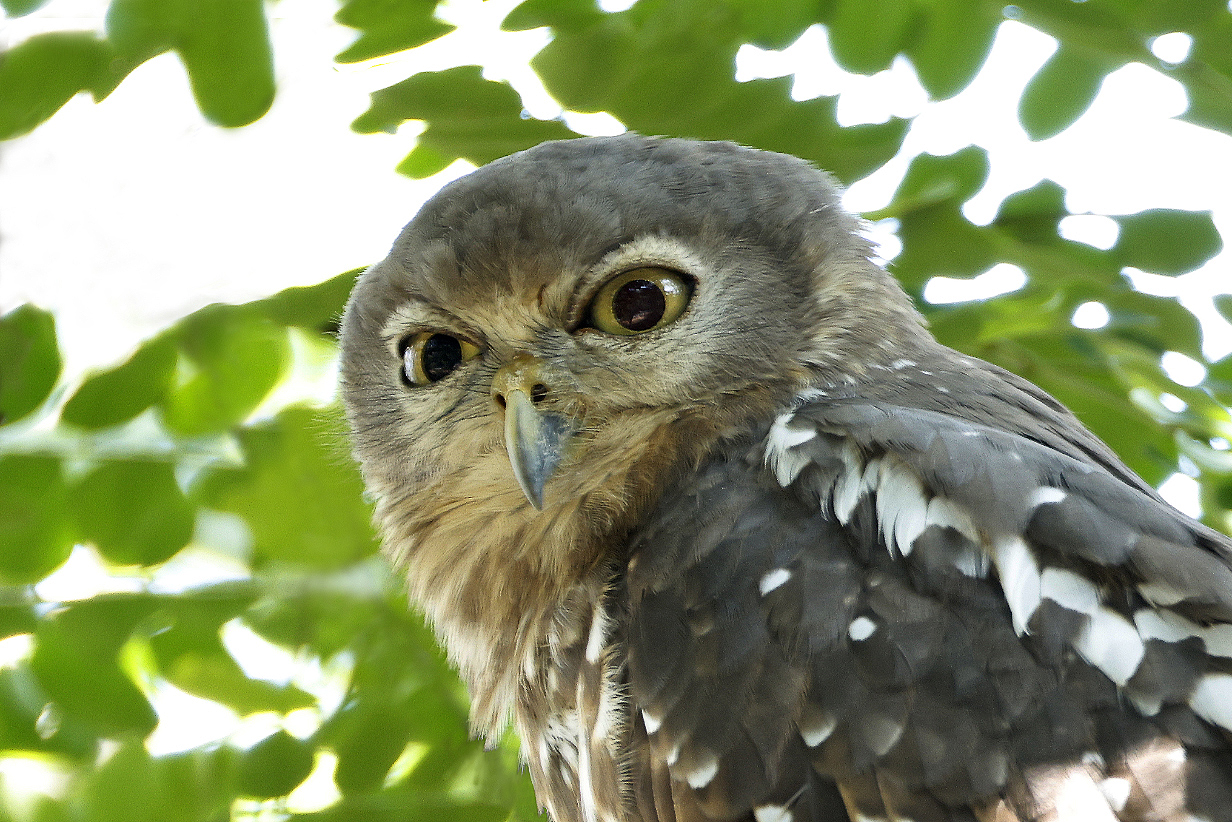
Barking owl was John's second and Mary's third life bird of the tour. We were lucky that these two birds were perched in daylight and conveniently located close to the Darwin Hilton hotel. The left bird looked down at us -- it and Mary even barked at each other.
On our second boat ride on Buffalo Creek:
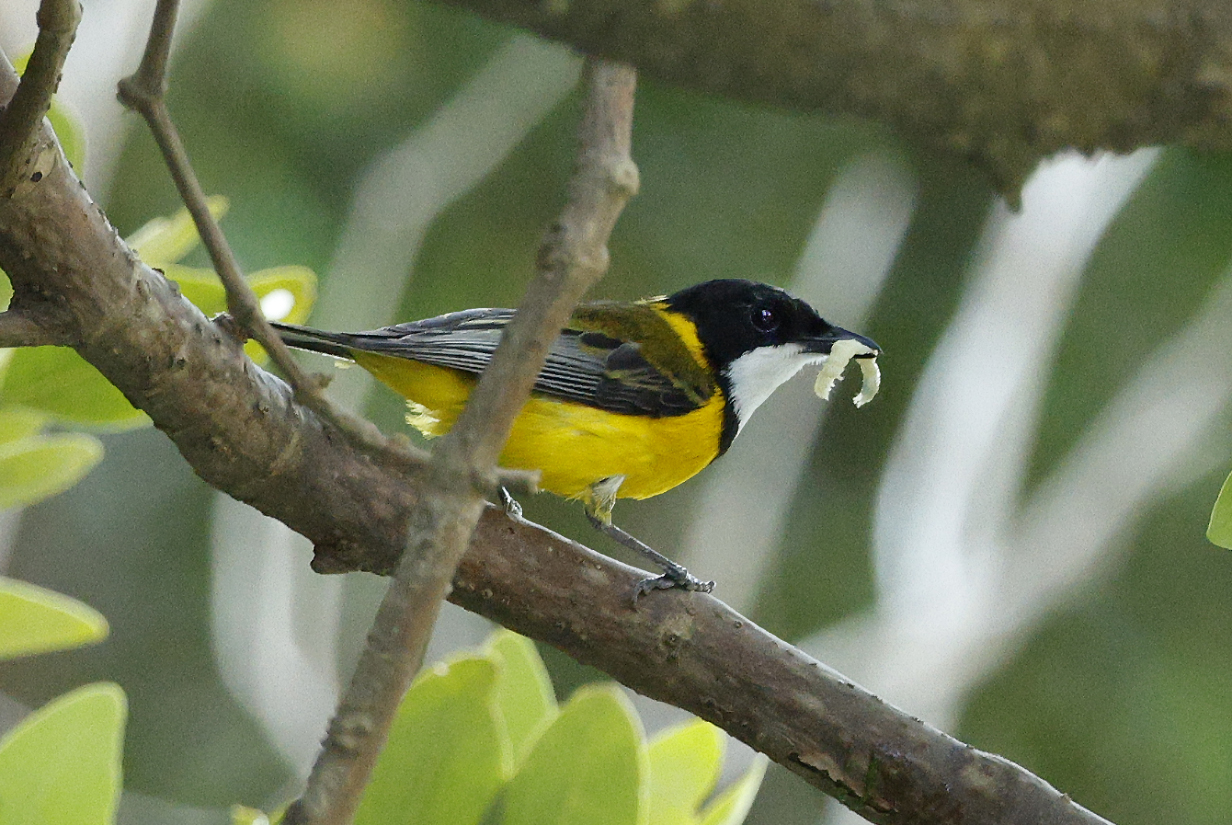
Black-tailed or Mangrove golden whistler was John's third and Mary's 4th life bird of the trip. This is a difficult bird, and we got good -- albeit brief -- looks.
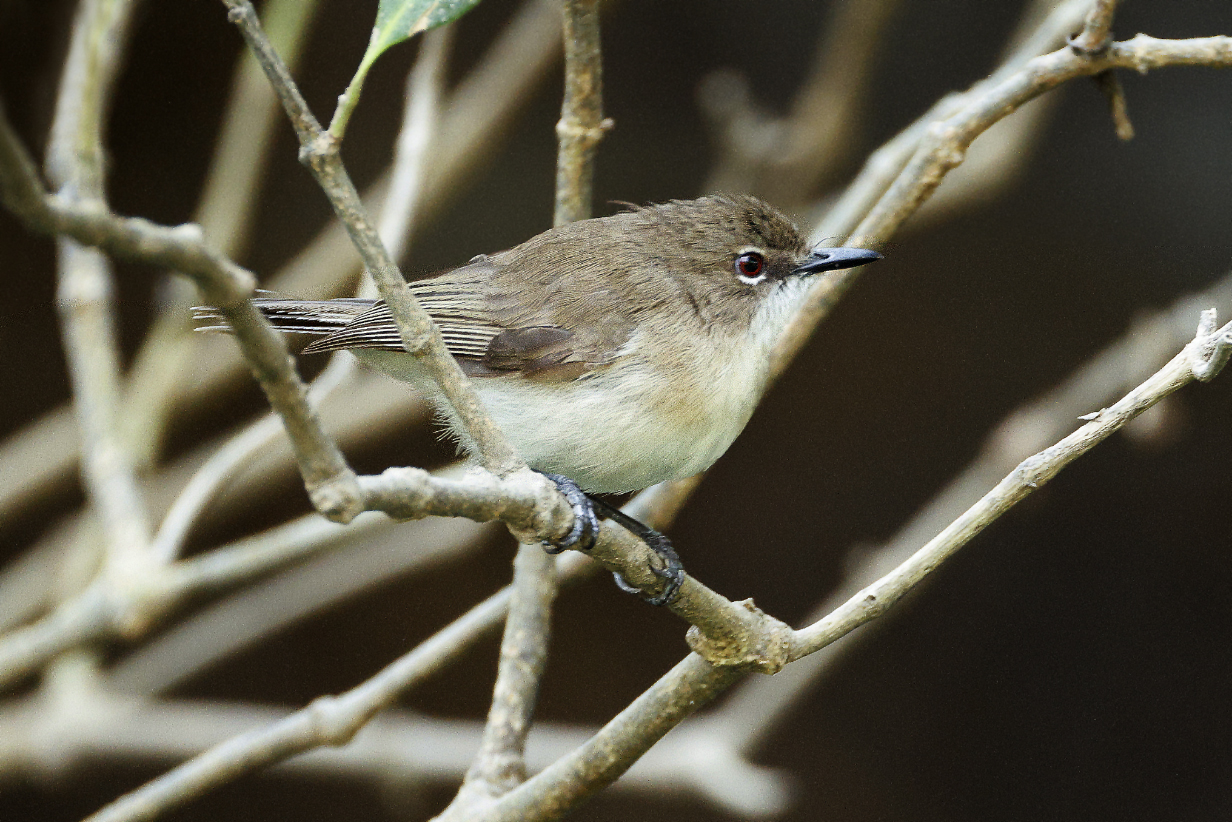
Large-billed gerygone (Note the red eye and the broken white eye-ring.)
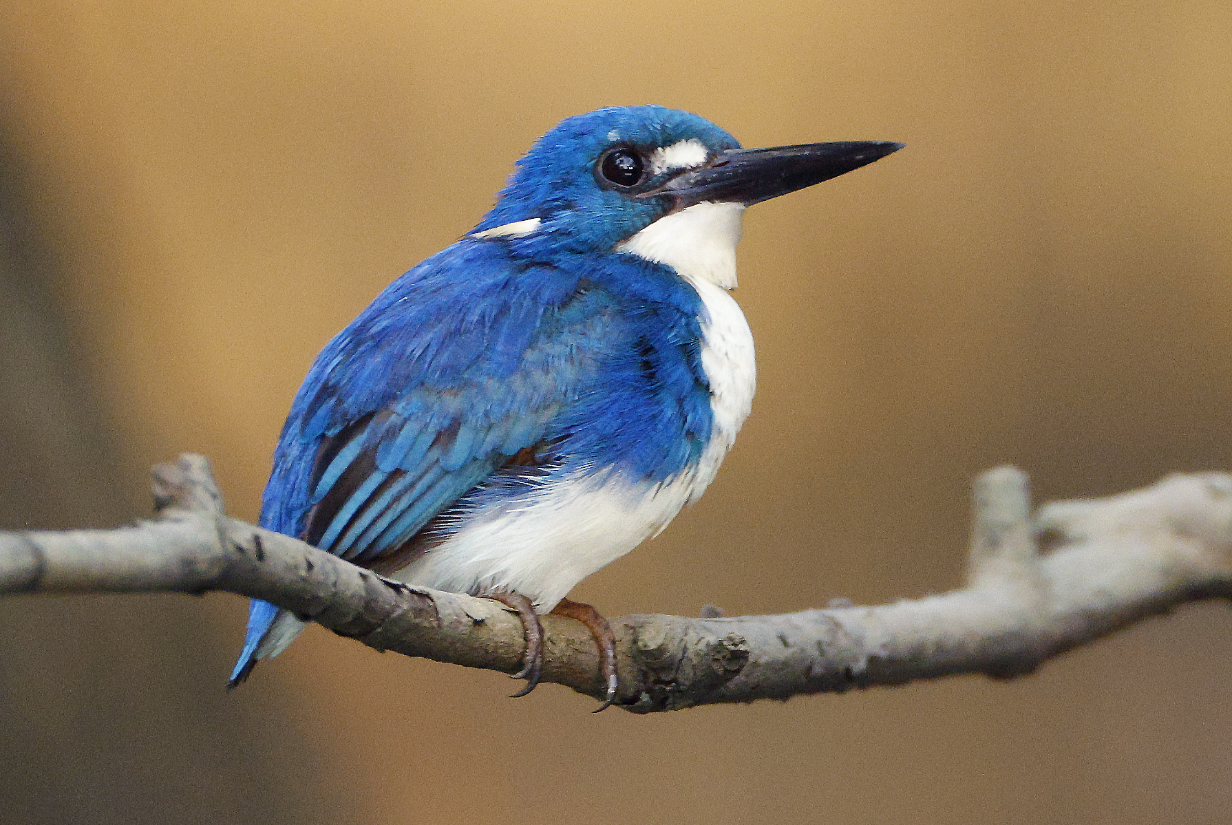
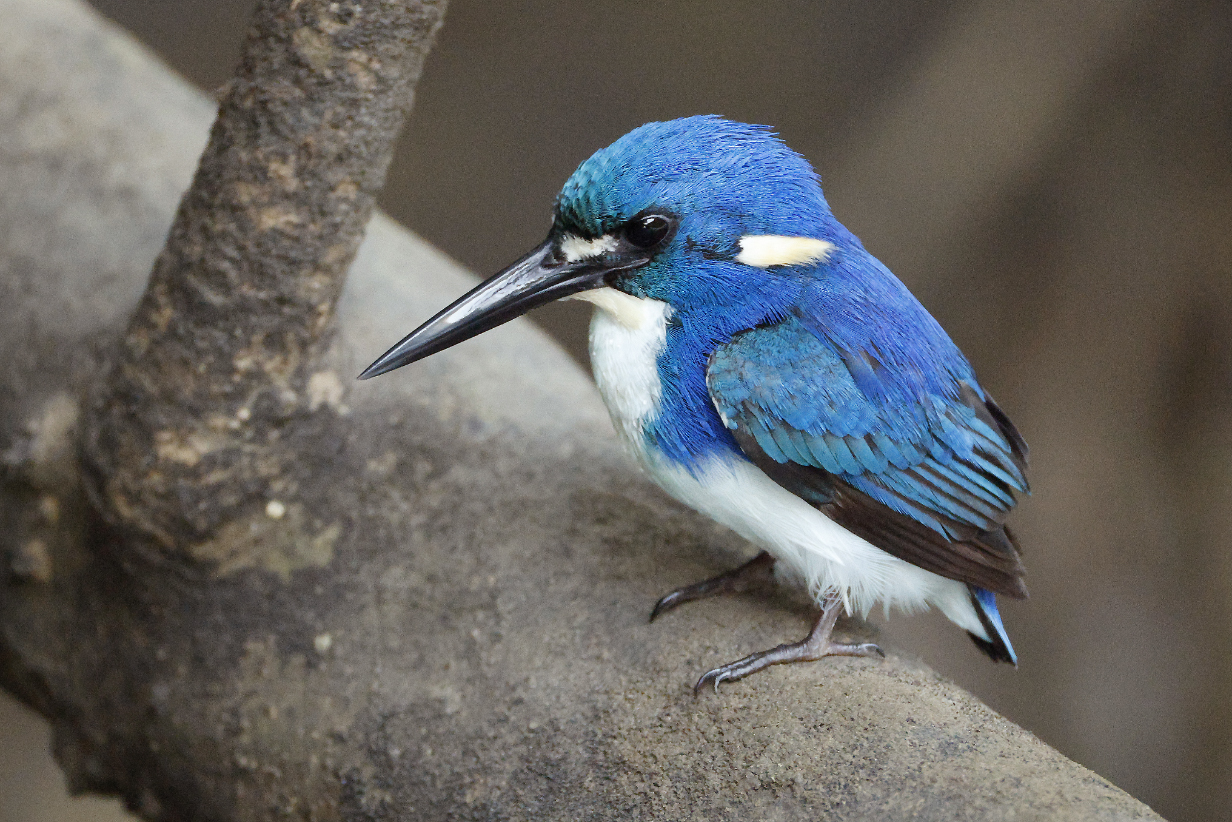
Little kingfisher was John's fourth life bird of the trip. It was not new for Mary. We saw 3 on the first boat ride and again three the next day on our second boat ride on Buffalo Creek. The above are different birds.
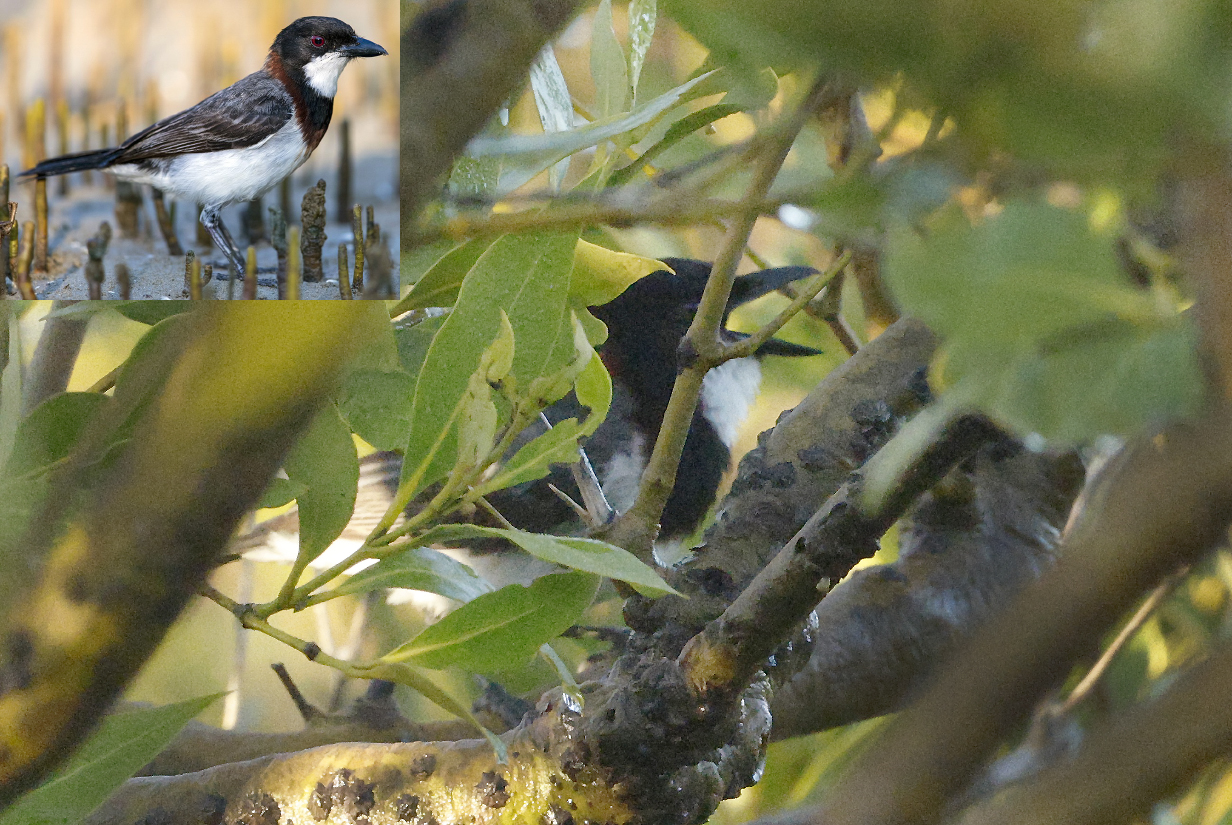
White-breasted whistler (This is John's life bird, the 5th of the trip. We looked for the bird at low tide in mangroves near Darwin. It was very elusive, as are so many mangrove birds. This picture was taken during its characteristic call, so it is conclusive. Also, the insert shows a picture from eBird. In my picture, you can see the white throat and white breast below the dark upper breast band. Also a bit of red on the nape. After this momentary view, the bird never showed again.)
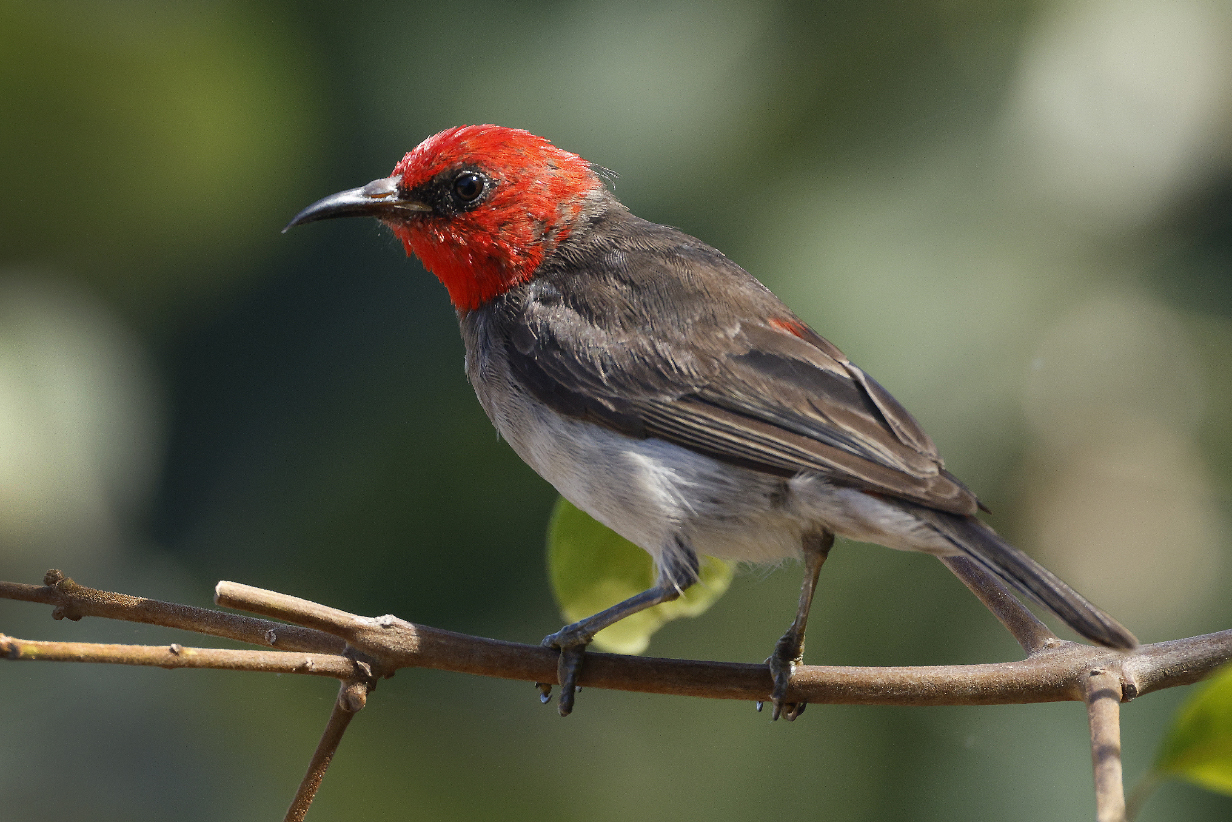
Red-headed myzomela again at Buffalo Creek picnic area
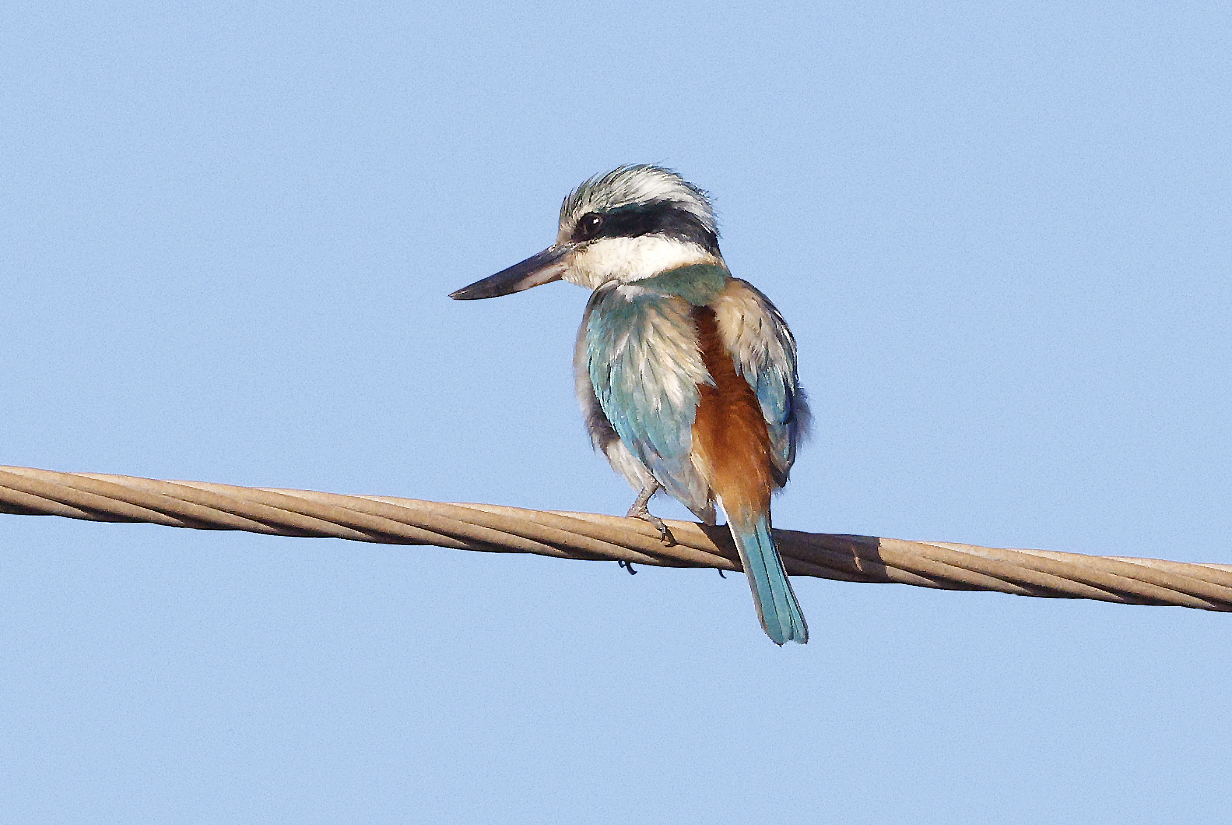
Red-backed kingfisher on the way to Kakadu National Park
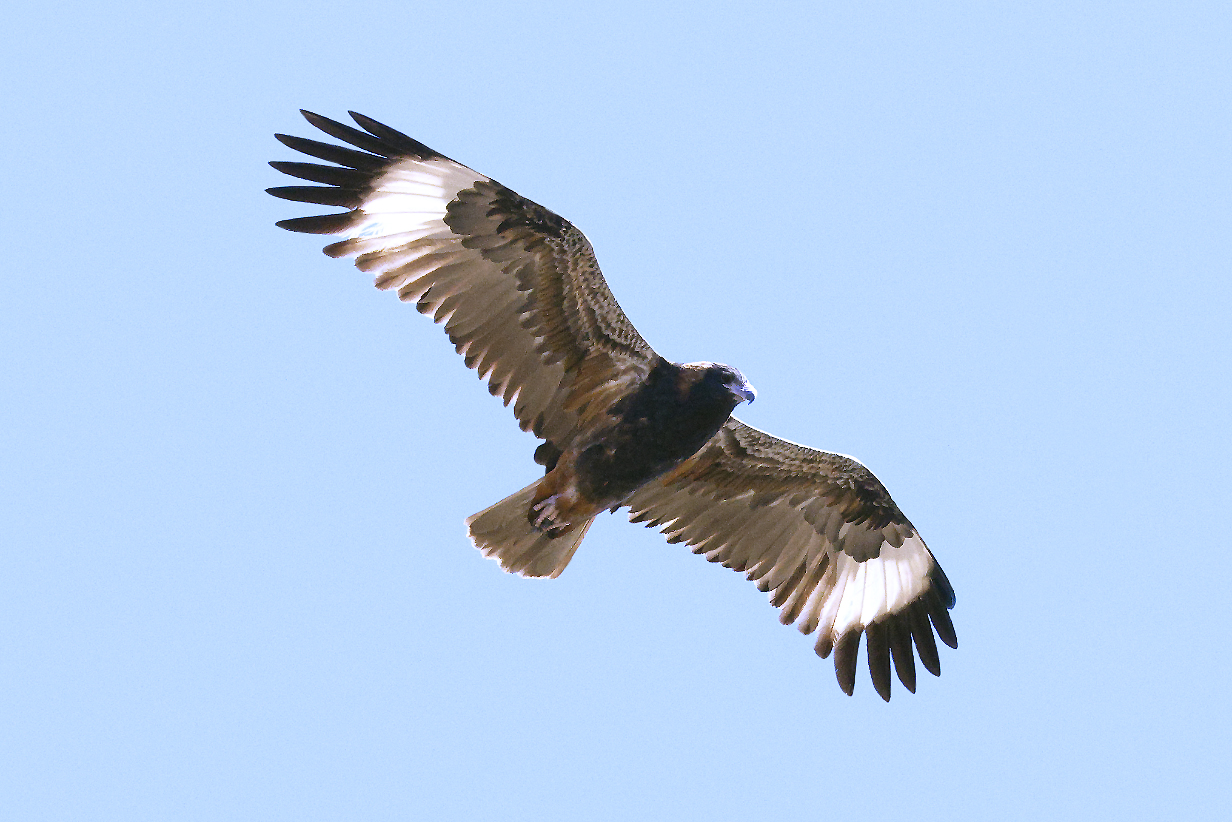
Black-breasted kite (This is John's life bird, the 6th of the trip, ~ 20 km west of Jabiru.)
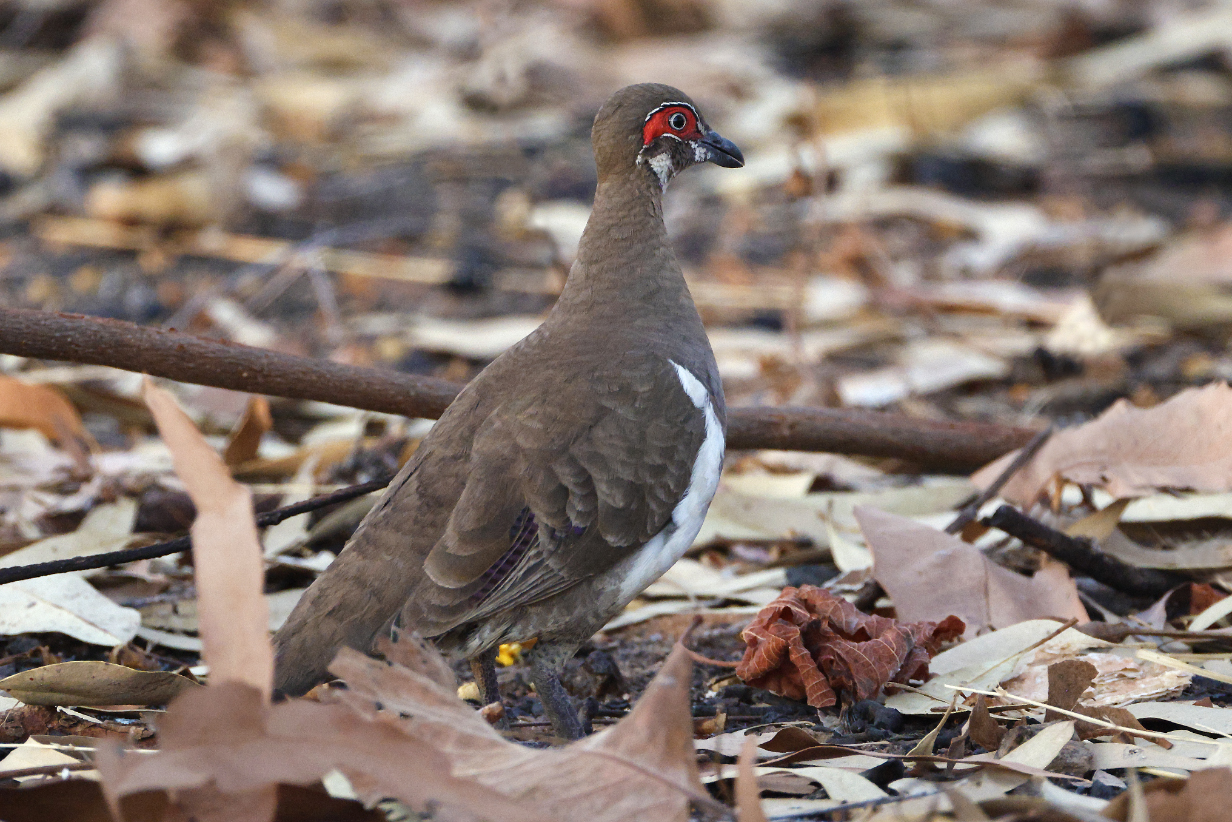
Partridge pigeon was our main target at Kakadu National Park, and we got a small flock of them at the park visitor center, in the evening, after activity there had died down. Success! This was my 7th and Mary's 6th life bird of the North End tour.

Paperbark flycatcher, Mary's 7th life bird of the trip (John got it the last time we were in Australia.)
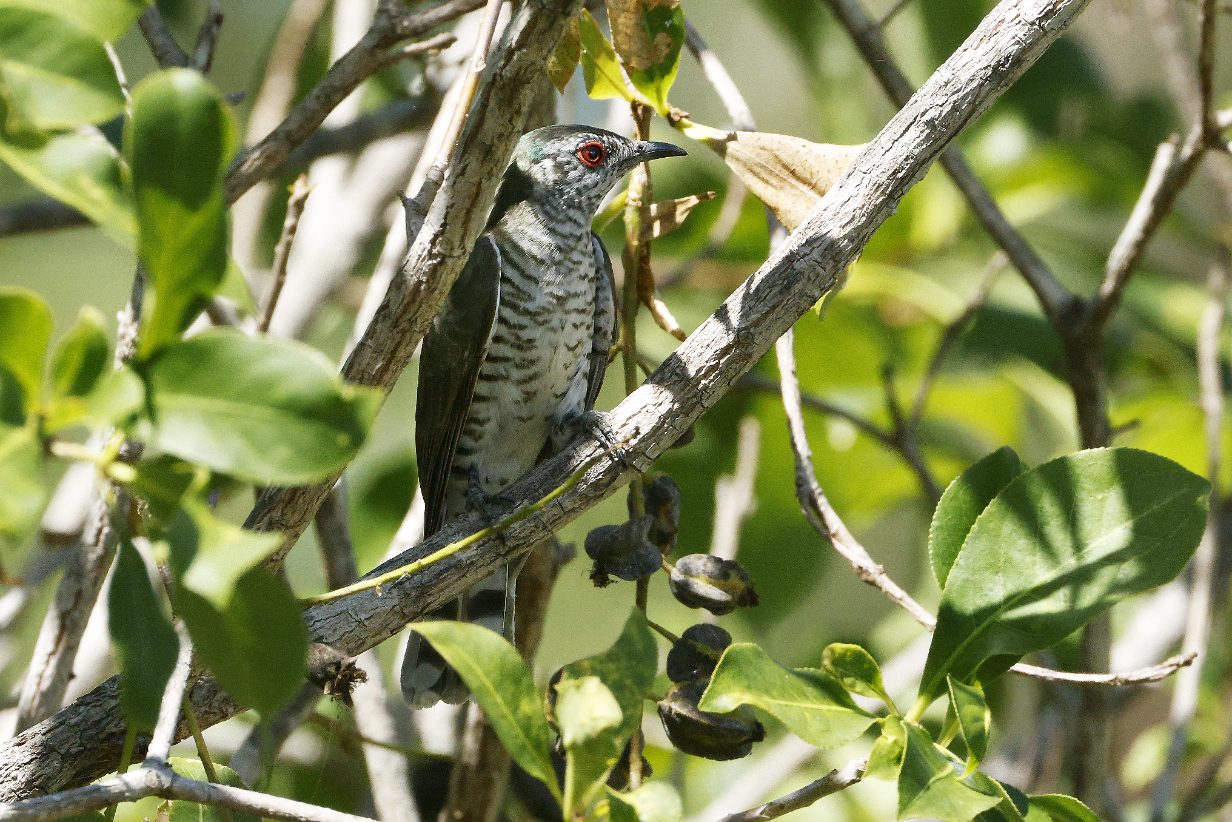
Little bronze cuckoo (We rarely get to see a cuckoo, let alone to photograph one.)
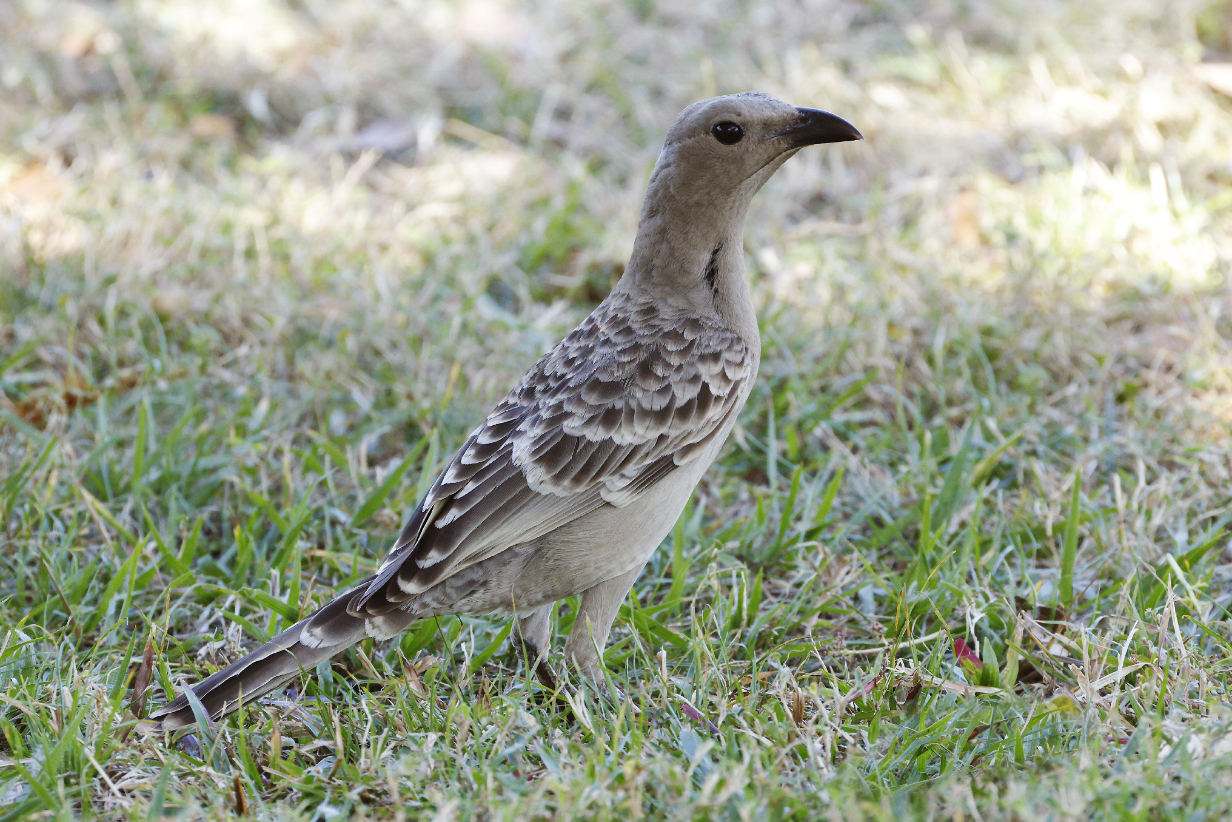
Great bowerbird
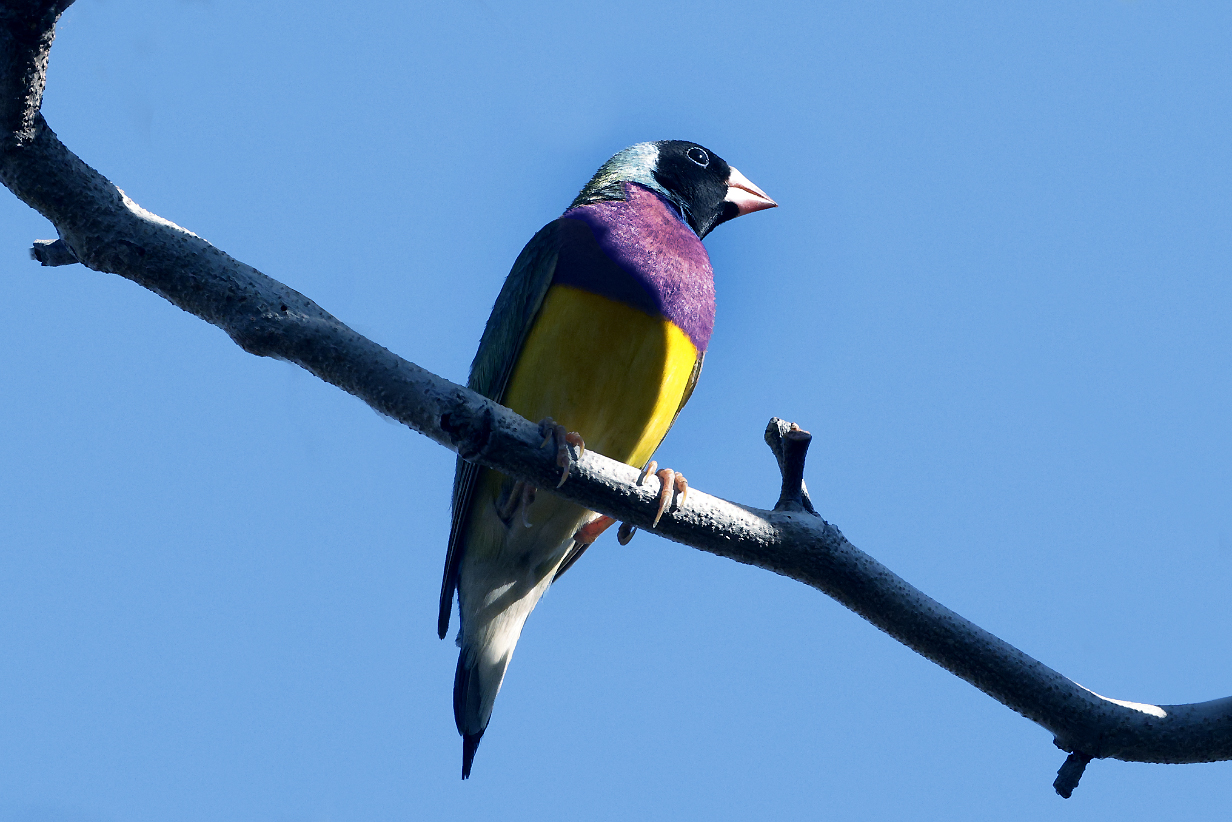
Gouldian finch

Red-winged parrot, one of a small flock happily feeding in the parking area of a campground at Edith Falls Road and Ferguson river, near Katherine. With a black back, this is a male.

Red-winged parrot (female)

Purple-crowned fairy wren (This was the dominant male in a small flock of about 10 birds, with a few potentially breeding and a few more non-breeding males and several times as many females and young birds. The breeding males are gorgeous, and even the females are endearingly neat, well marked birds. This was our primary target at Victoria River Roadhouse on the long drive from Katherine to Kununurra. It was the 8th life bird of the trip for both John and Mary.)
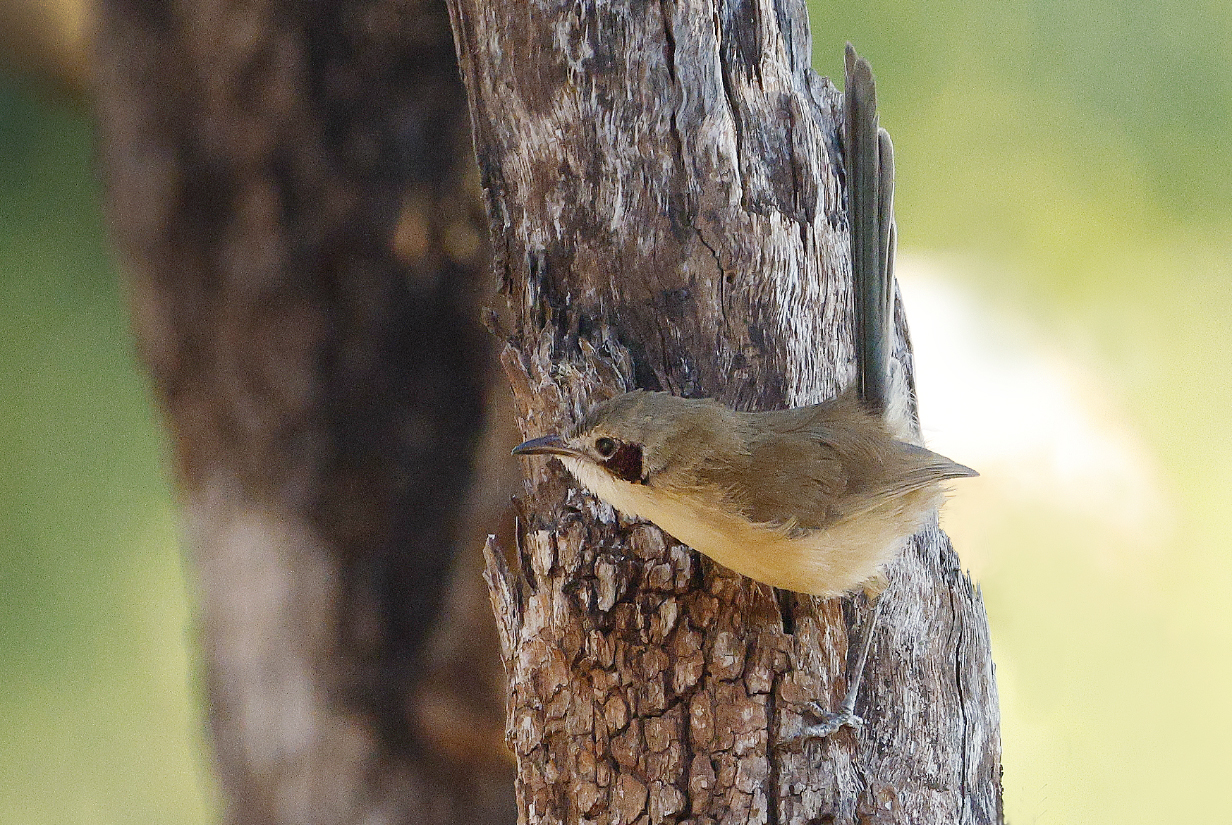
Purple-crowned fairy wren (female)
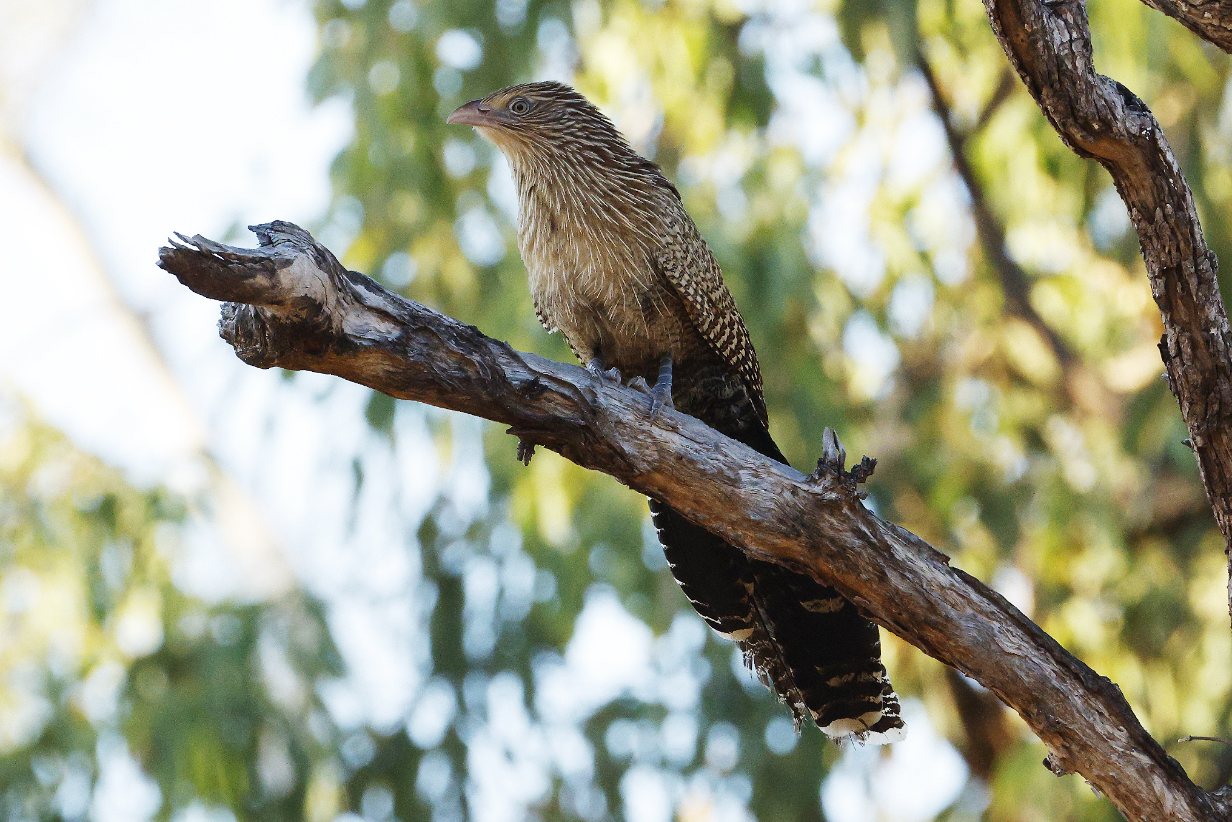
Pheasant coucal (immature)

Buff-sided robin (This is John's 9th life bird of the trip.)
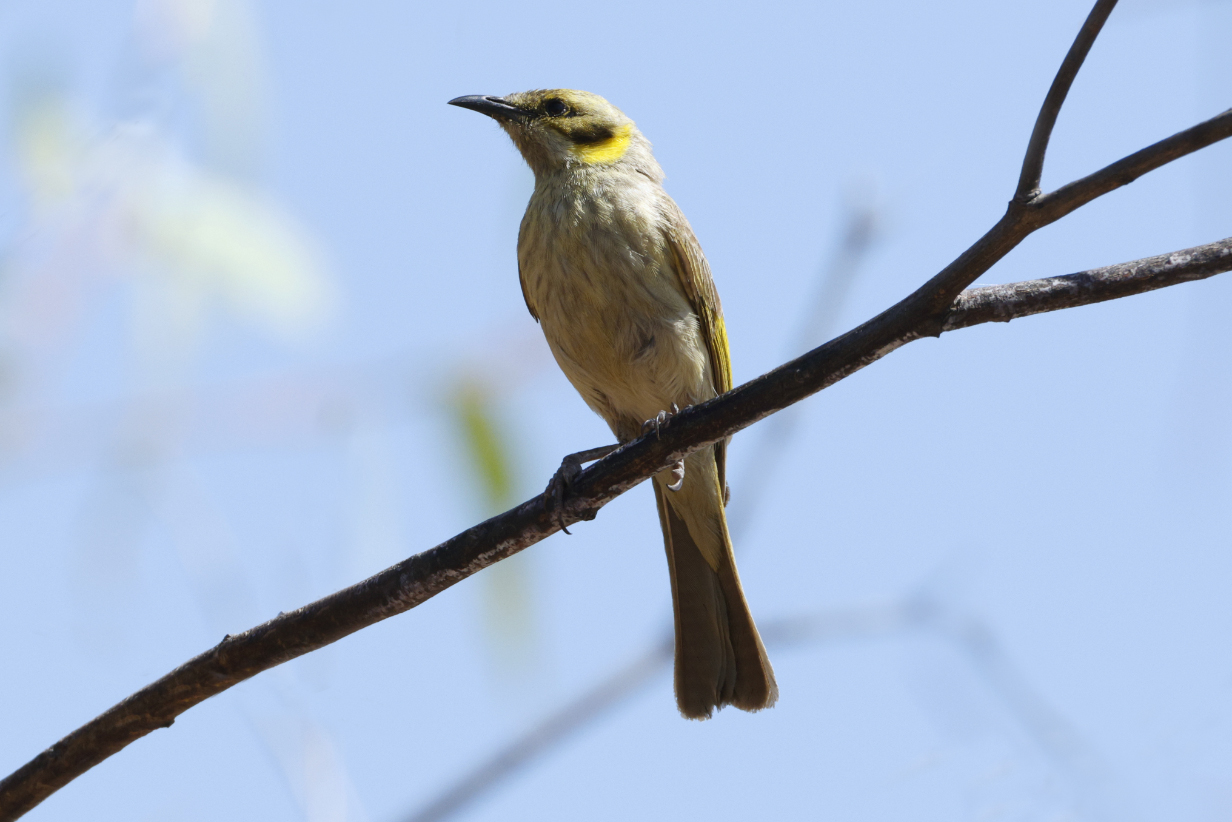
Gray-fronted honeyeater (Subtly recognized: This picture best shows the small light gray patch between the beak and the warmer-colored top of the head. This is John's 10th life bird of the trip, seen "on the road" after we left Timber Creek Caravan Park, headed westward toward Kununurra.)
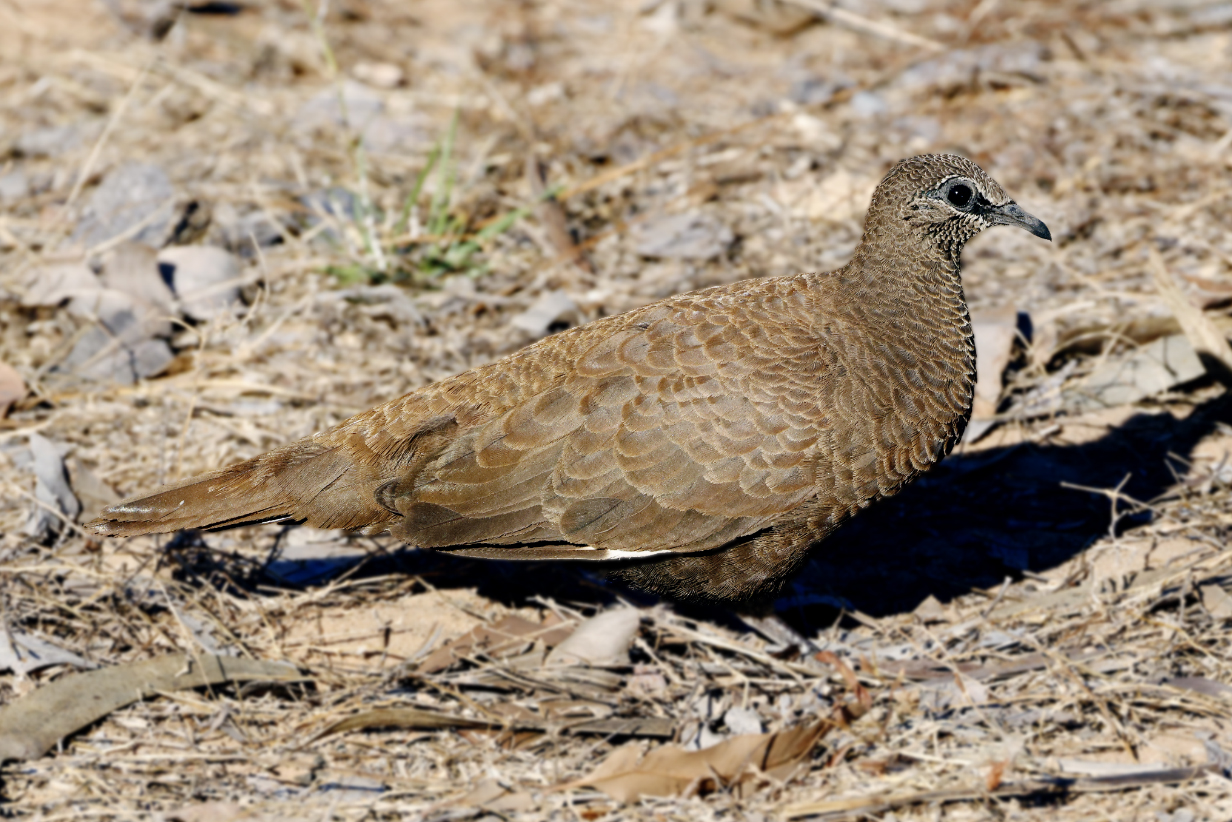
White-quilled rock pigeon in Mirima National Park, (barely) on the outskirts of Kununurra. This was John's 12th and Mary's 11th life bird of the trip, very well seen right at the side of the road on which we were driving. We also saw it during our Seabourn cruise that followed the North End birding.
We did not get pictures of Star finch, John's 11th and Mary's 10th life bird of the trip -- we saw it amid a dense crowd of branches and other finches near a random water hole on the way to Kununurra. Fortunately, we got pictures later in the trip.
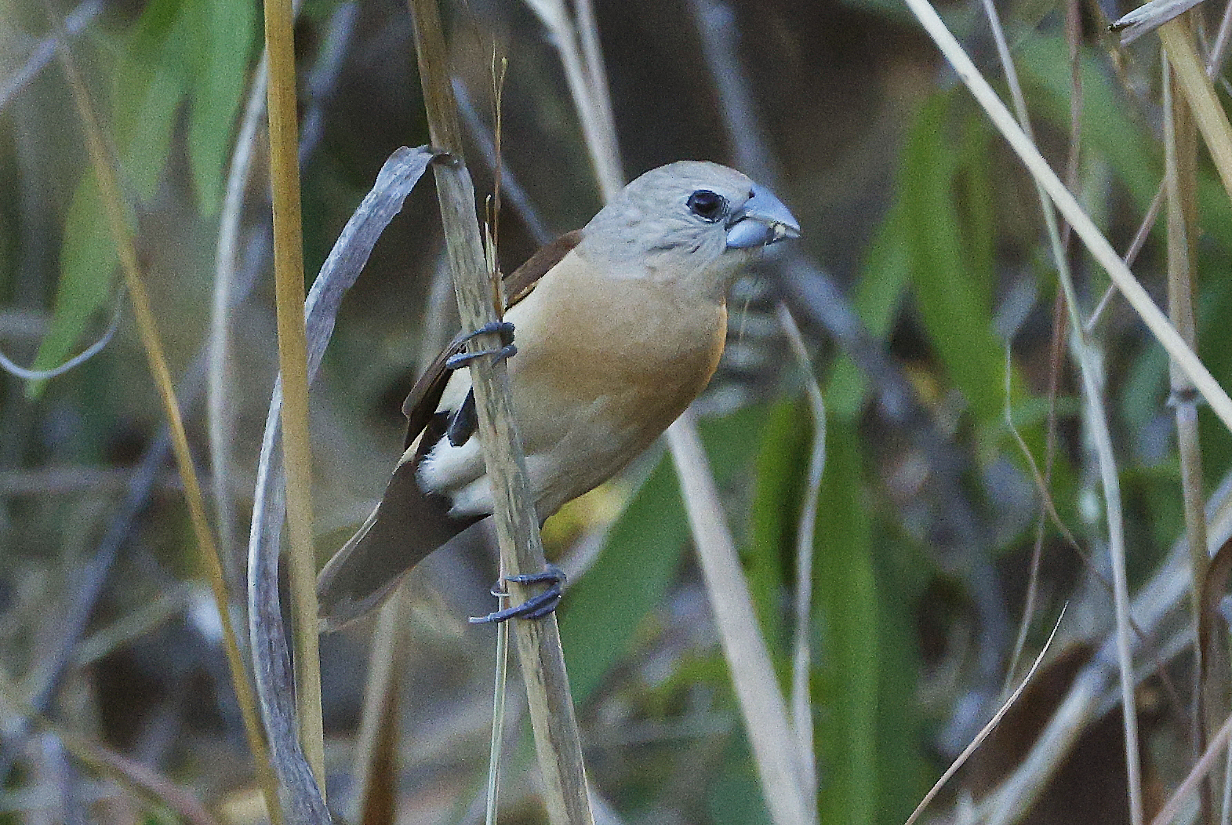
Yellow-rumped munia, John's 13th life bird, was seen just briefly in the evening near the Hoochery Distillery and restaurant in Kinunurra.
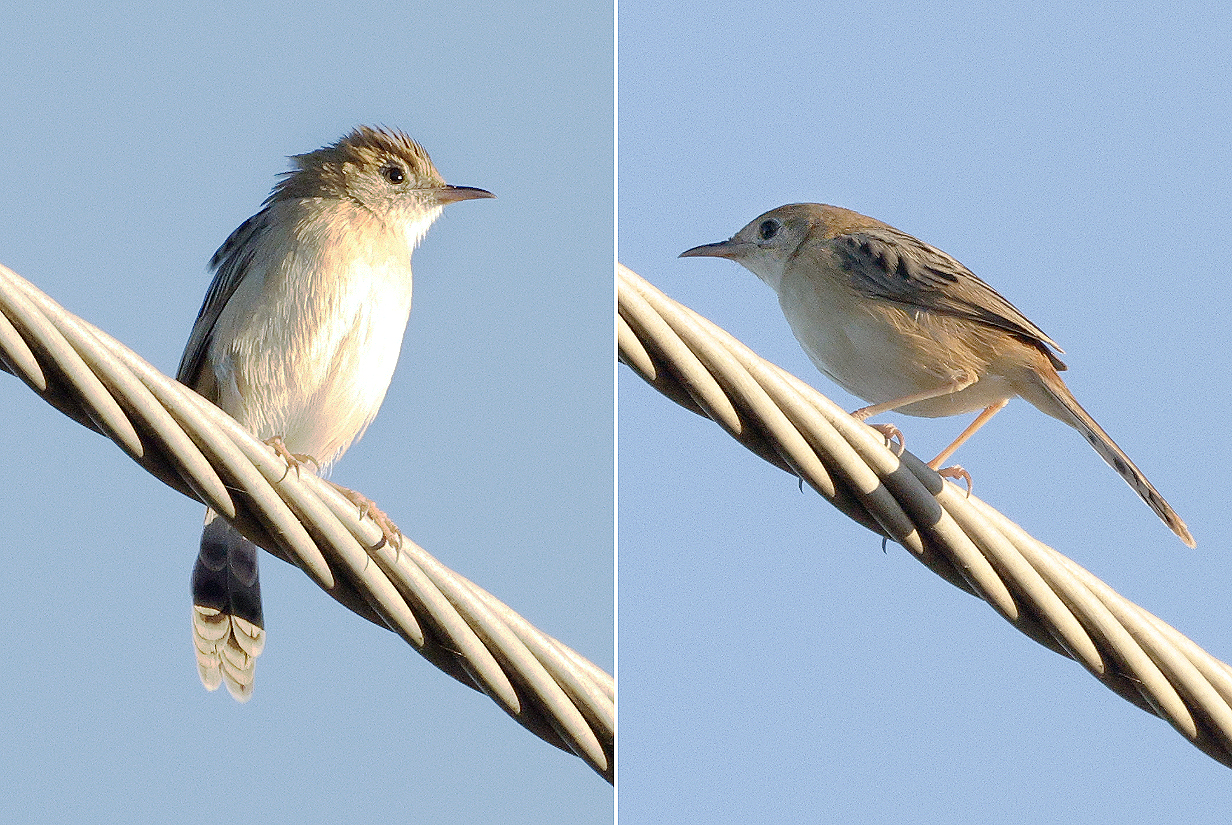
Golden-headed cisticola (non-breeding male or female -- a bird that I have never photographed before)
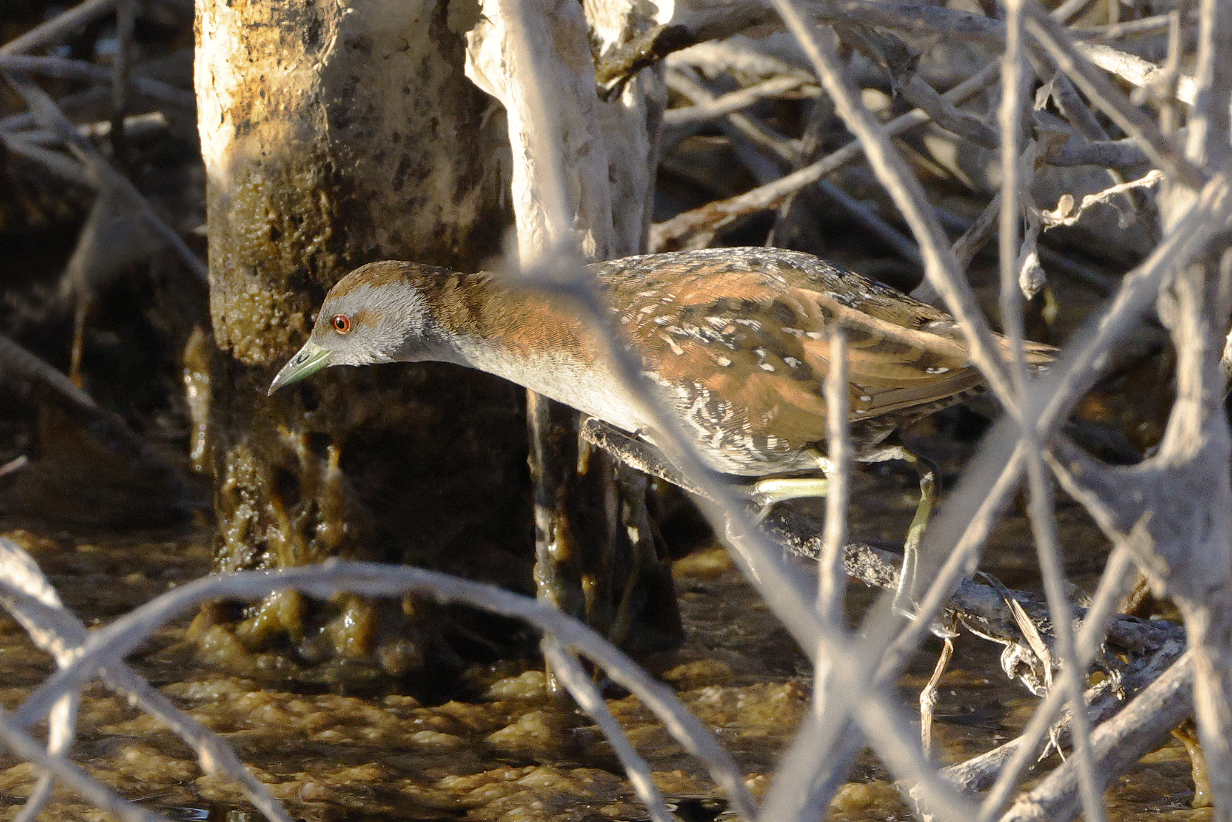

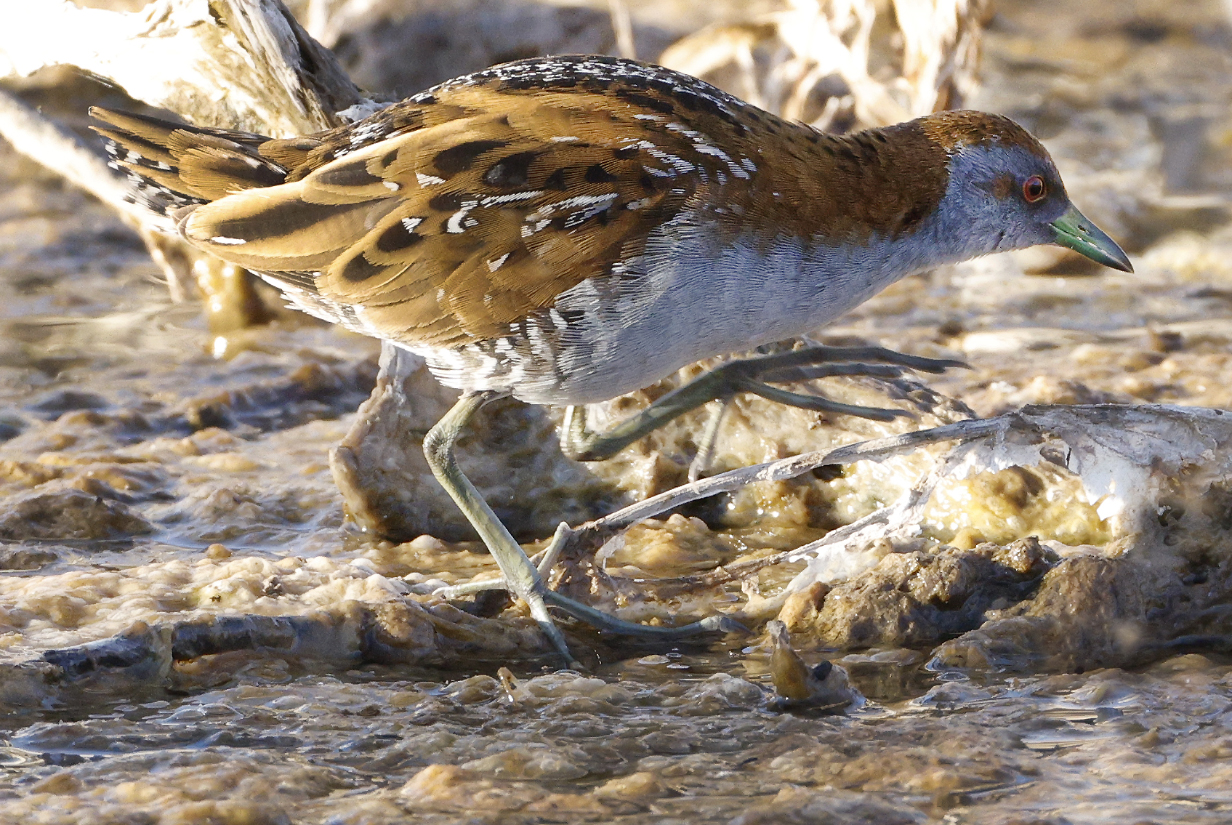
On 2025 August 10, we had a private boat tour on Lake Argyle, the main targets being Yellow chat and (for John) Sandstone shrike-thrush. But first, we got a mega bonus bird: this Baillon's crake. Crakes are always hard, and we have been looking for this one -- which is widespread around the world -- for many years. It turned up in the reed beds of Lake Argyle, quite close to our boat and the first sighting of the year, here, for this bird. Excellent start to a super cruise.
This is Johns 14th and Mary's 12th life bird of the North End tour.
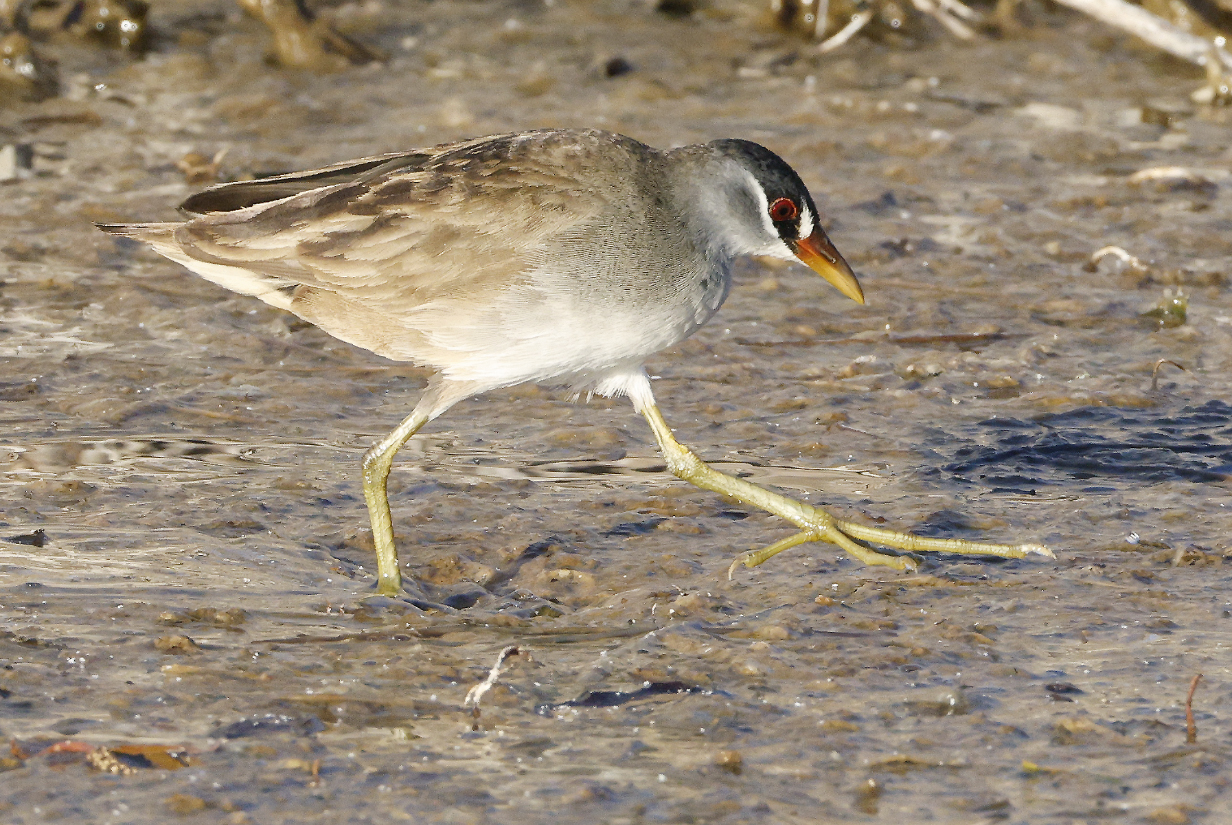
White-browed crake was the crake that we expected to see. Also an excellent sighting.
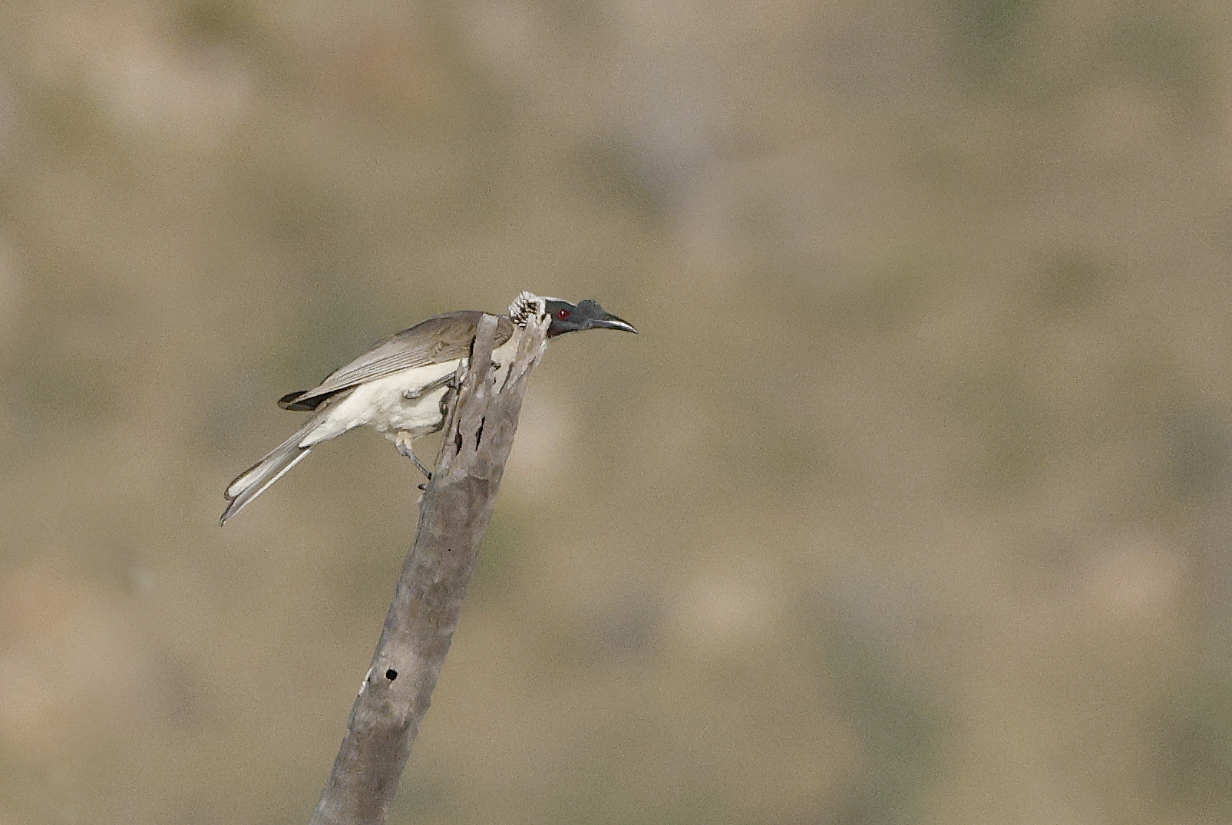
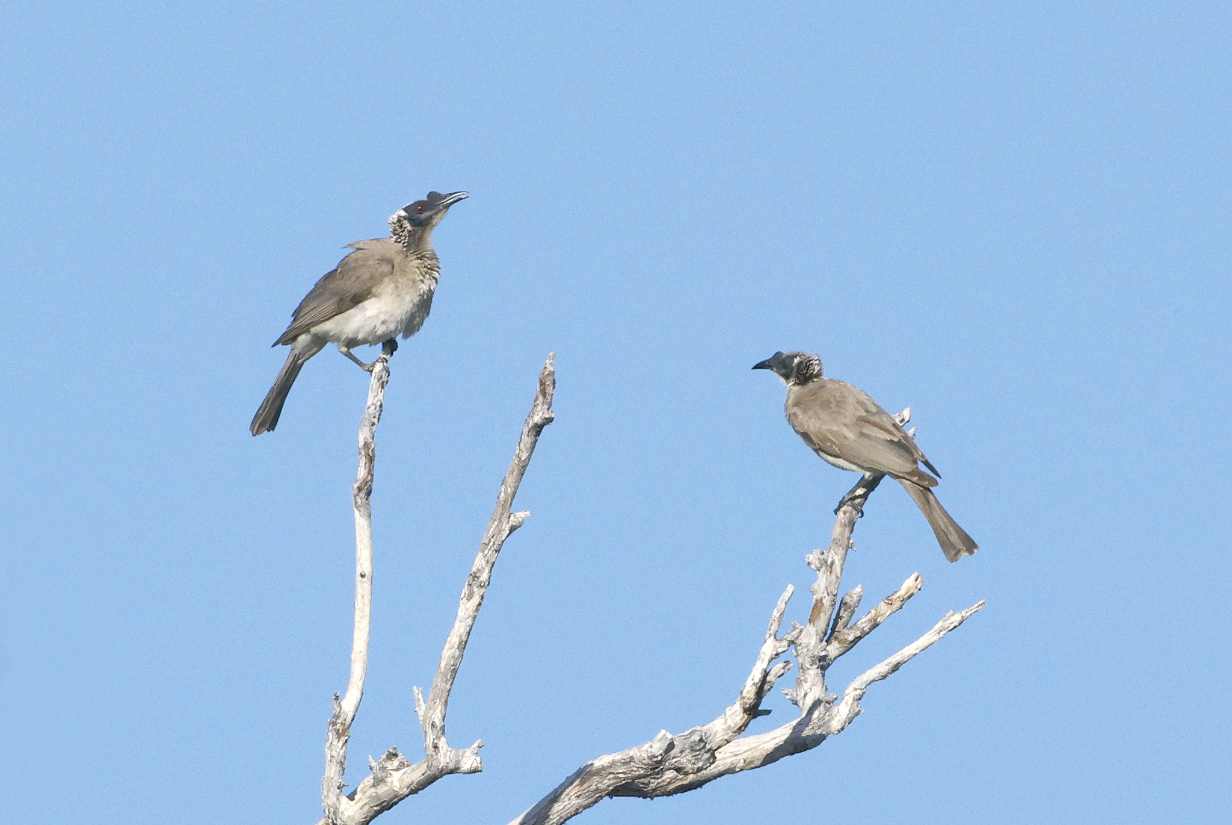
Silver-crowned friarbirds ... far away
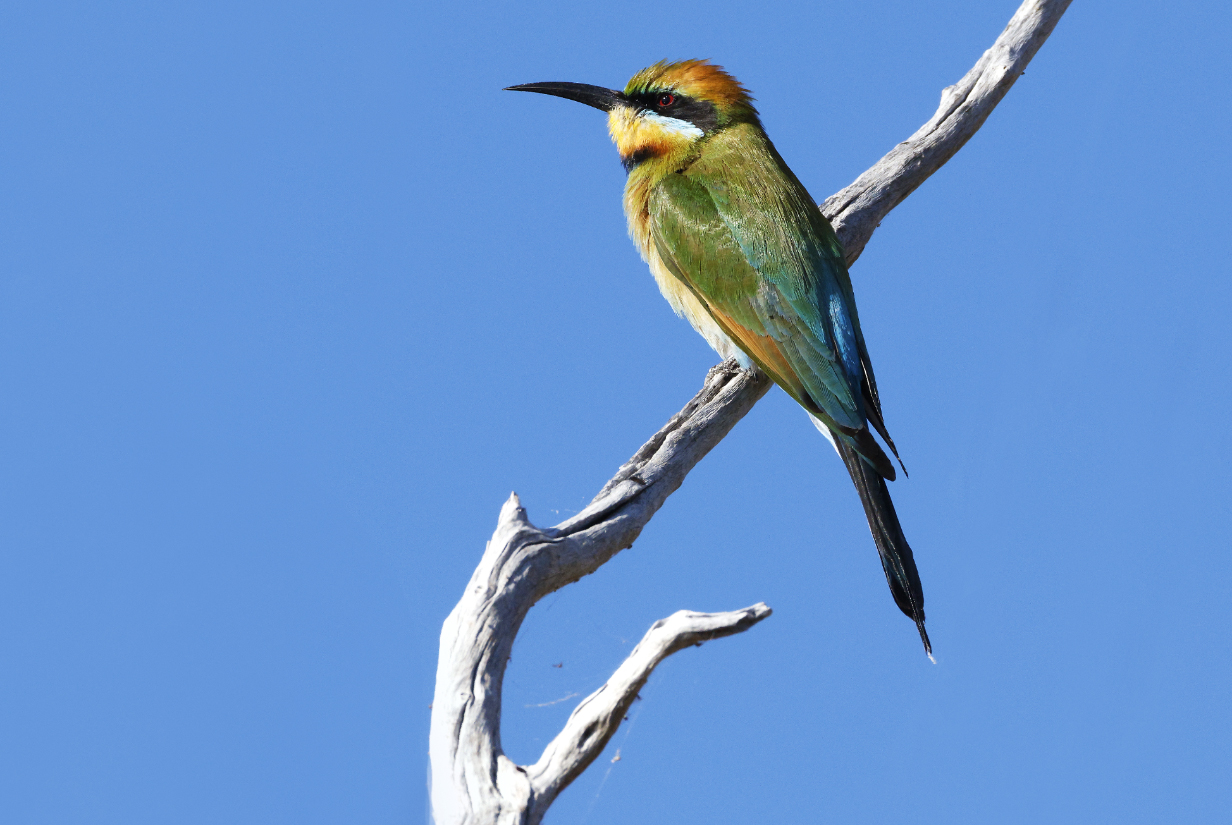
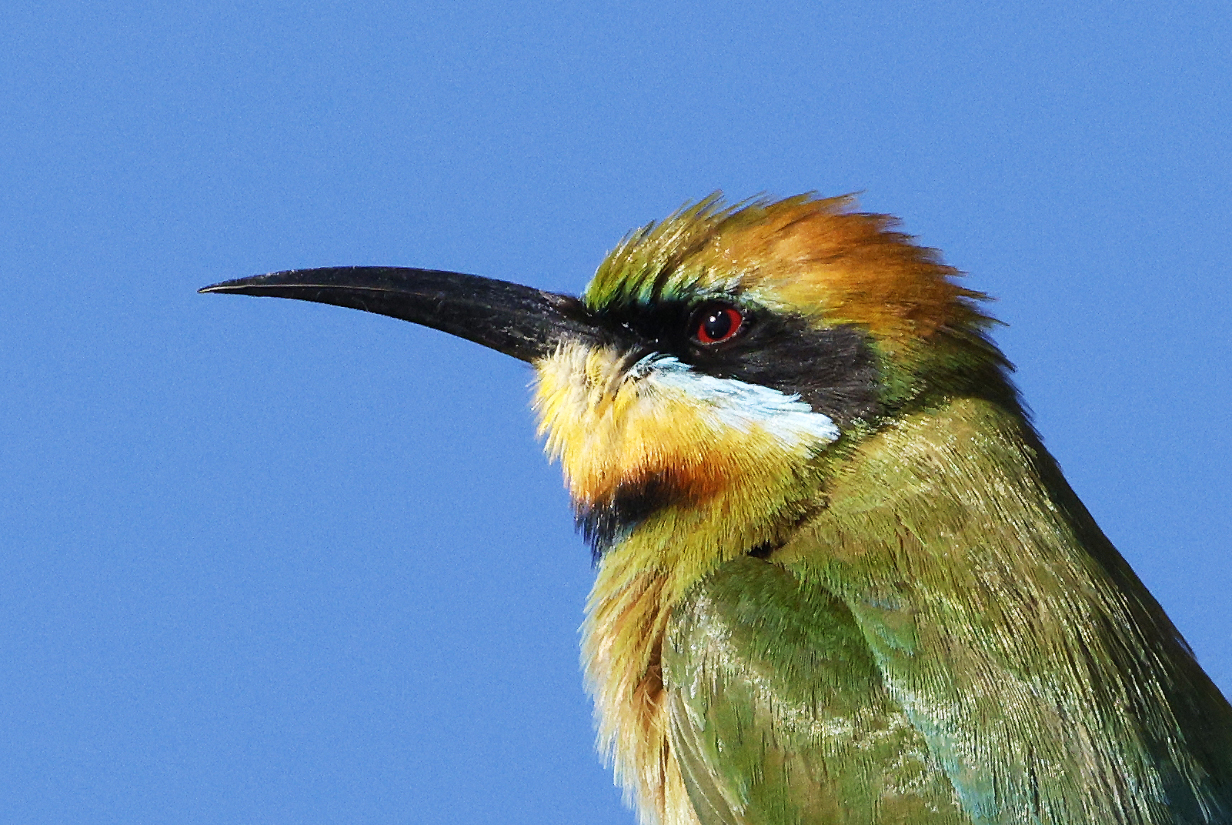
Rainbow bee-eater
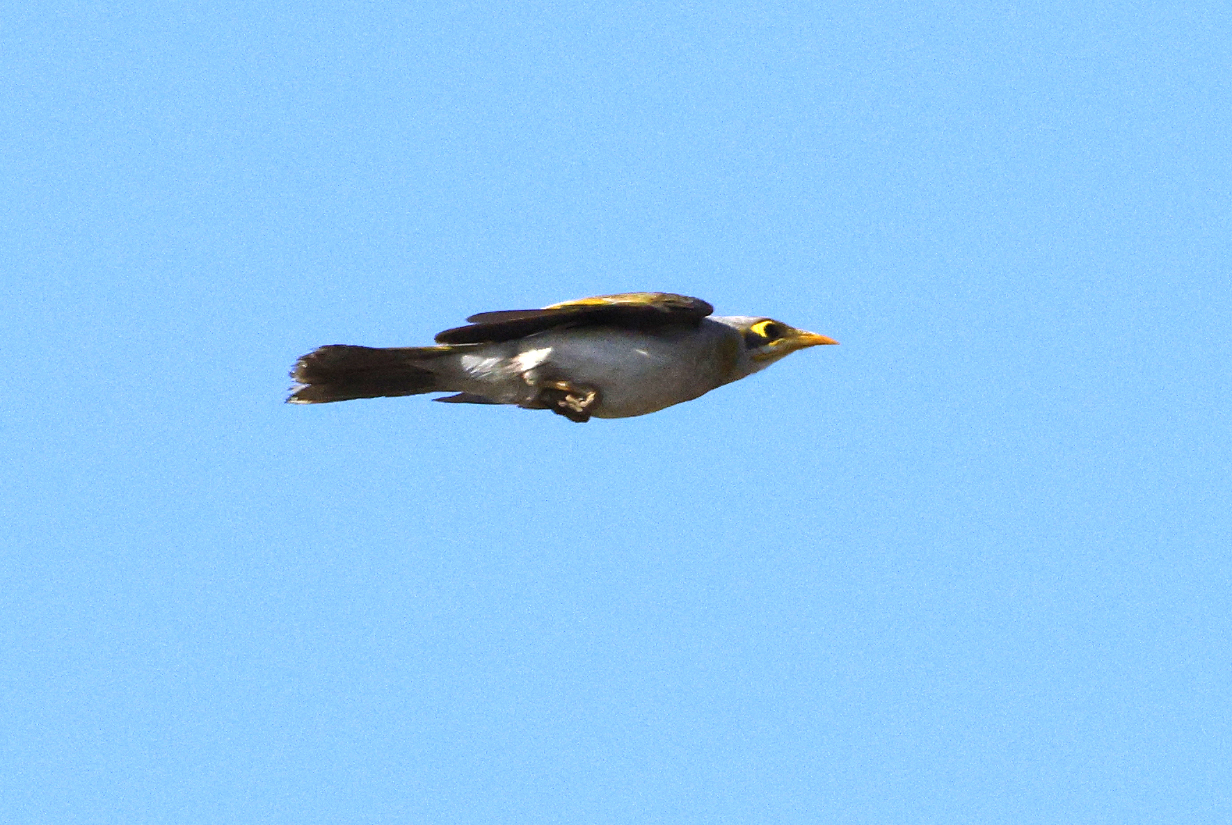
Yellow-throated miner (distant flyby)
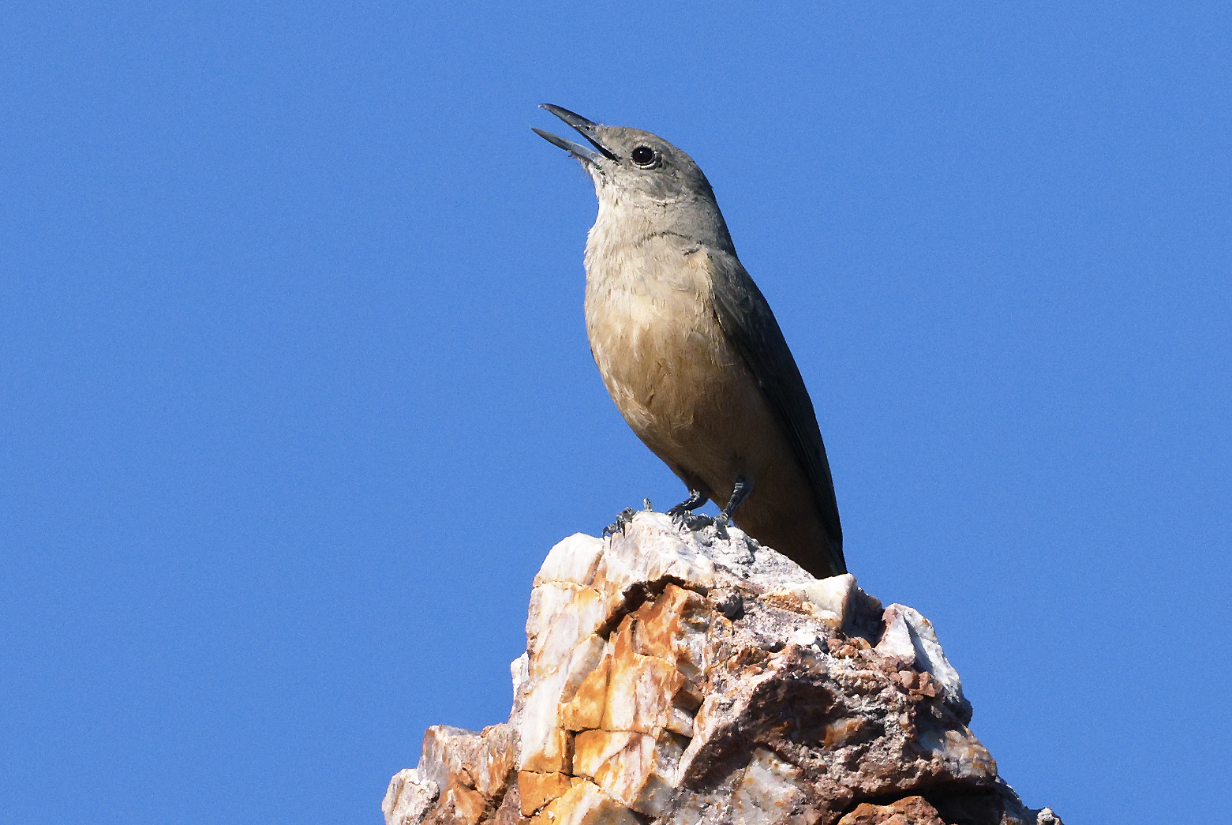
Sandstone shrike-thrush (This is John's 15th life bird of the trip. It was not new for Mary.)
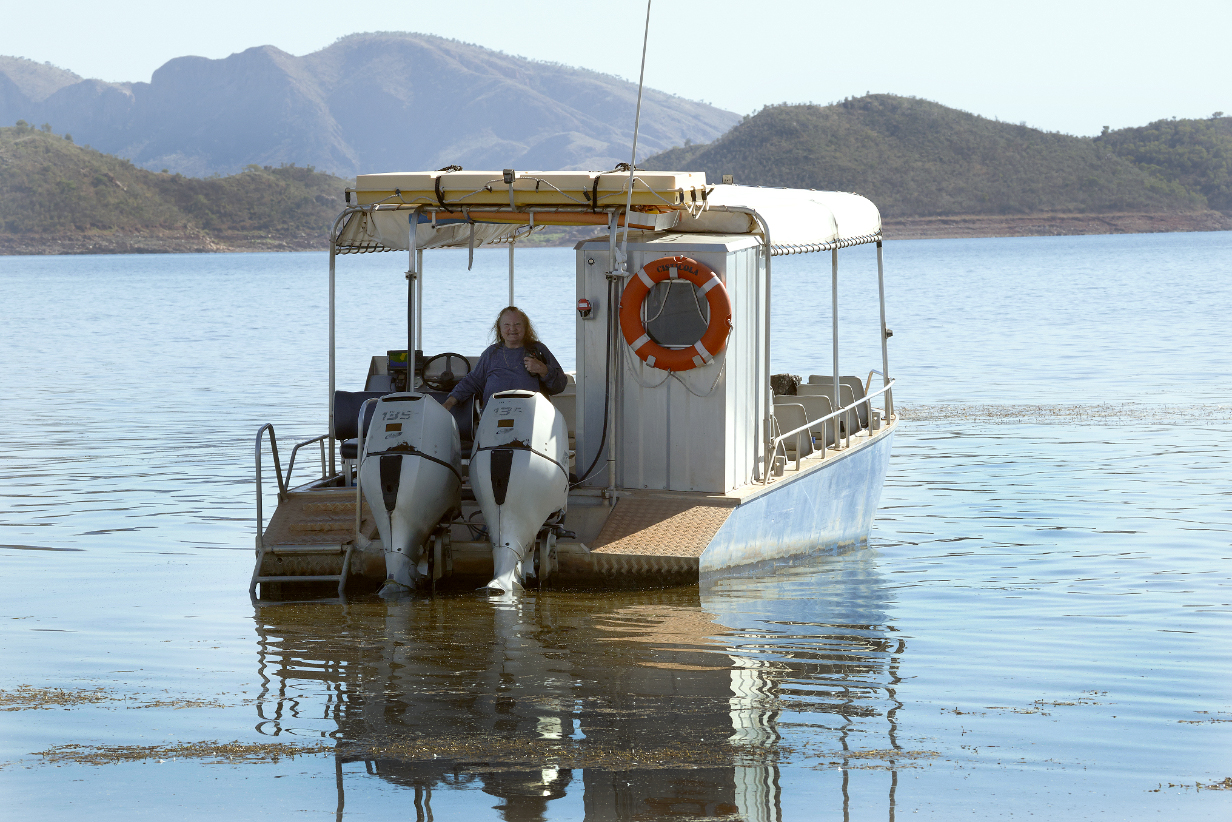
This is the Cisticola, the boat on which we birded Lake Argyle. Ship's captain, Greg Smith, was thoroughly expert in the local birds and unerringly took us to the best places to get them. As always, birding by boat was a delight -- it is physically easy on us; we see birds more or less while looking horizontally, and the boat acts as a "hide" that gets us close to shy birds. To get Yellow chat, though, John had to wade ashore on an island in the lake, and there, the bird proved to be easy enough so that Mary eventually got it -- via scope -- even from the boat.
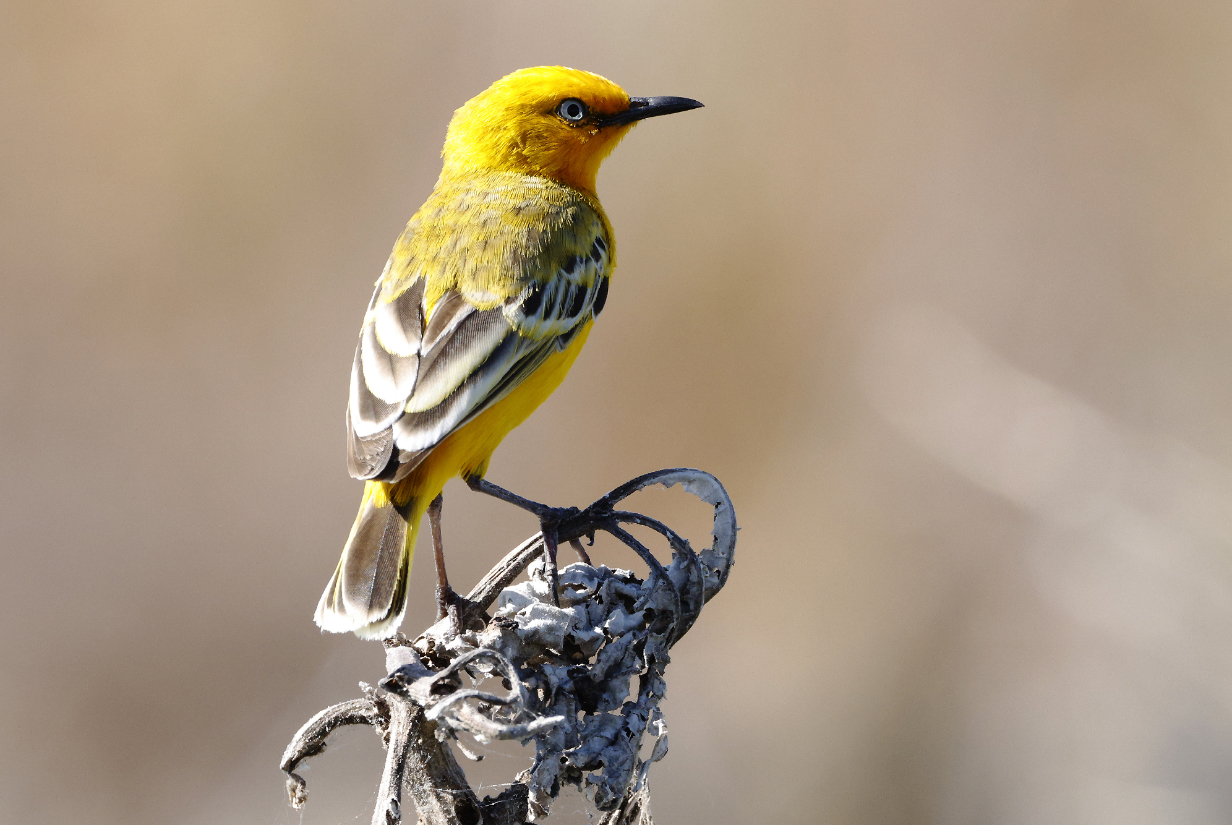
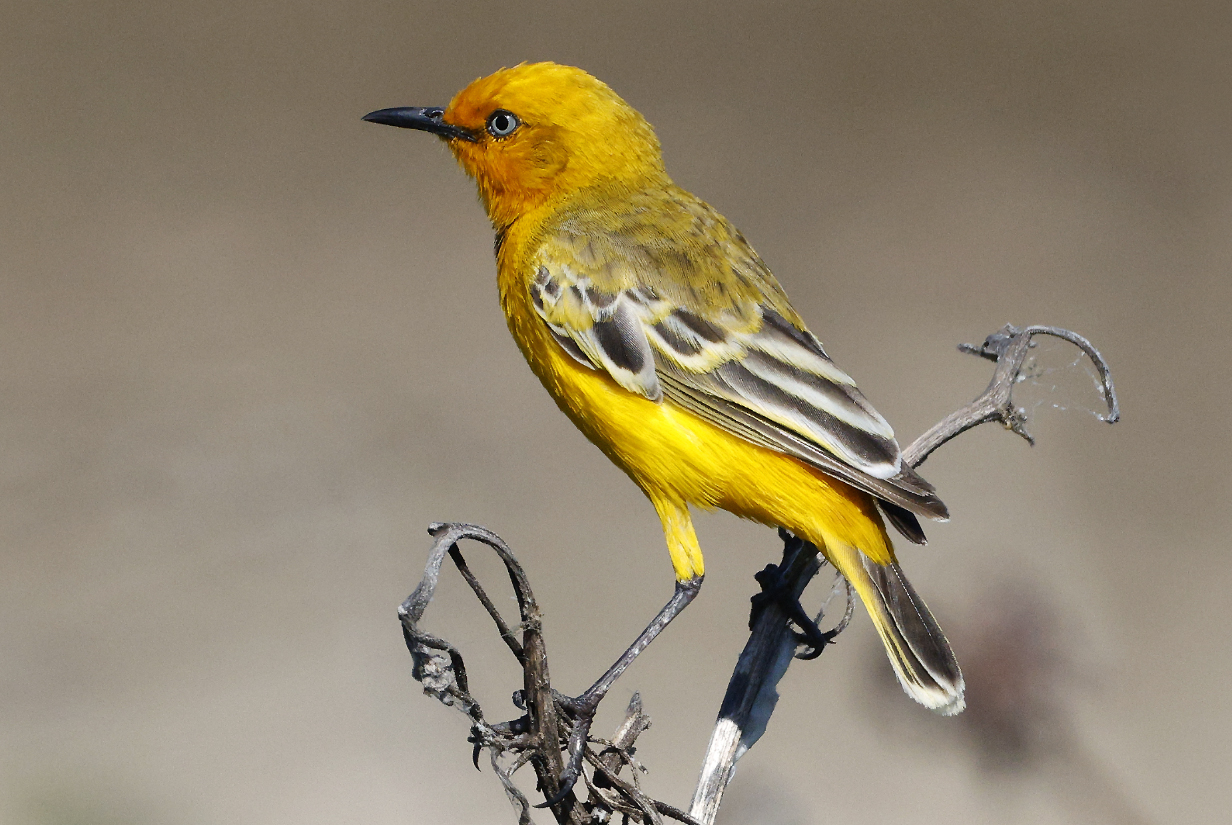
Yellow chat (This male is John's 16th and Mary's 13th life bird of the trip. He put on a gorgeous and prolonged show.)
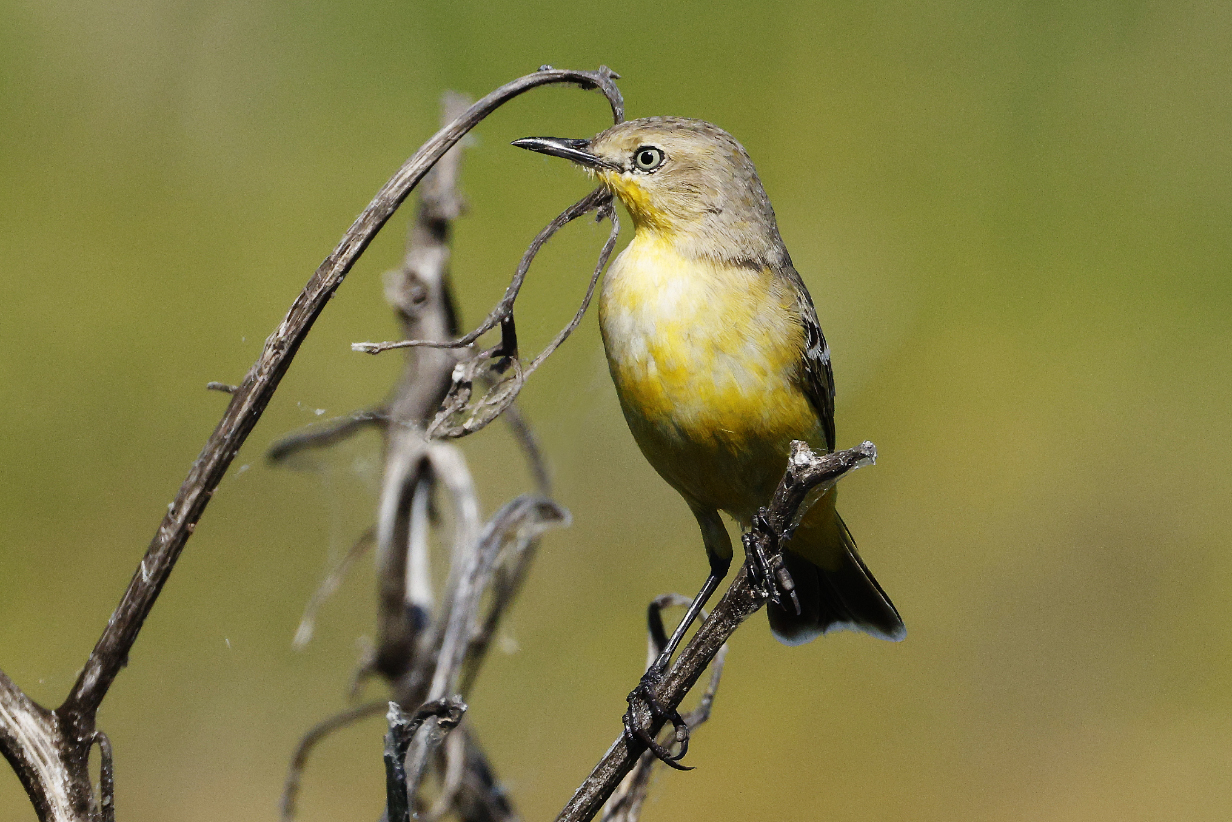
Yellow chat female
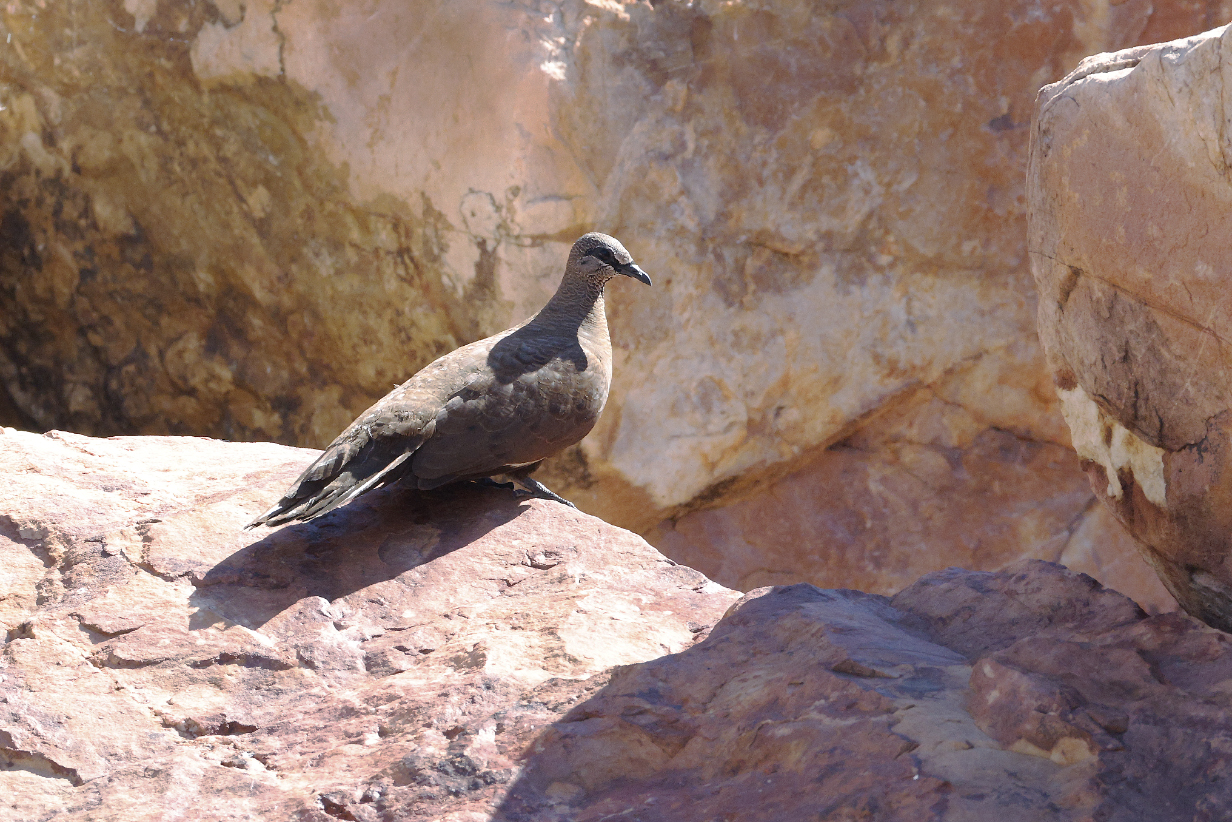
White-quilled rock pigeon
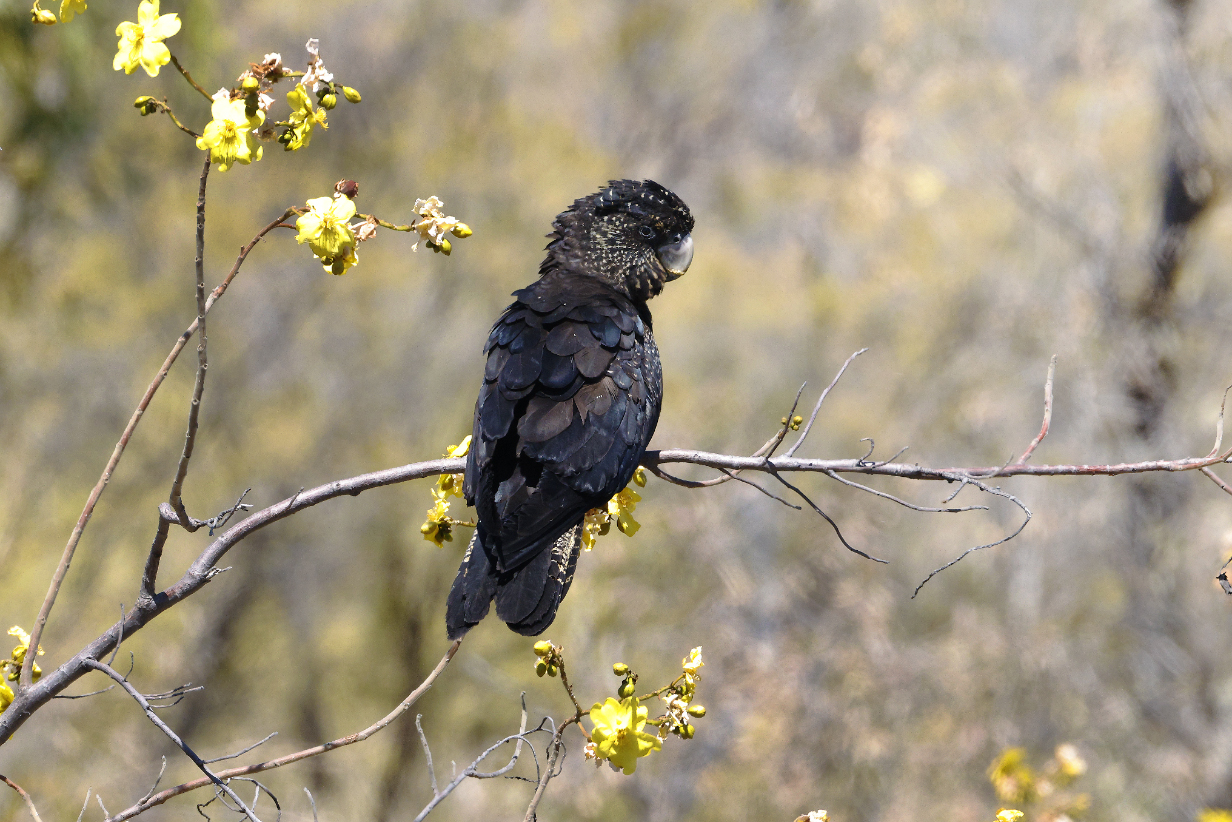
Red-tailed black cockatoo (female) (I have never gotten a good photo of a male.)
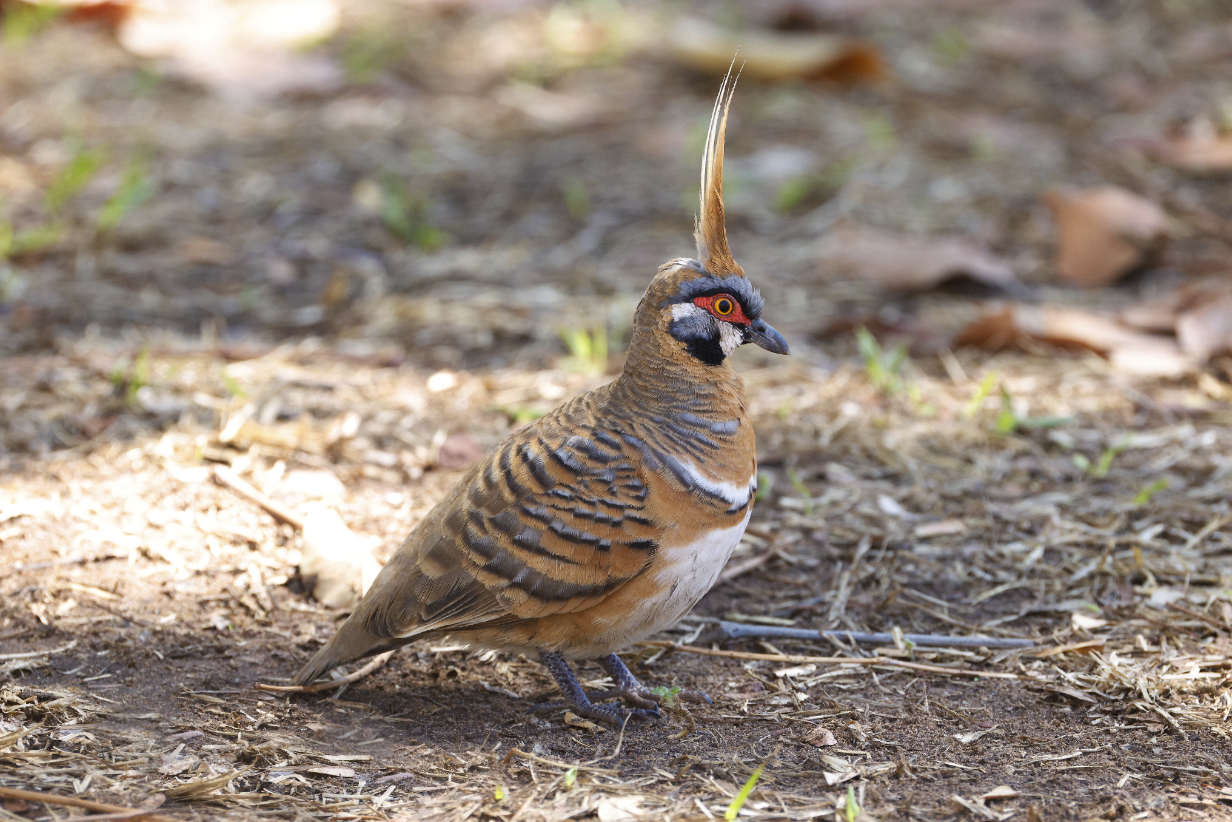
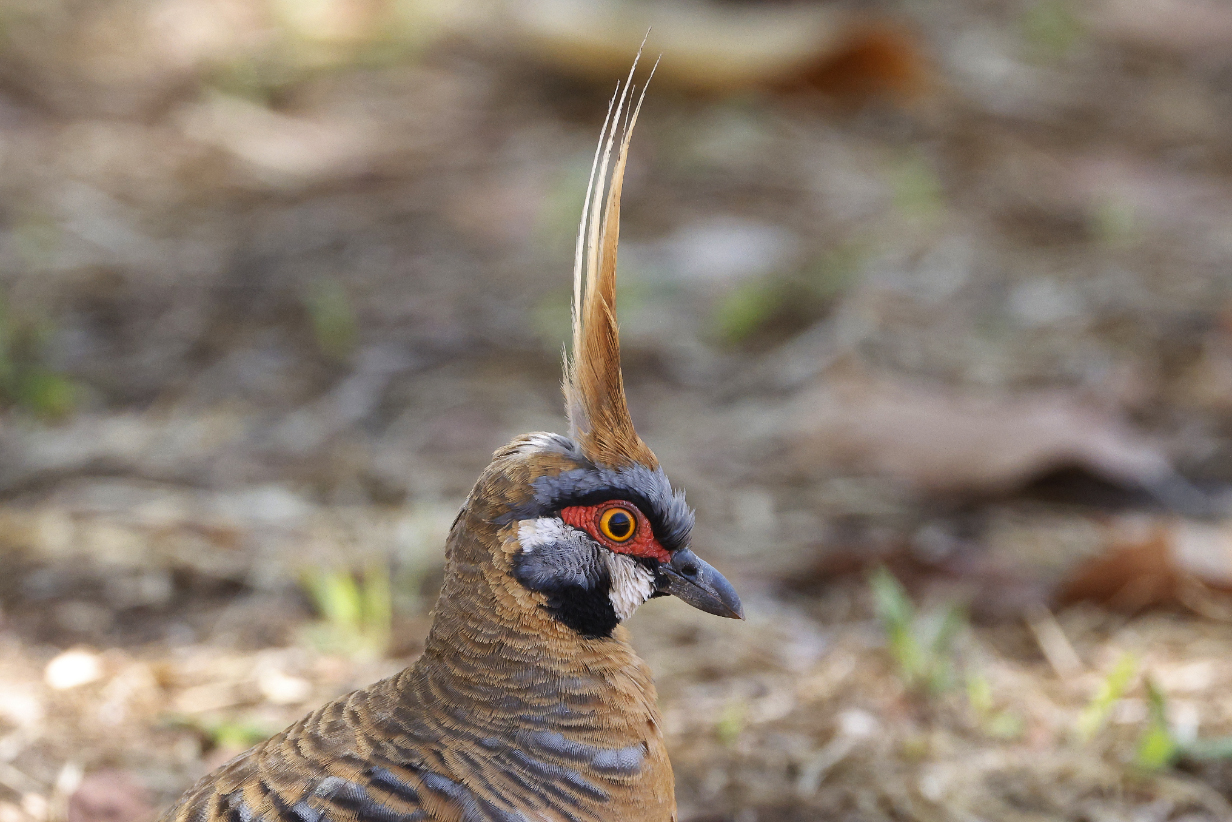
Spinifex pigeon, white-bellied morph -- one of a small flock of (for John and Mary) our 17th and 14th life birds of the trip, at the Lake Argle Caravan Park. Birding doesn't get more outrageous than this!
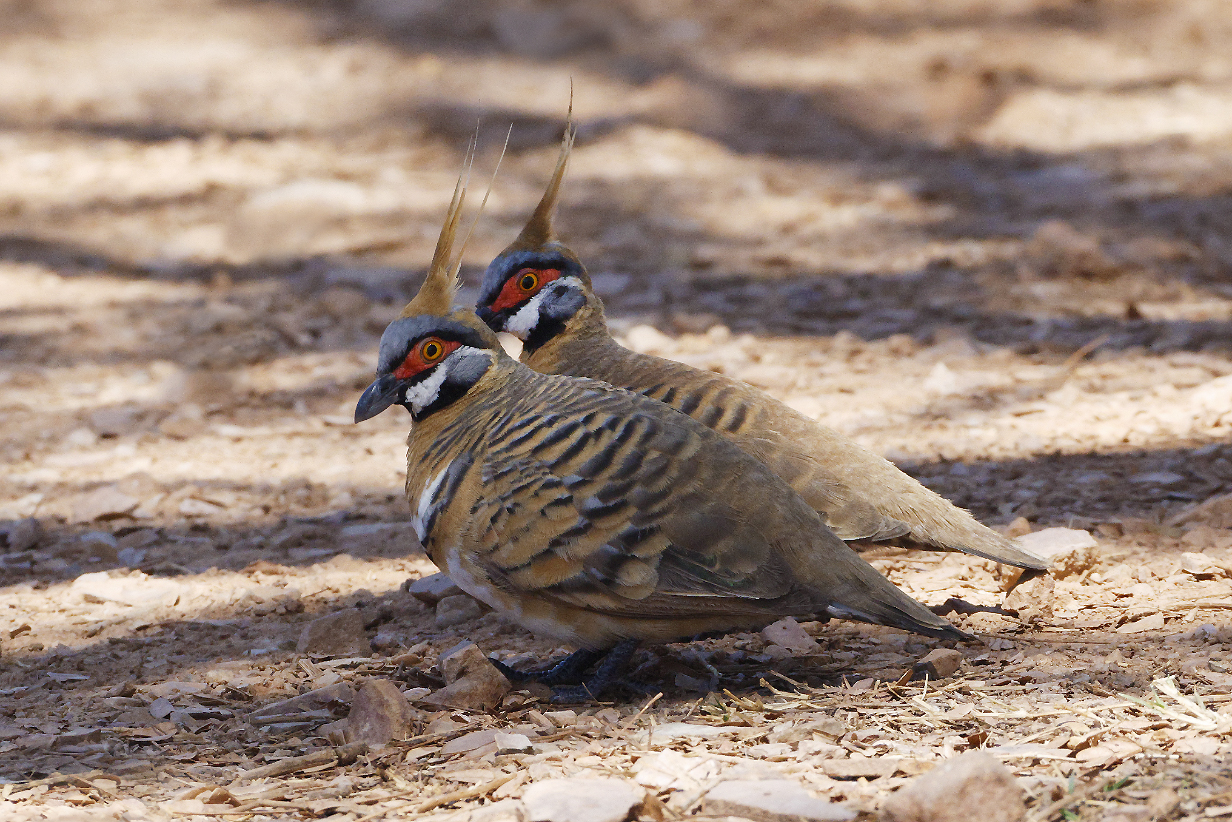
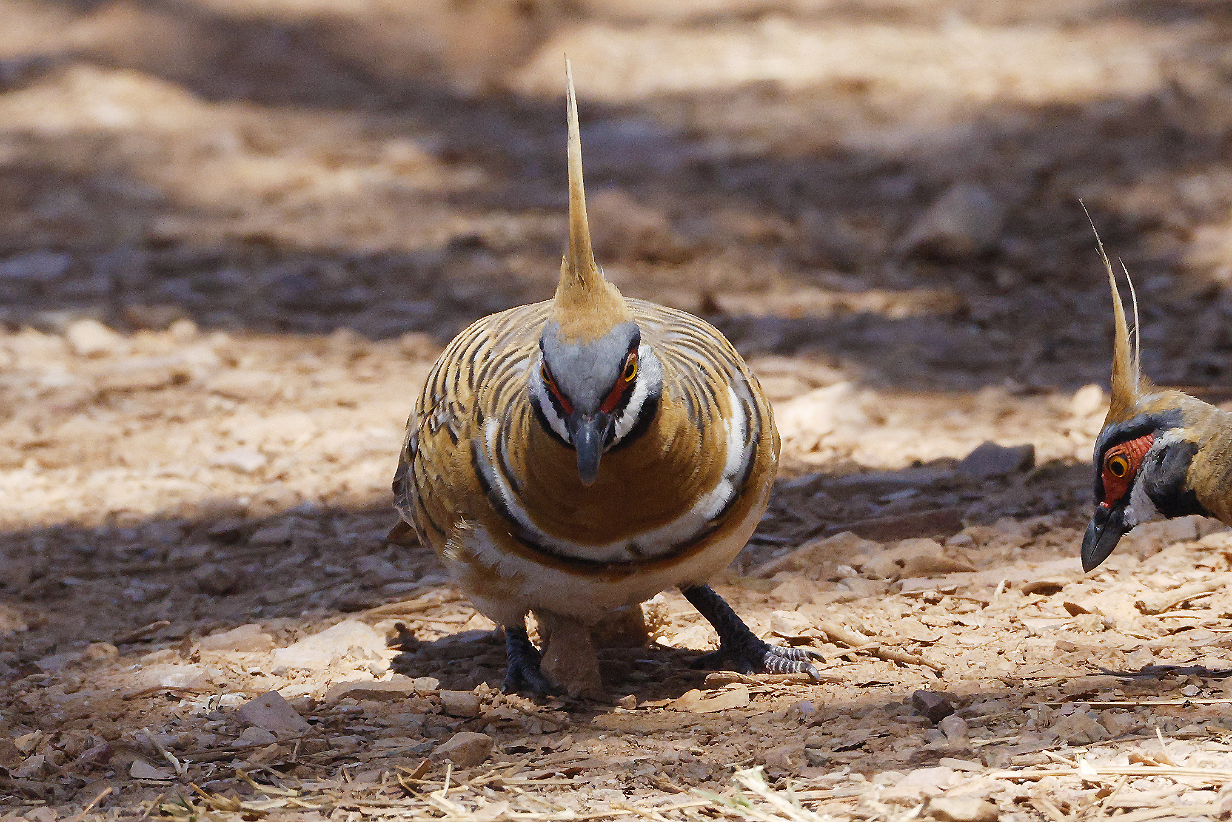
Spinifex pigeons (Who can resist?)
Late in the day, we discovered by accident a small water hole at the side of the road that leads west from Kununurra. We decided to park here until sunset and hope that birds will come do drink before nightfall. We were not disappointed:
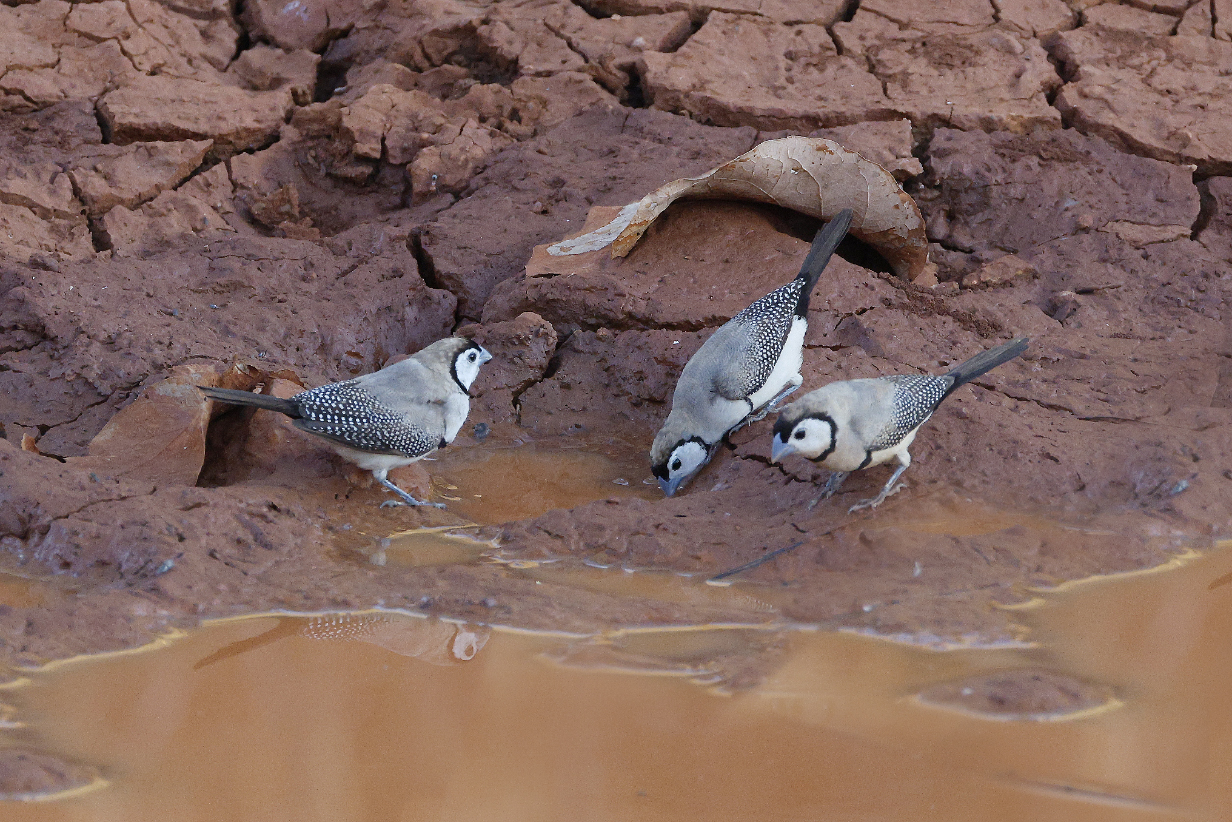
Double-barred finches were the most numerous birds that came. Repeatedly.
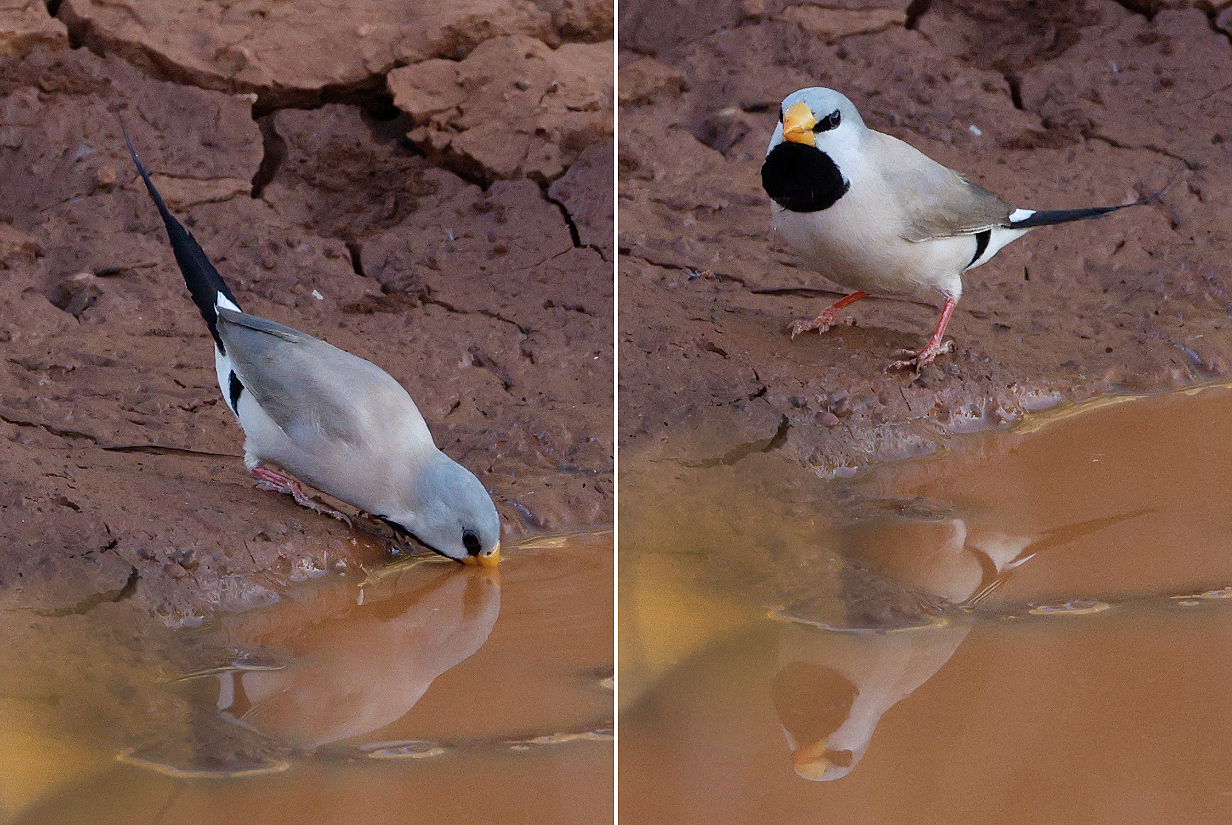
Several long-tailed finches also came to drink.
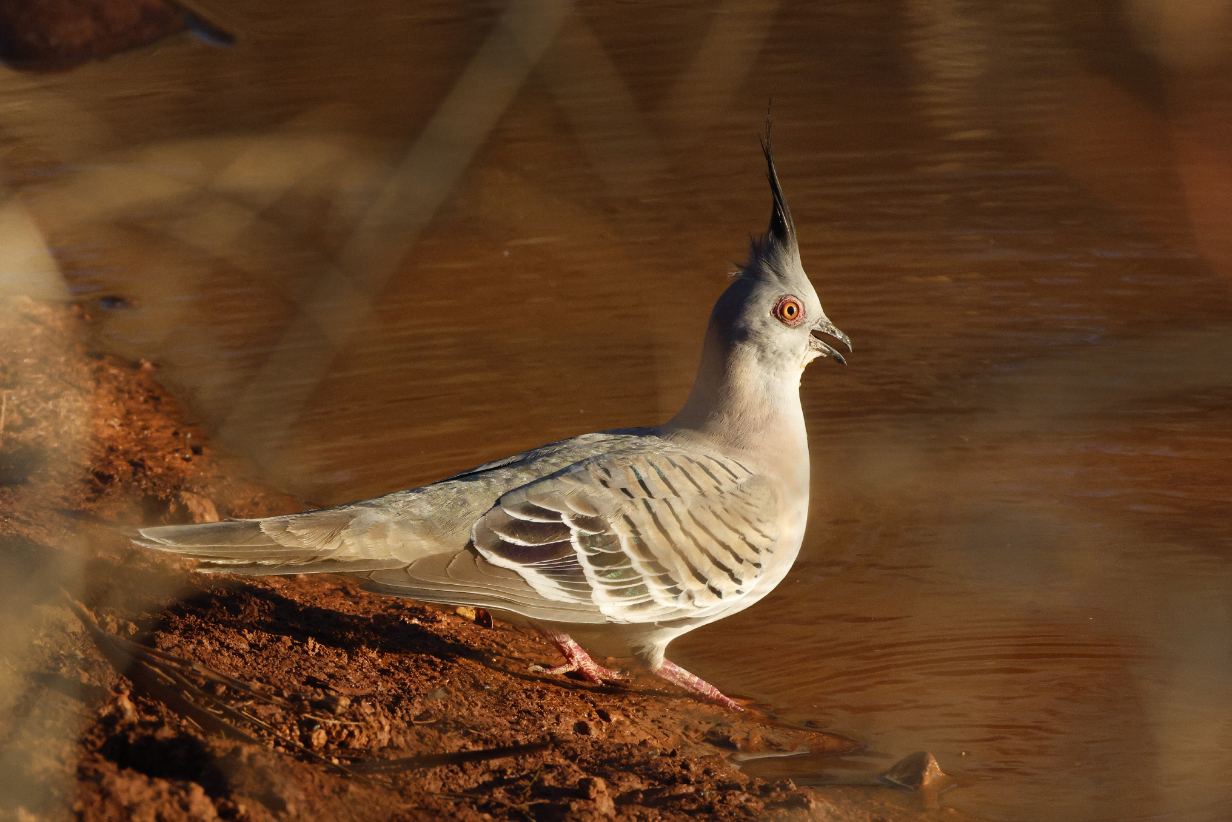
Among several other birds that came was this Crested pigeon.
But the prize birds that came was a covey of Brown quail. At first very hesitant, they edged slowly closer to the water. Eventually, all ~8 birds took long drinks ... and then discreetly wandered back into the bush. It was a magic moment, crowning a beautiful and productive day.
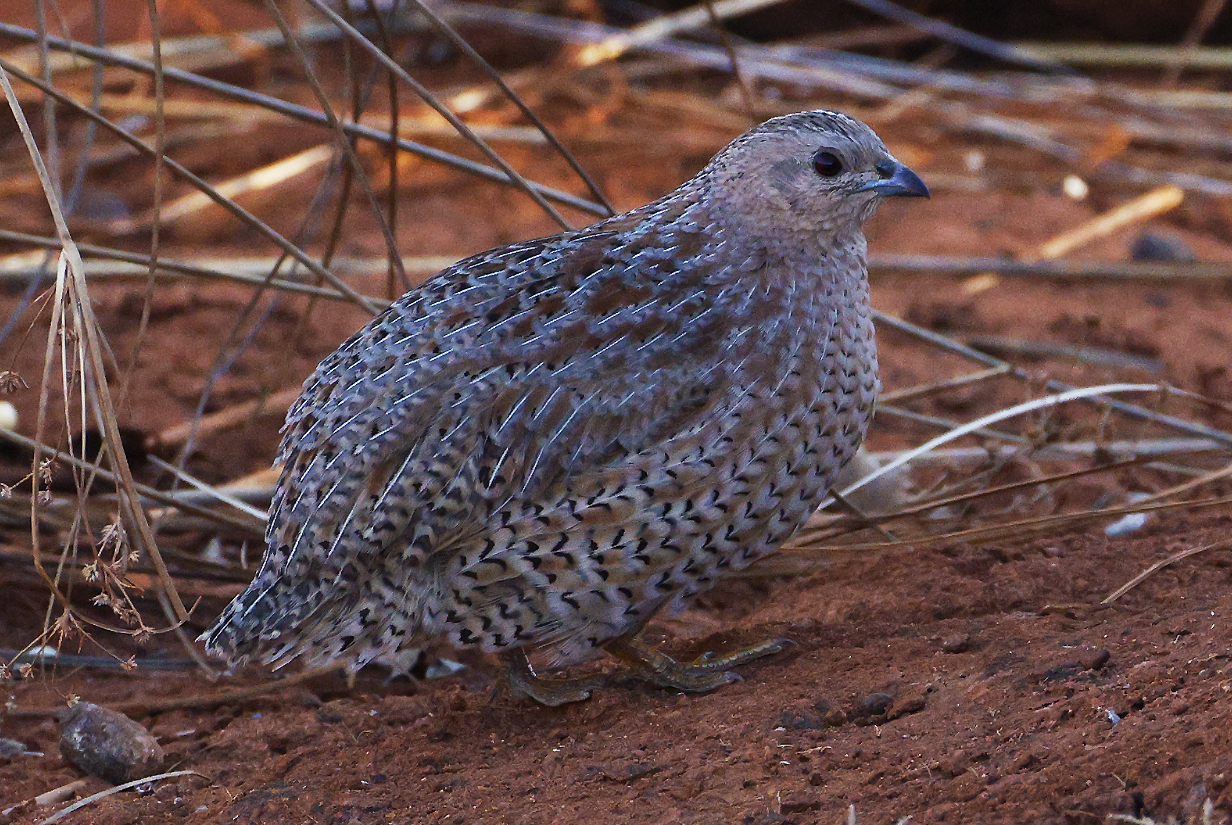
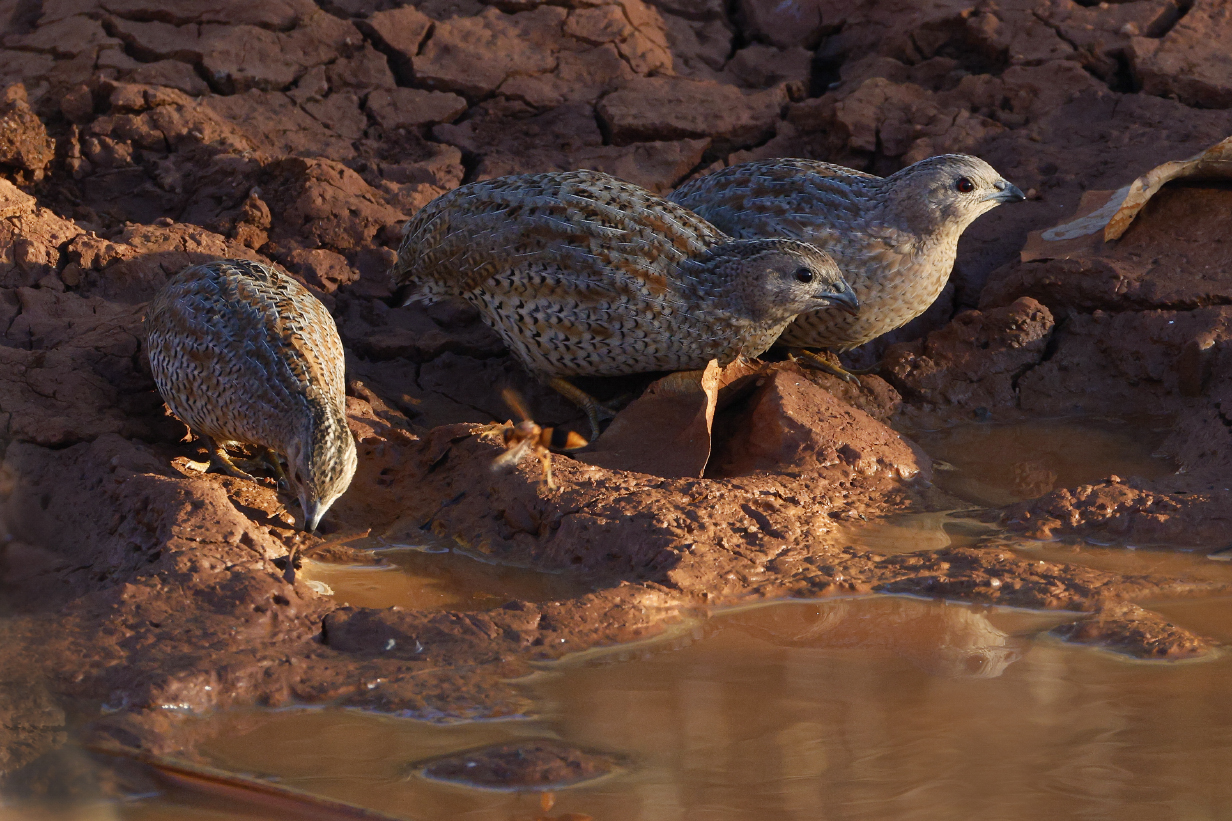
Brown quail
By the time the sun had set, everything was still and quiet.
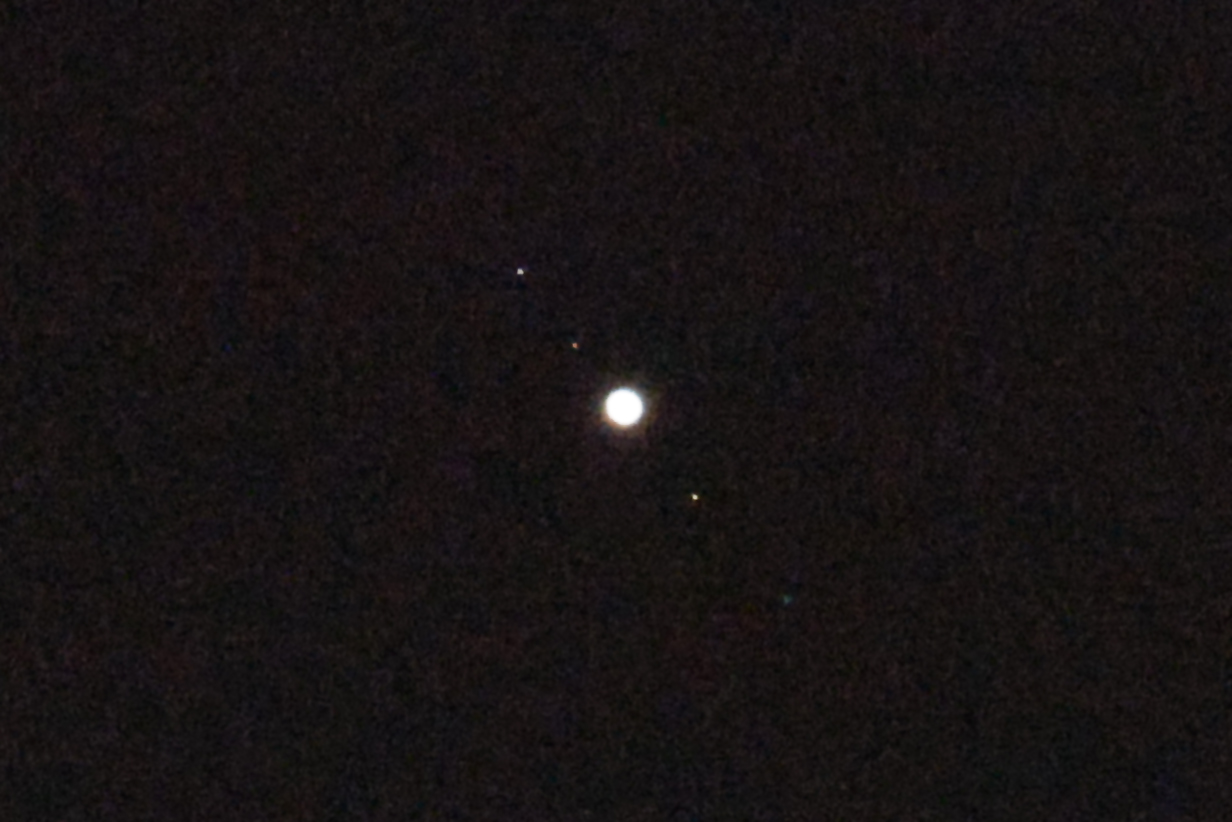
Like many mornings, the next morning started early in twilight. This gave me a chanced to see how well my Canon R5 Mark II and 200-800 mm telephoto lens do in photographing Jupiter. Happens I caught it at a time when the 4 Galilean moons were nicely visible and nicely positioned. The orange moon is presumably Io, on which volcanoes of yellow-orange sulfur compounds erupt almost continuously. Of course, the planet is overexposed, even when setting the camera an maximum underexposure (because it mostly sees and tries to compensate for black sky).
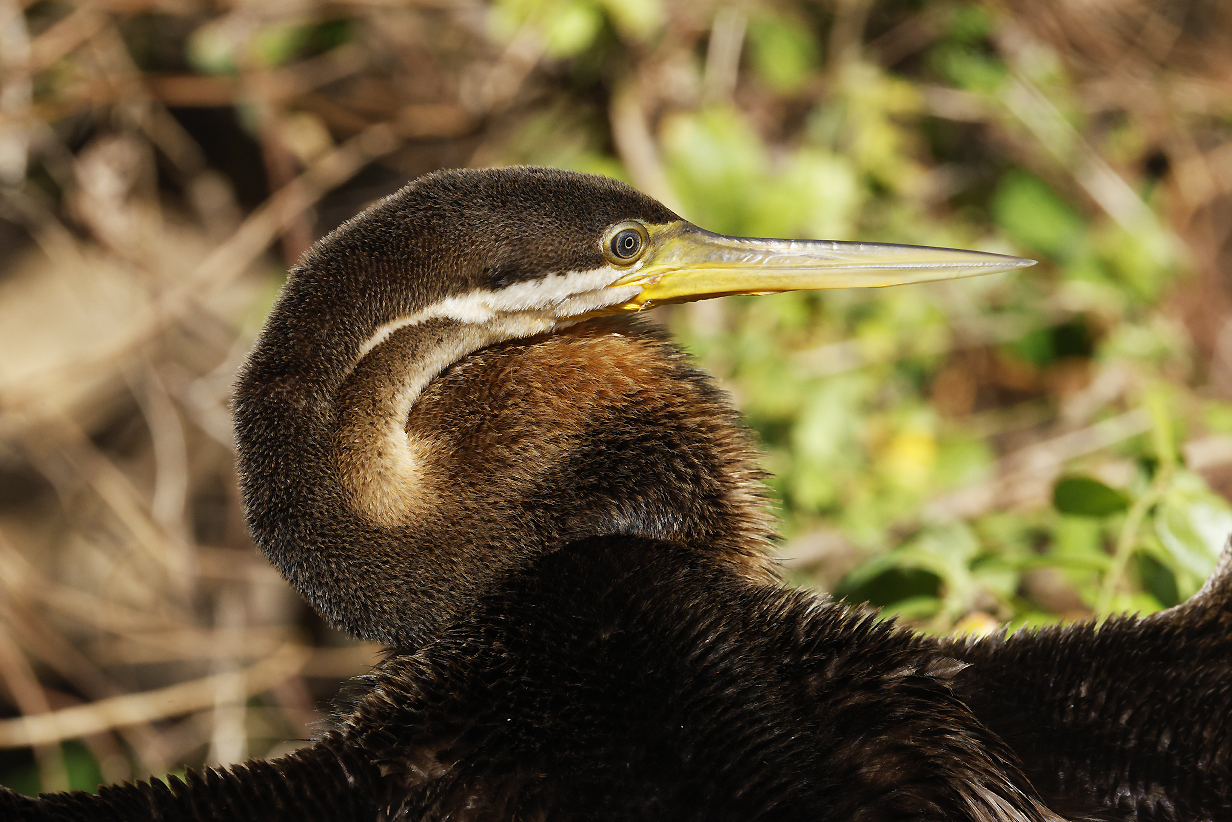
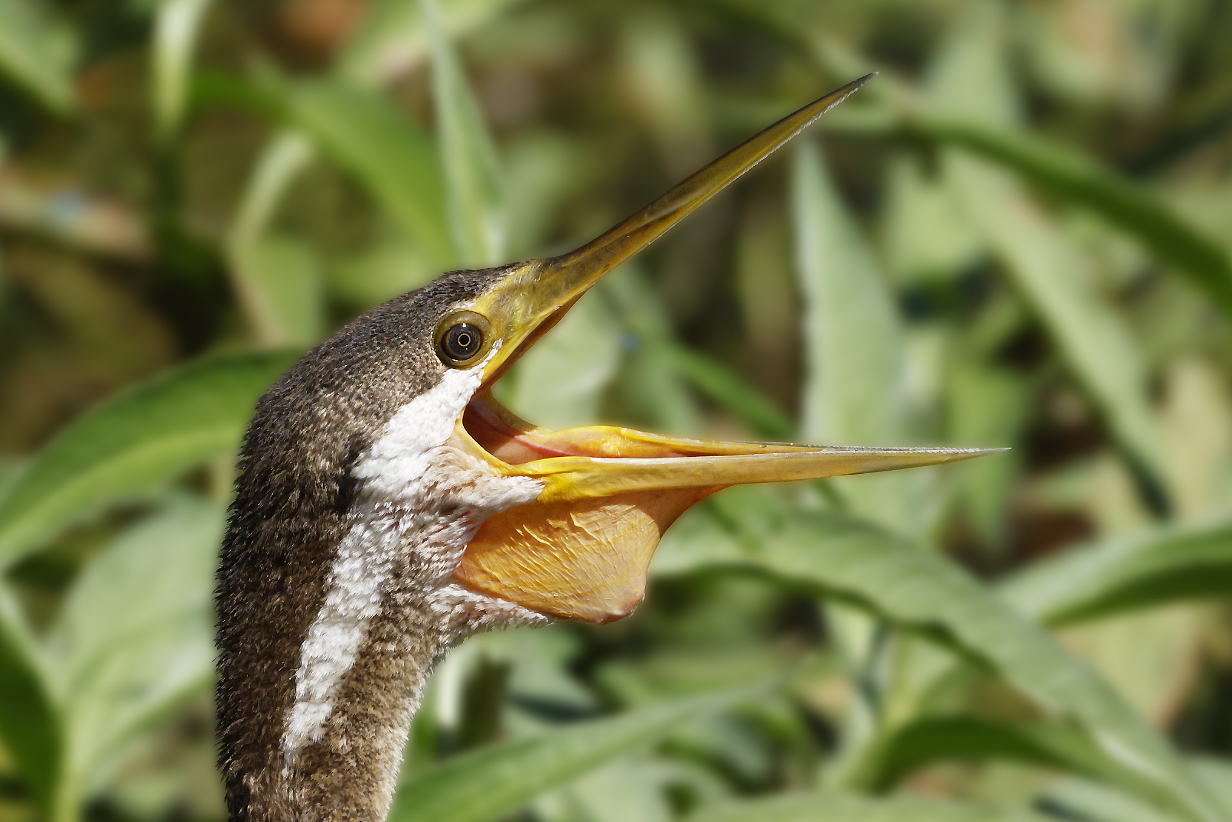
Australian darter at Marglu Billabong near Wyndham
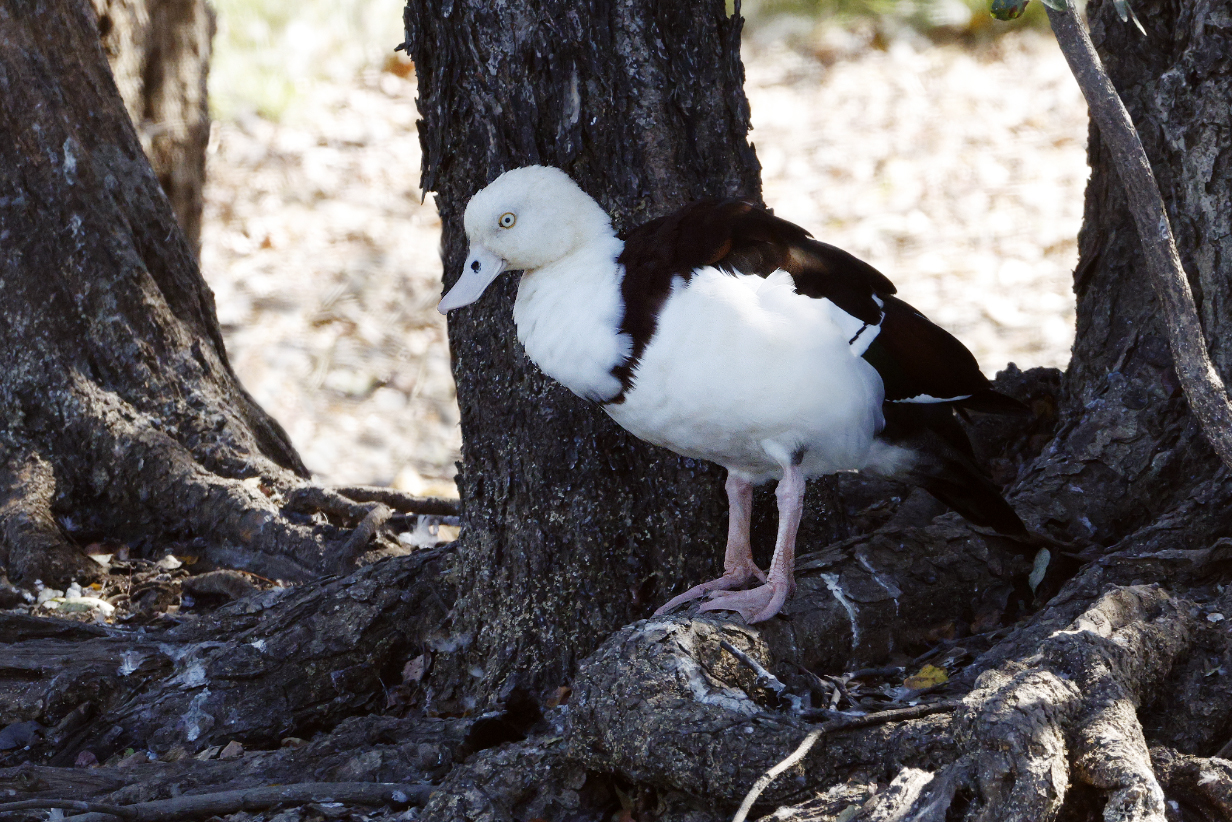
Radjah shelduck also at Marglu Billabong
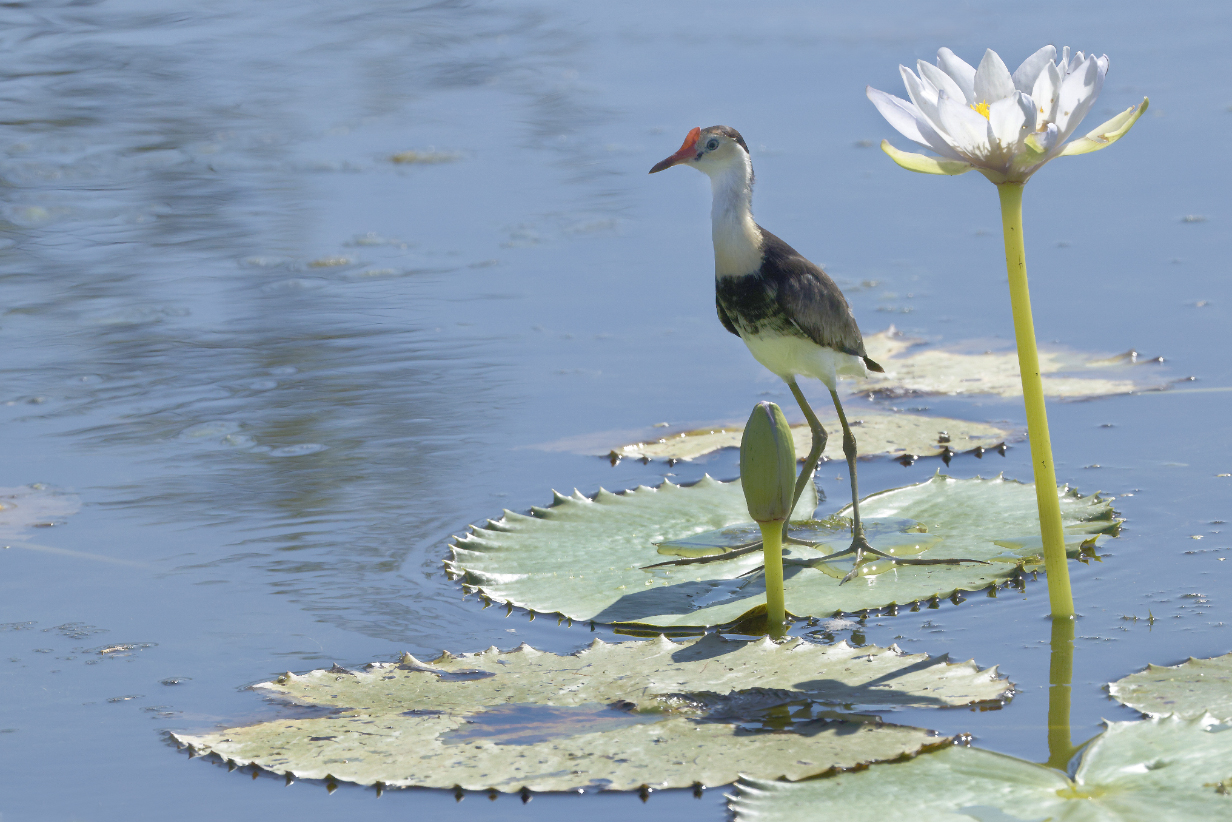
Comb-crested jacana
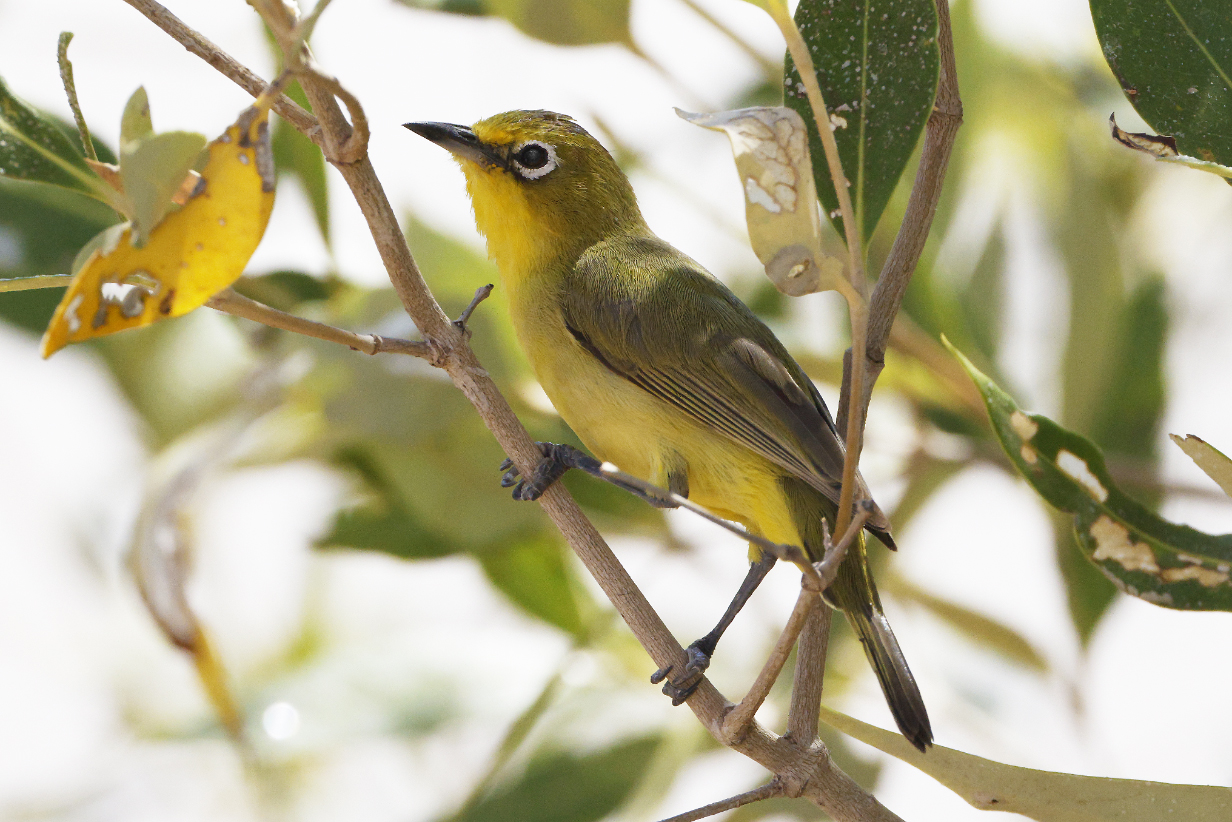
Australian yellow white-eye
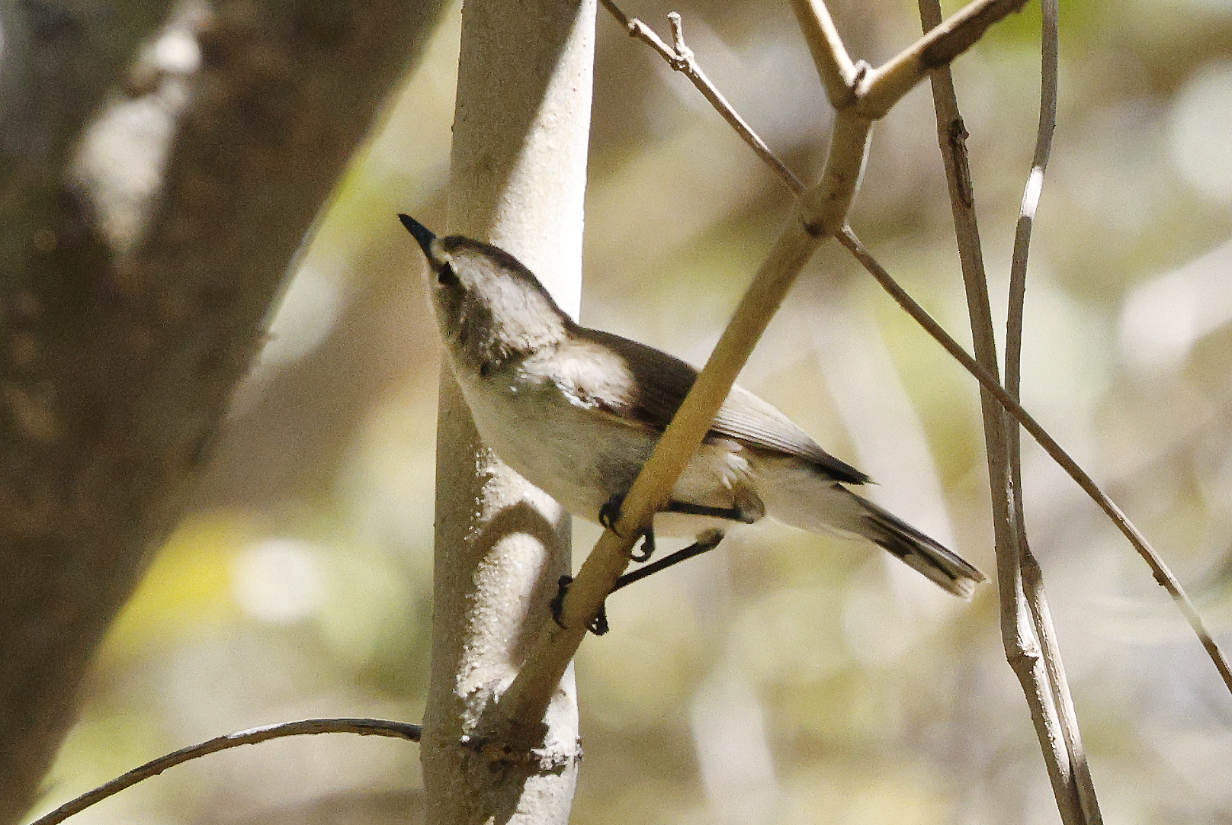
Mangrove gerygone (Note that the broken eye ring is connected to the beak by white lores. That's characteristic.)
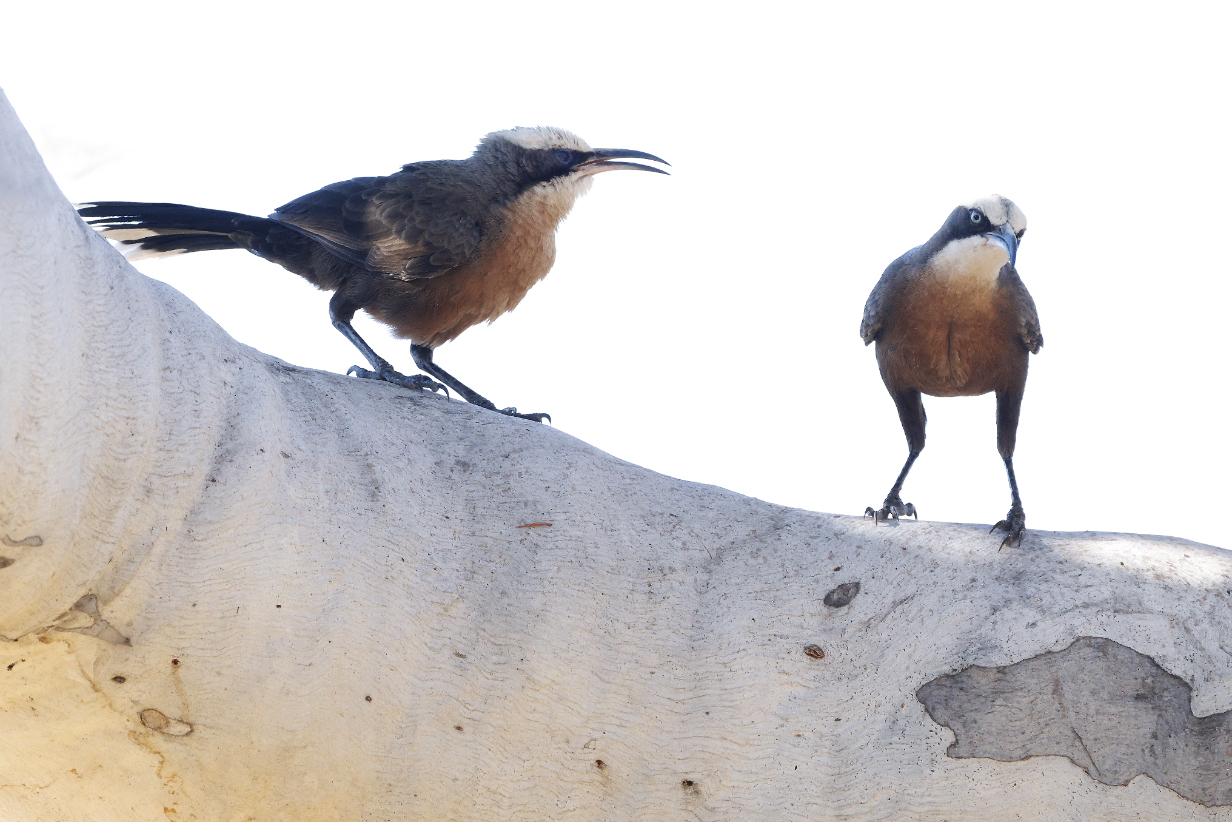
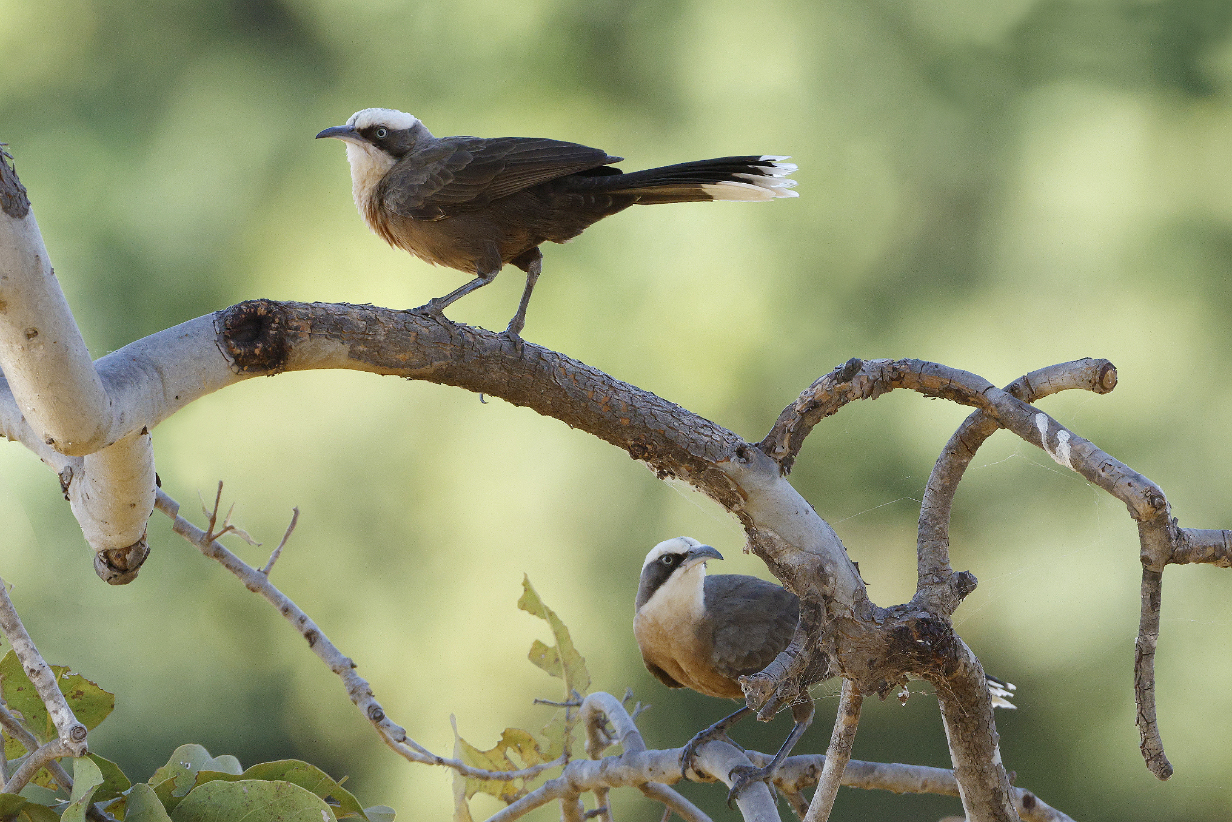
Gray-crowned babbler
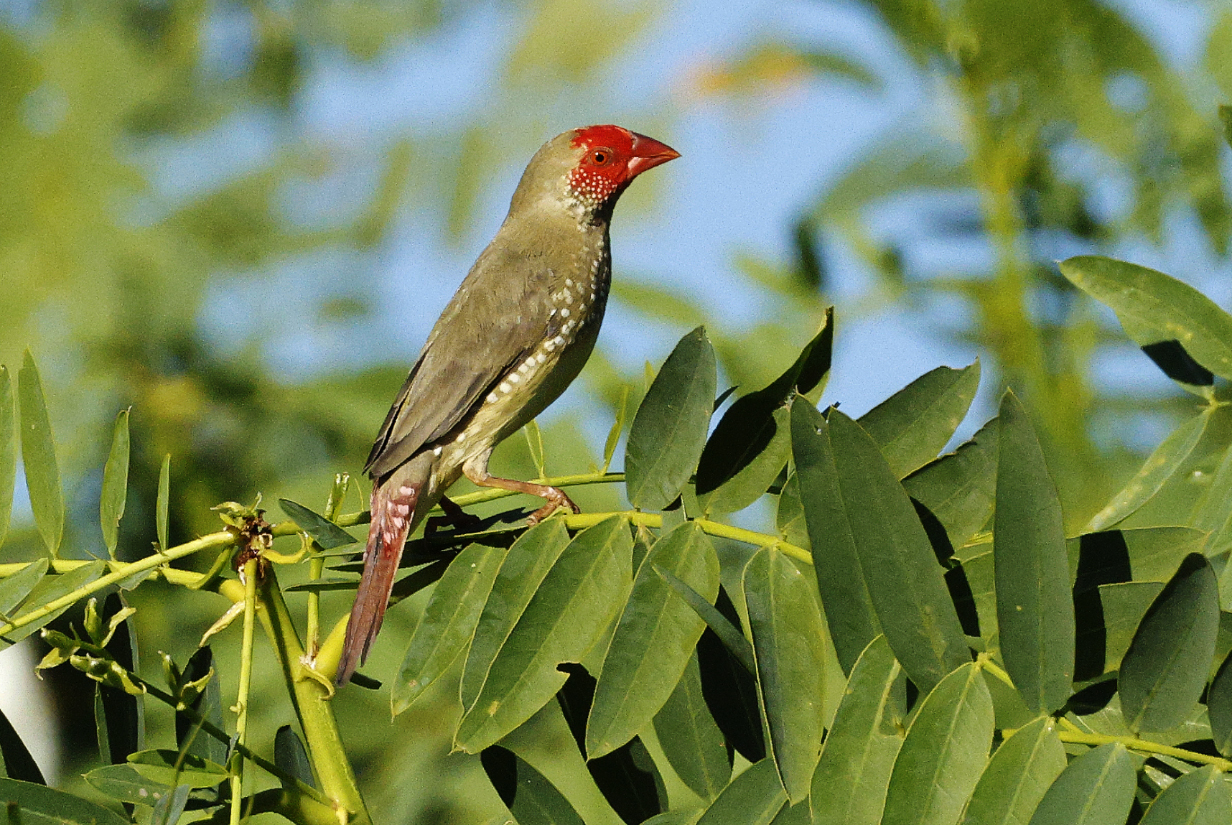
Star finch
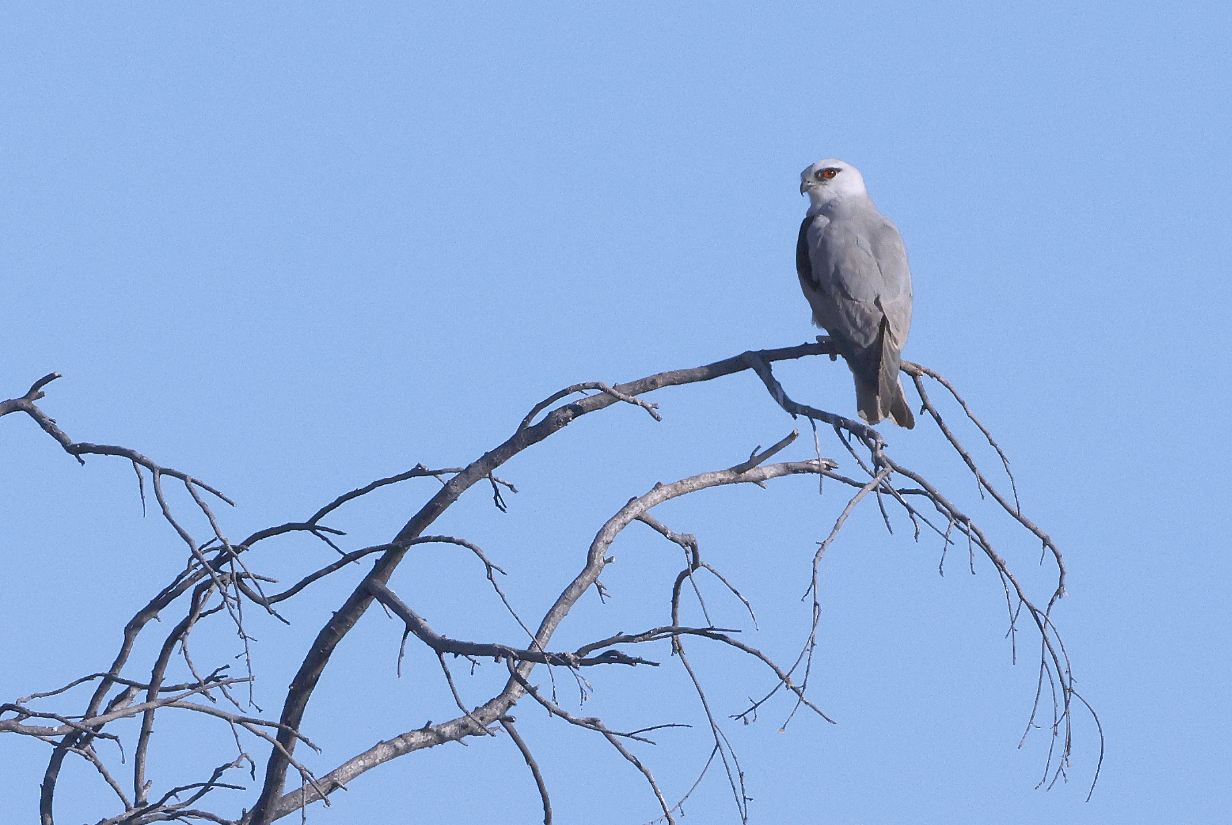
Black-shouldered kite
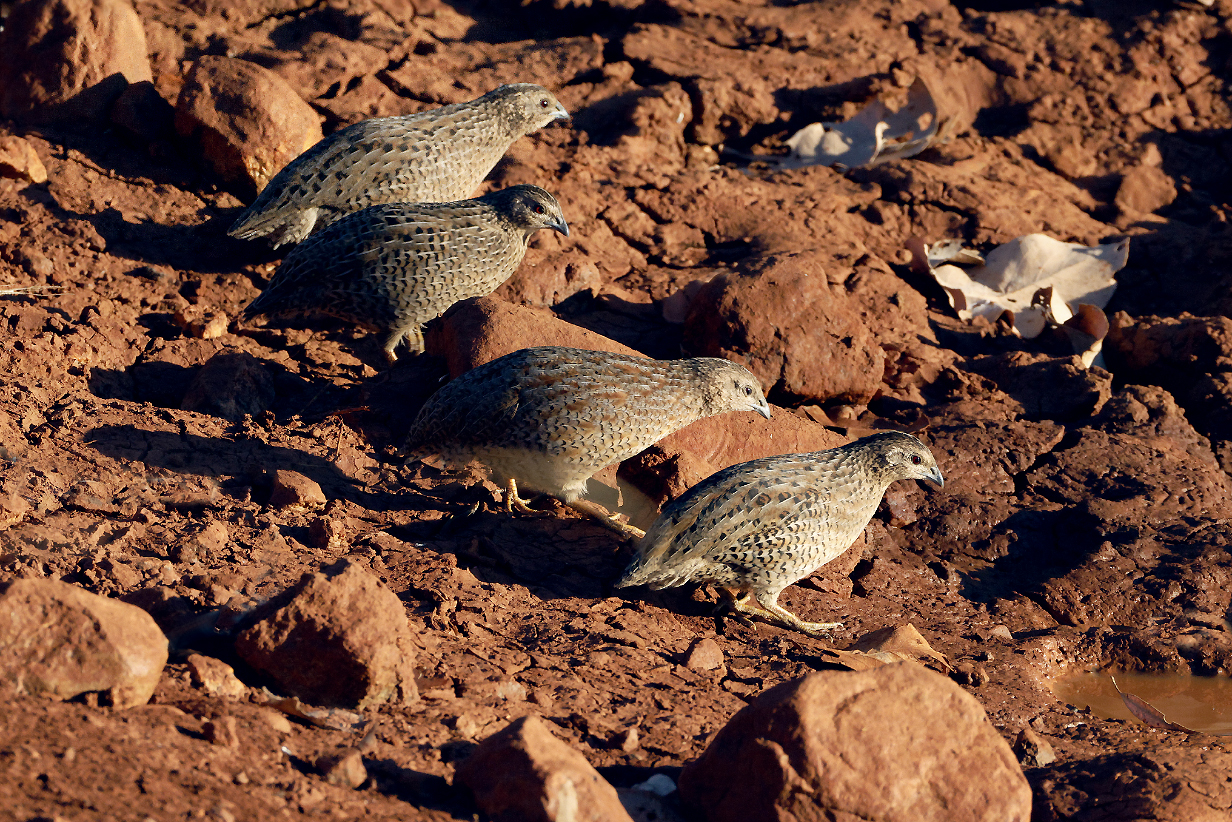
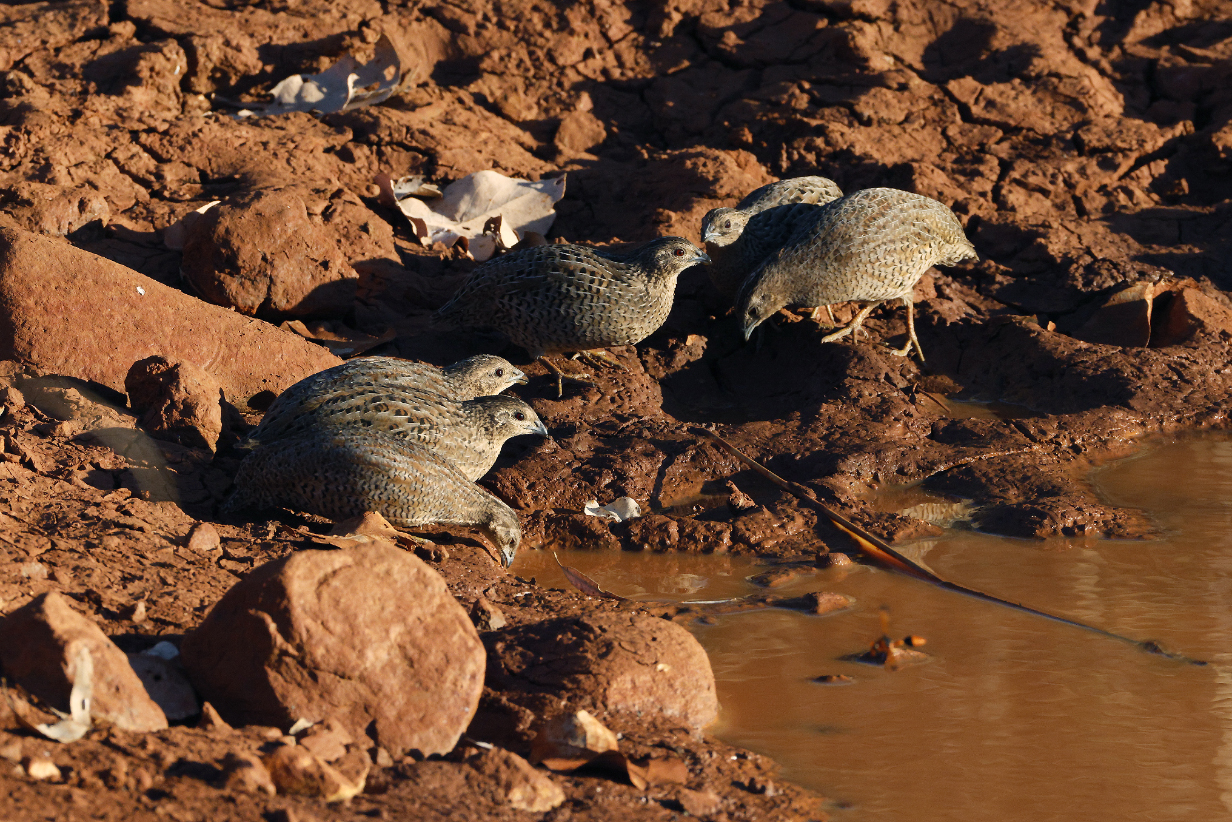
At the end of the birding day, we again spent 40 minutes or so at "our" water hole. We got there just in time: today, the Brown quail arrived within a few minutes and headed down to the water more confidently. They stayed only a short time and then vanished again in the bushes.
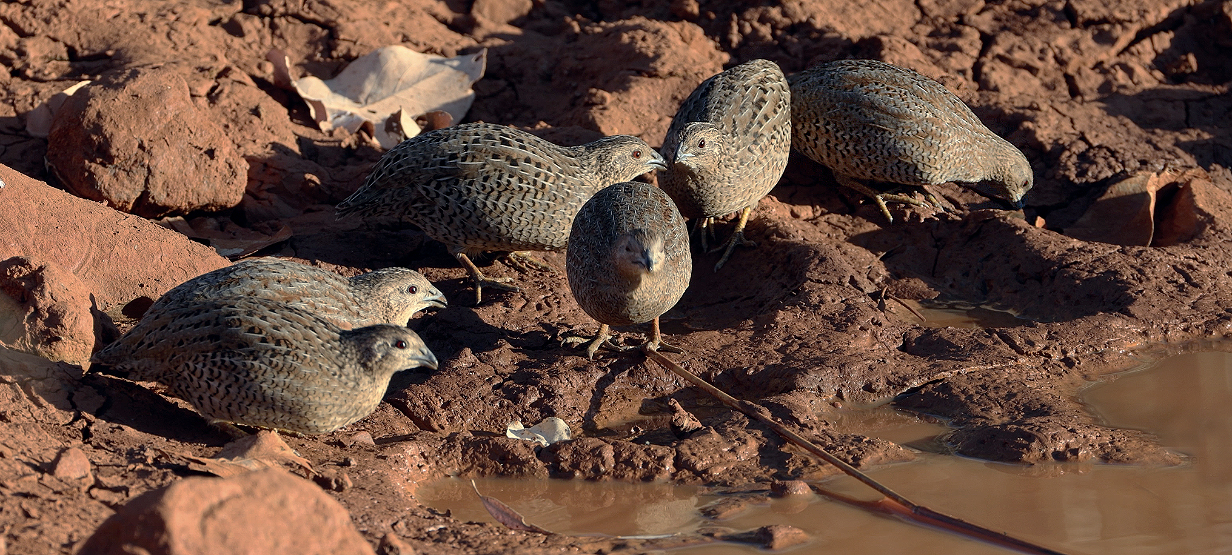
Movie 51 seconds long of Brown quail drinking
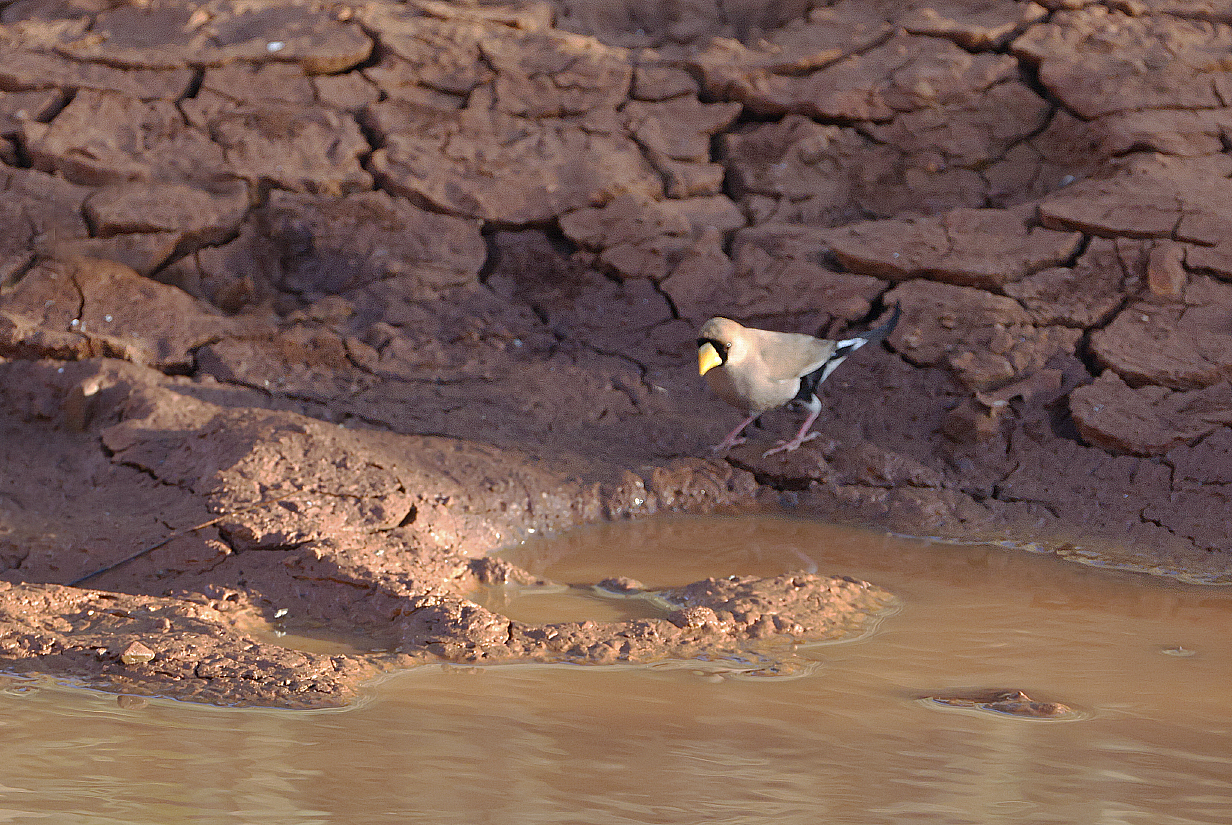
Masked finch (sorry: bad picture -- only a record of our sighting)
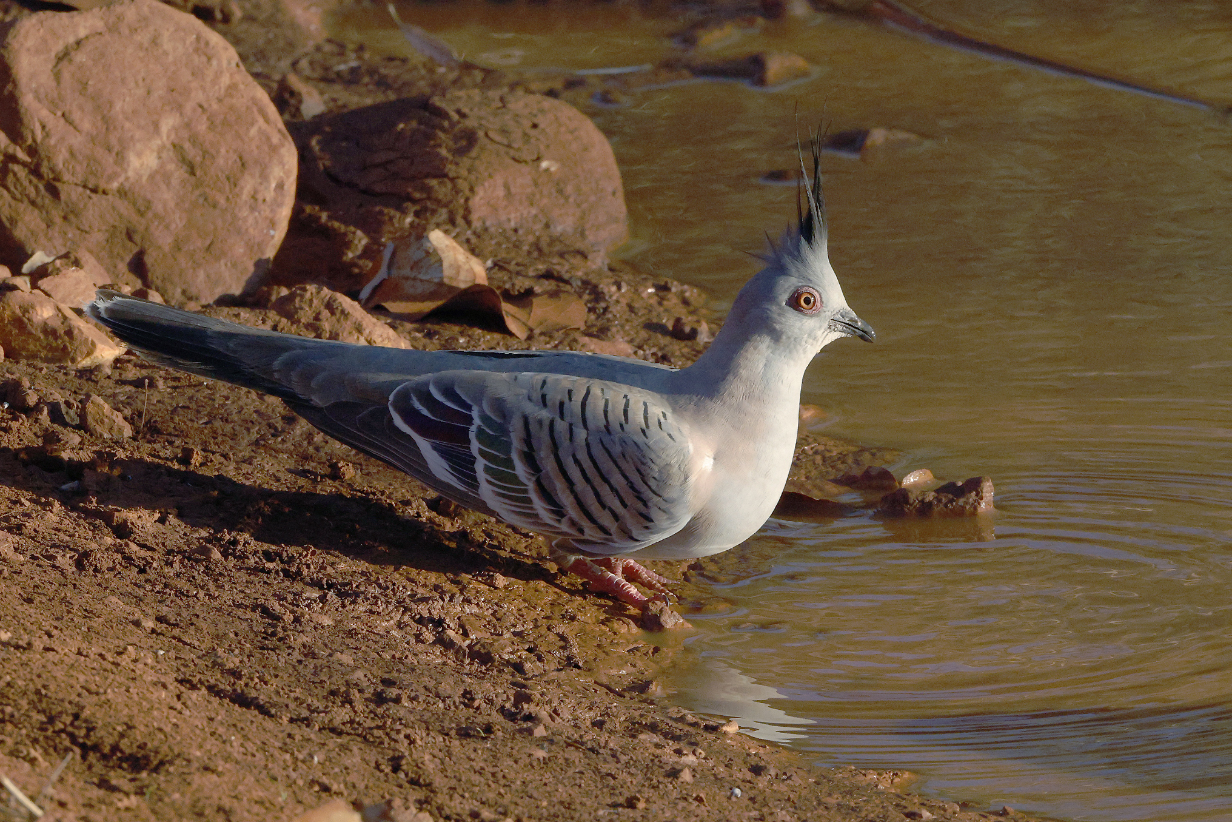
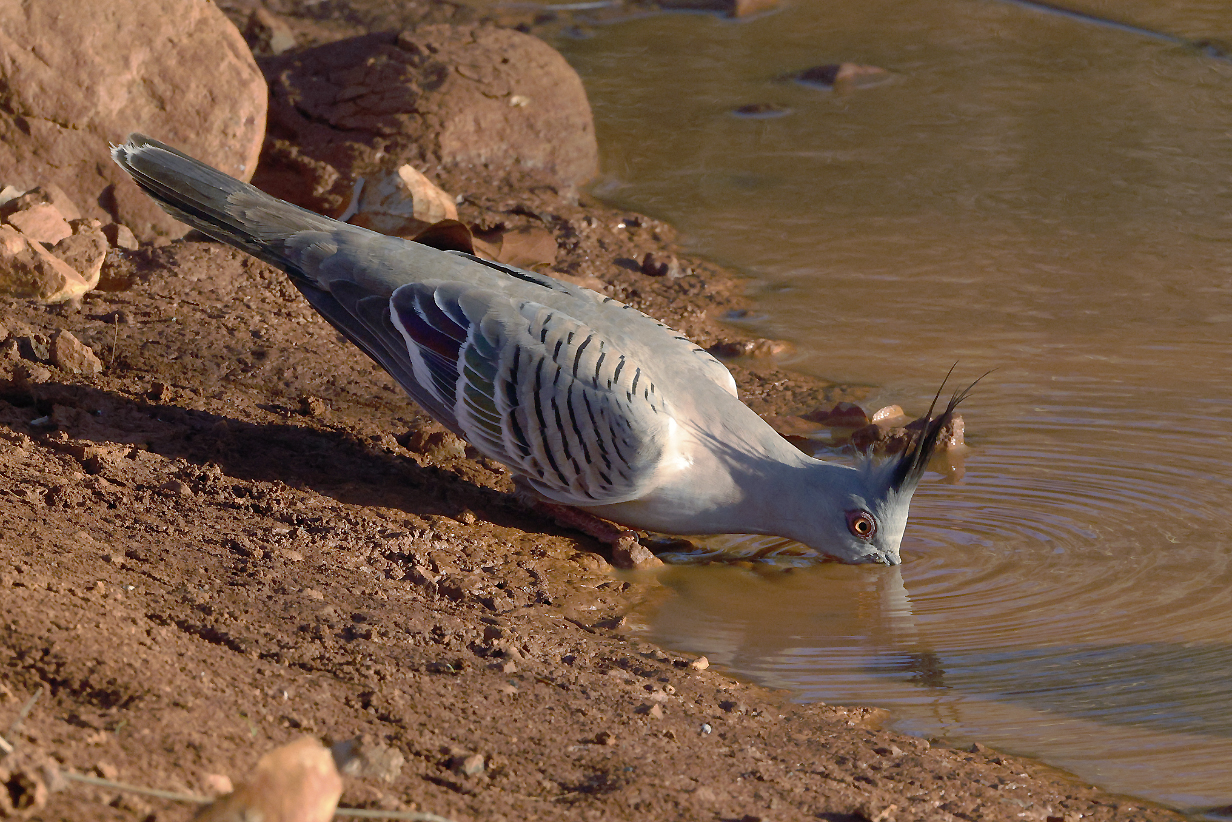
Crested pigeon came again to drink.
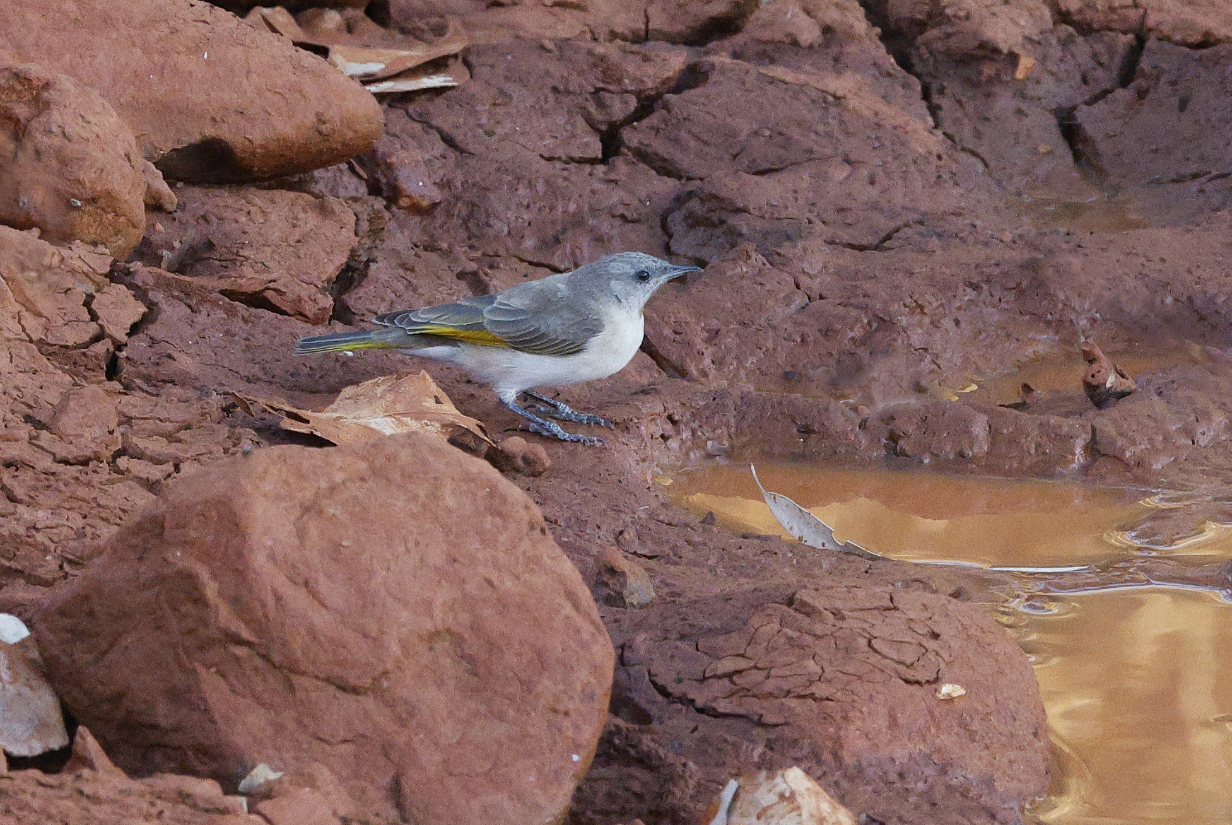
Rufous-throated honeyeater (female)
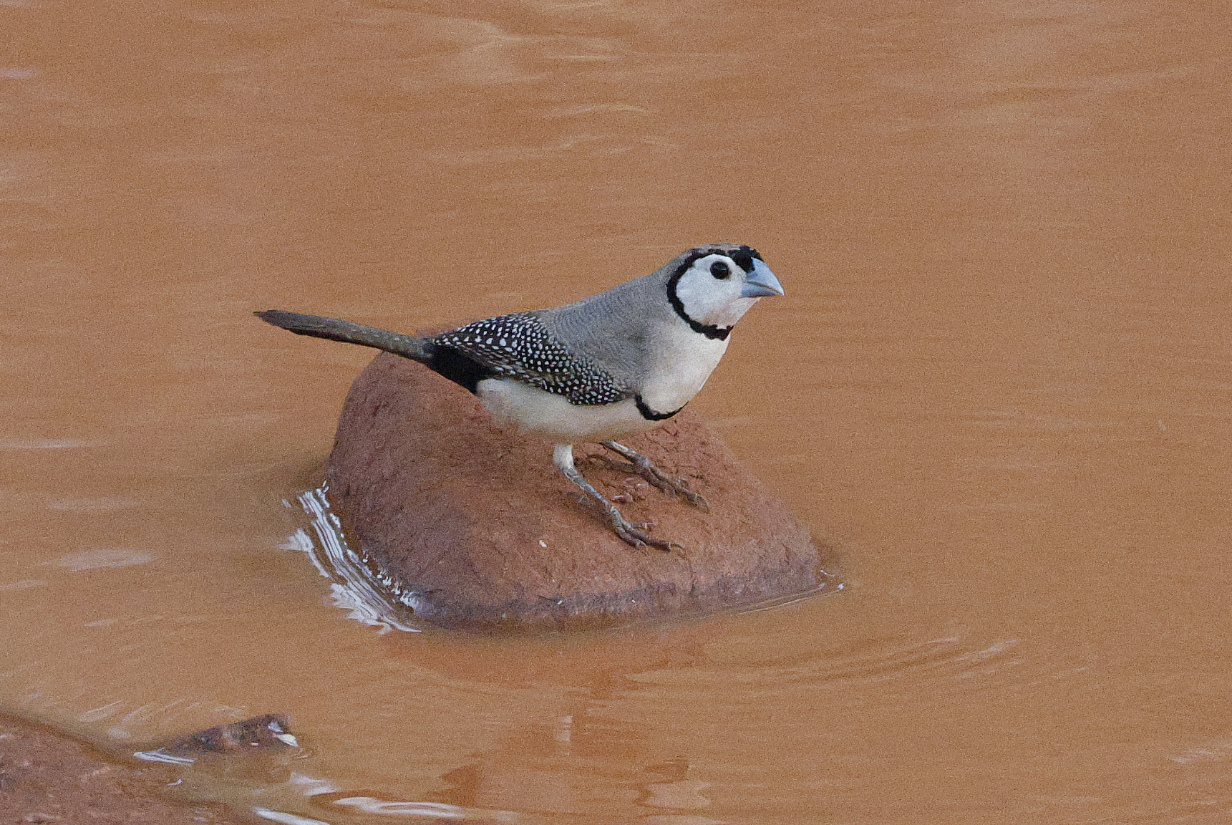
Double-barred finches were, as always, the most common birds to visit the water hole, here just before sunset, when it was getting dark enough to require high ISO speed and, hence to get grainy pictures.
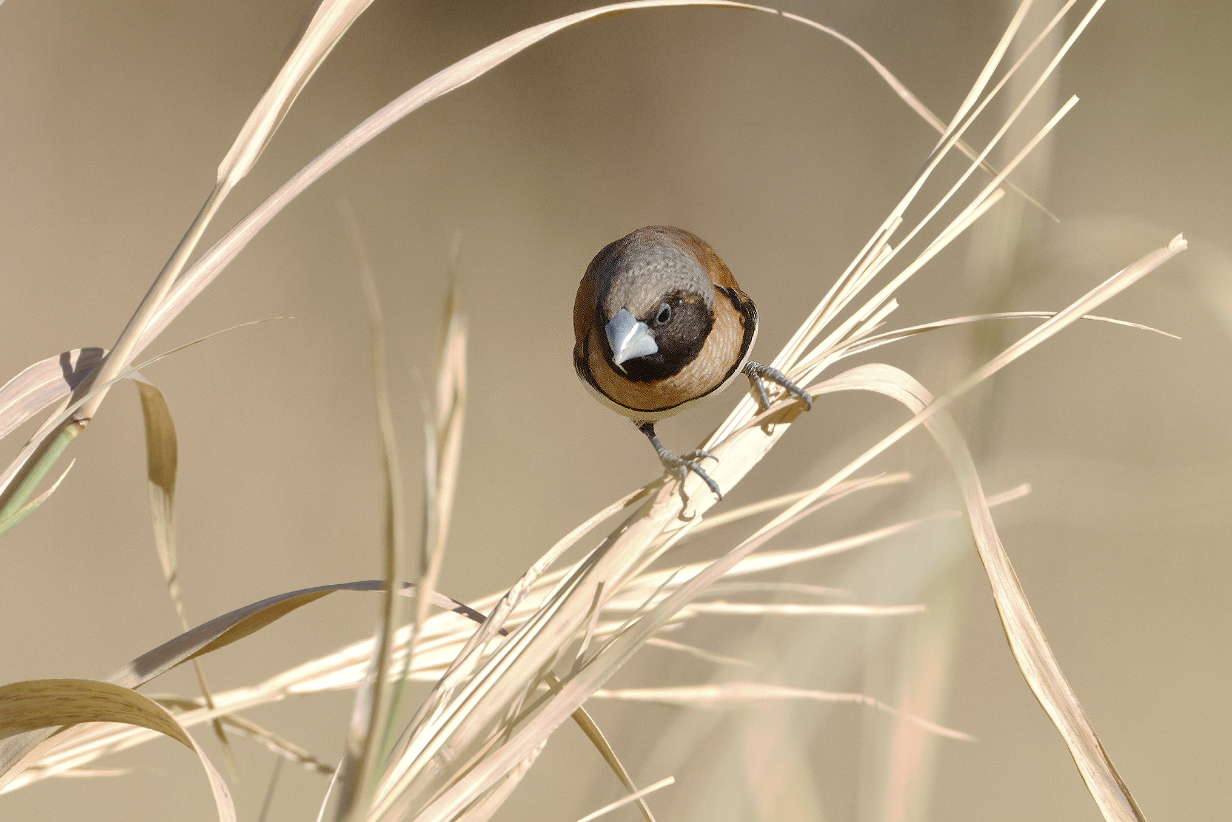
The next day -- 2025 August 12th -- required a 3 AM start, because we had to drive from Kununurra all the way back to Darwin, and because we wanted to be at Victoria River Road House early enough to have a good chance to see Purple-crowned fairy wren again. We succeeded (see below) and also saw this Chestnut-breasted mannikin (however briefly and not-very-well photographed) in the grasslands beside the river.
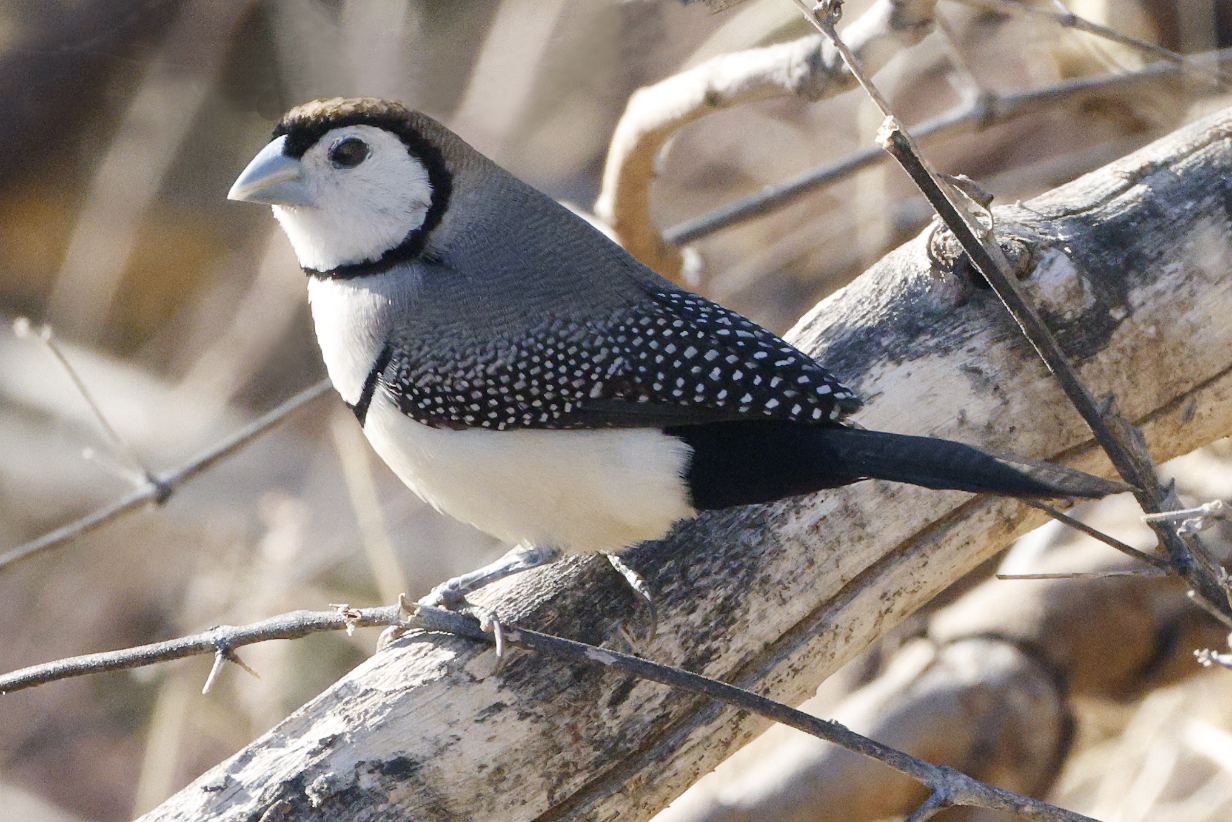
Double-barred finch
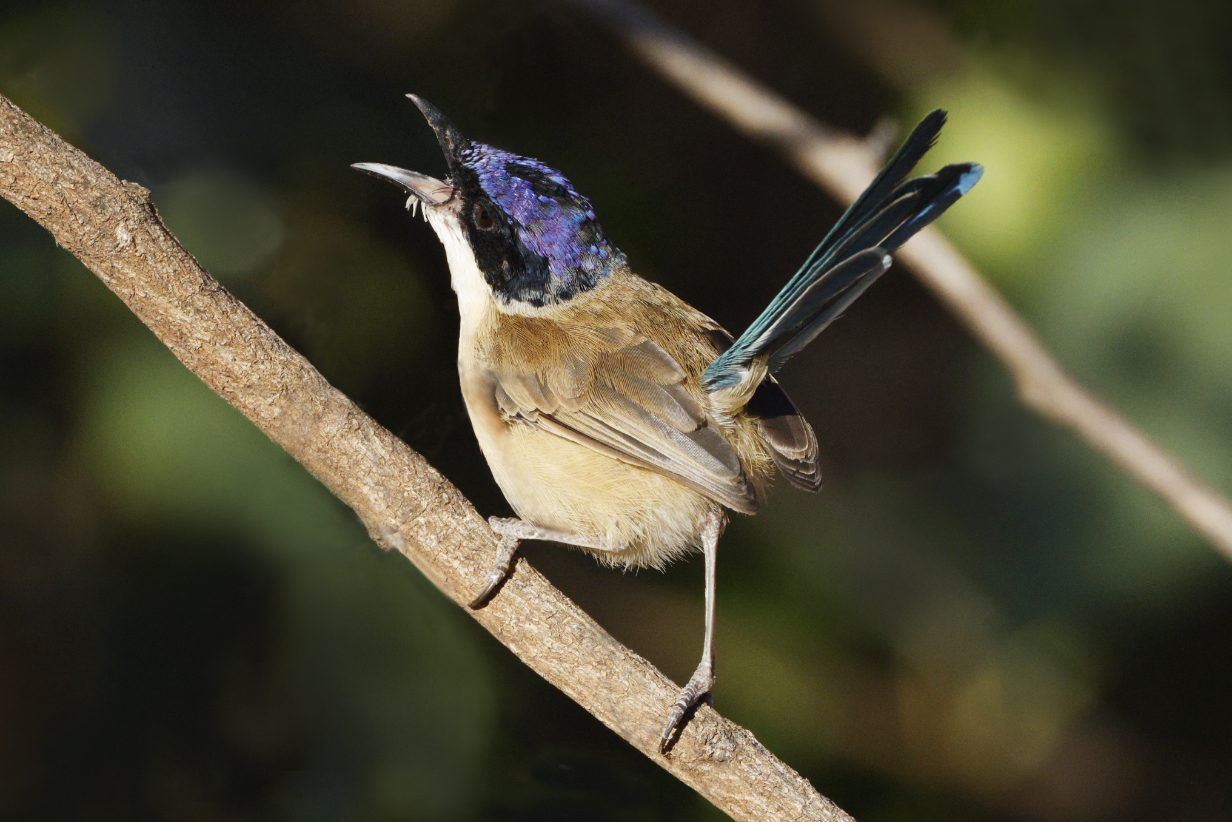
And we saw Purple-crowned fairy wren again at Victoria River Roadhouse on the way back from Kununurra to Darwin on the last day of our North End tour.
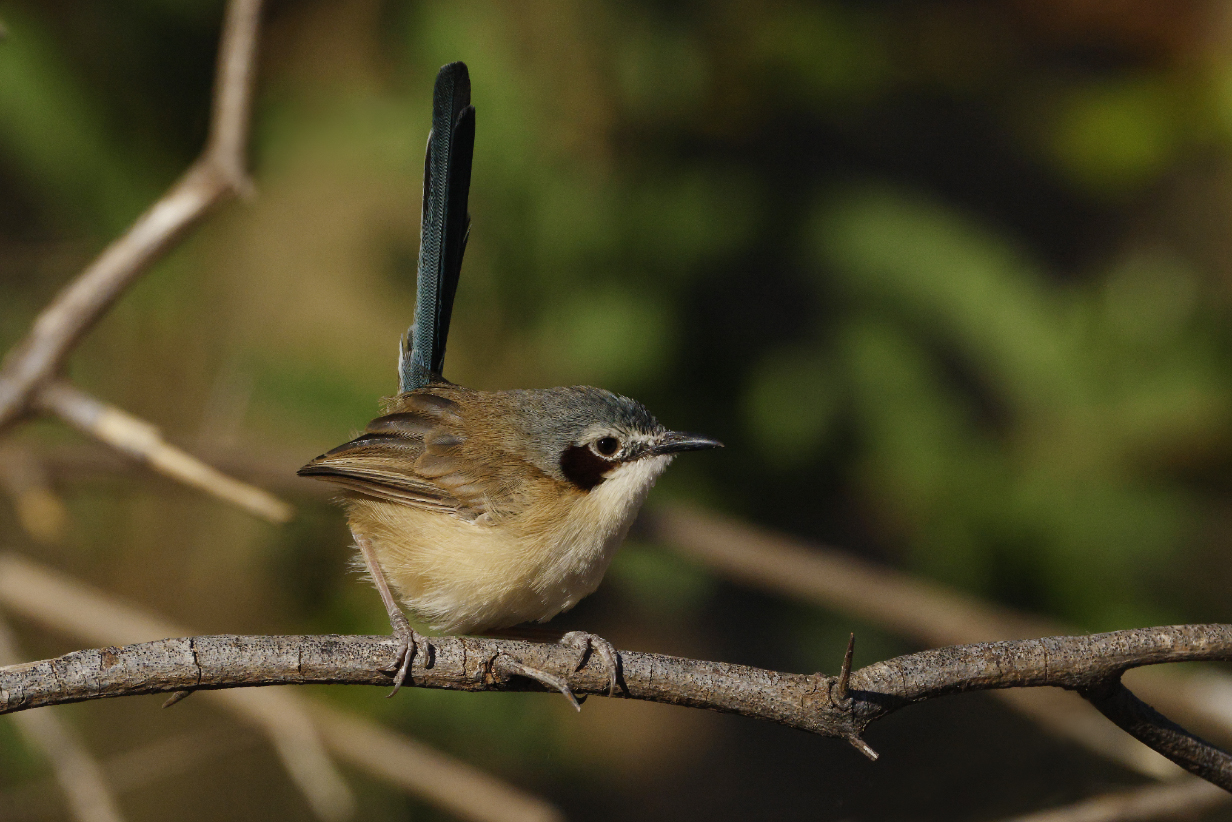
Purple-crowned fairy wren (female or non-breeding male)
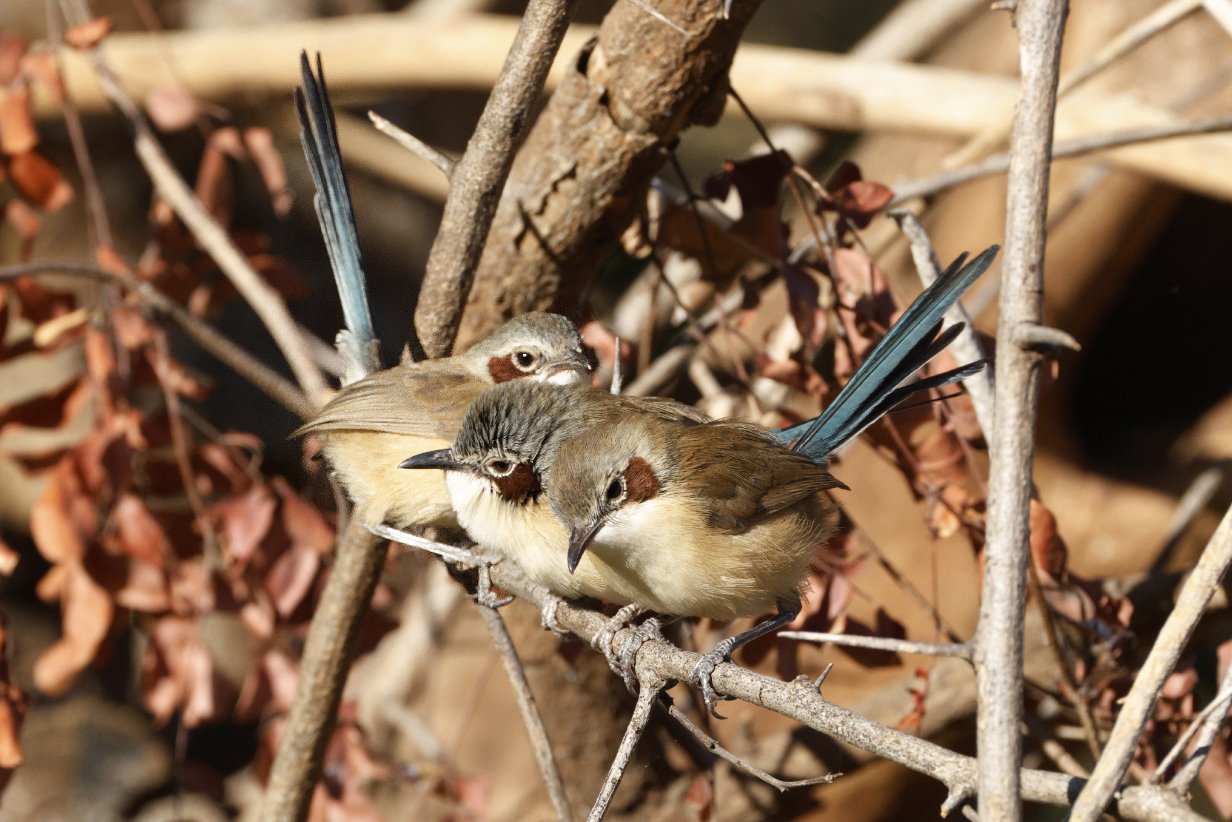
Purple-crowned fairy wren (3 females)
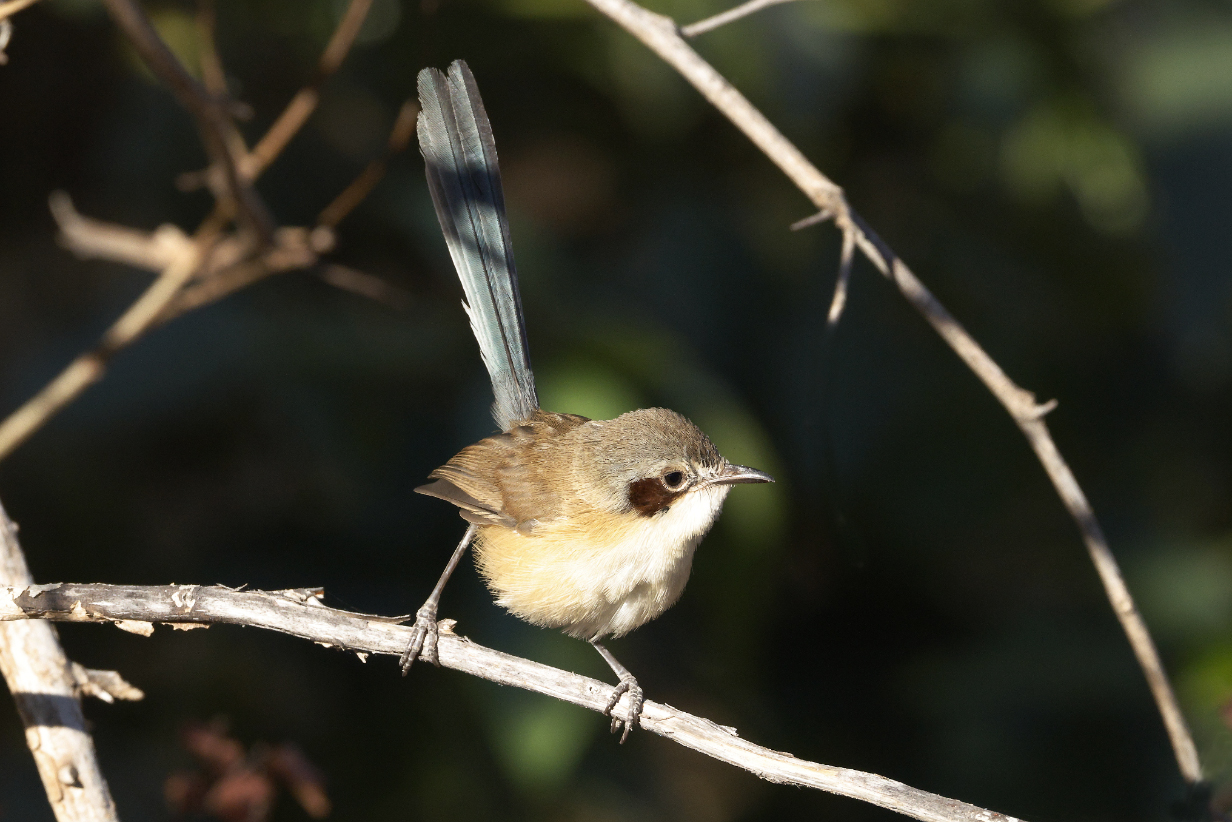
Purple-crowned fairy wren (female)
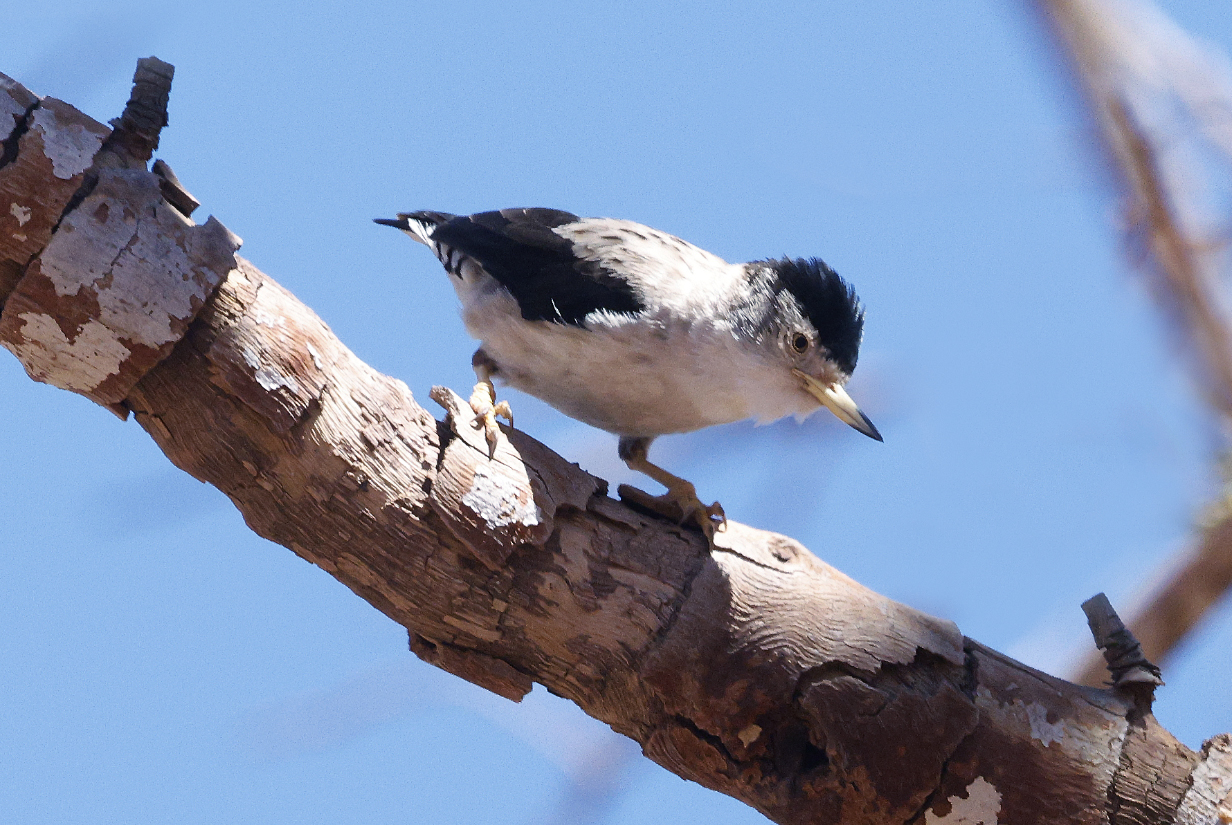
Varied sittella, which I had rarely seen and never photographed before. This was at a site south of Katherine where Northern shrike-tit had repeatedly been recorded; we looked for it earlier in the trip and tried again on the way back to Darwin. We again did not succeed ... but I did get this sighting and picture and the one that follows.
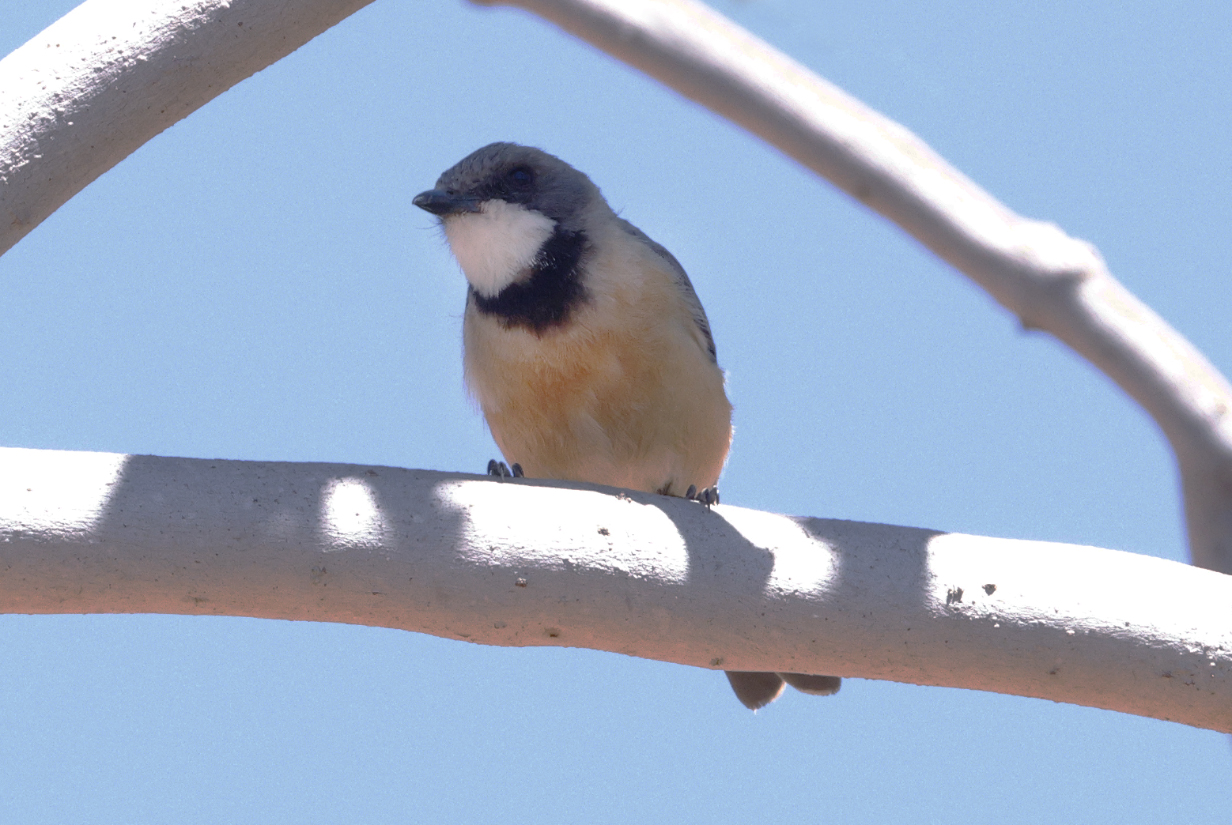
Male rufous whistler in harsh lighting (last picture of the North End tour)
Our bird pictures from around the world follow standard ecozones approximately but not exactly:
Birds from the USA and Canada: our house, Hornsby Bend and greater Austin, Texas, California, Hawaii, Canada,
Neotropic birds from Central America and the Caribbean: Honduras, Costa Rica, Panama, Trinidad and Tobago
Neotropic birds from South America: Ecuador, Ecuador 2017, Brazil.
Western palearctic birds: Europe: Germany, Finland, Norway, Europe: United Kingdom, Europe: Spain, the Canary Islands, Europe: Lesbos, Greece, Israel
Eastern palearctic birds: China
Birds from Africa: The Gambia, South Africa
Indo-Malayan birds from India: North-west (Delhi, Uttar Pradesh, Uttarakhand) India: North-east (Assam, Arunachal Pradesh, Meghalaya) India: Central (Maharashtra, Madhya Pradesh)
Birds from Australia, New Zealand.
For our 2014 December trip to India, see this travelog.
For our 2016 May-June trip to India, see this travelog.
For our 2017 April trip to High Island, Texas, see this web site.
For our 2018 March trip to India, see this travelog.
For our 2018 May trip to China, see this travelog.
For our 2018 October trip from Munich to Budapest, Hungary see this travelog.
For our 2018 November trip to China, see this travelog.
For our 2019 April trip to High Island, Texas, see this web site.
For our 2019 July trip to China, see this travelog.
For our 2021 April trip to High Island, Texas, see this web site.
For the 2021 August 3 & 4 migration of Purple martins through Austin, see this web site.
For our 2021 December trip to Ecuador, see this web site.
For our 2022 January-February trip to Peru, see this web site.
For our 2022 July/August trip to Australia and Papua New Guinea, see this web site.
For our 2022 September trip to Bolivia, see this web site.
For our 2022 November-December pre-trip to Argentina (before our Antarctic cruise), see this web site.
For our 2022 November-December cruise to Antarctica, see this web site.
For our 2023 January birding in Chile, see this web site.
For our 2023 January-March cruise from Chile to Antarctica and around South America to Miami, FL, see this web site.
For our 2023 March-April birding in south Florida (after the Seabourn cruise), see this web site.
For our 2023 November-December birding to Sri Lanka, the Andaman Islands, and South India, see this web site.
For John's 2024 February-March birding in Colombia, see this web site.
For our 2024 May-June cruise from Iceland to Jan Mayen Island to and around the Svalbard Archipelago, see this web site.
For our 2024 June 25-30 stay in Paris, see this web site.
For our 2025 April 21 - May 3 trip to High Island, Texas, see this web site.
For our 2025 July vacation and birding in Singapore, see this web site.
For our 2025 August birding in north-west Australia, see the present web site.
For our 2025 August-October Seabourn cruise from Australia to Chile, see this web site.
For our 2026 January-February trip to New Zealand and 3rd cruise to Antarctica, see this web site.